- Accueil
- Base de données
- 22
- USAAF
- 17th May 1943
17th May 1943
Boeing B-17F-60-BO "Midnight" (s/n 42-29627 code GL-?)
Plourin-les-Morlaix, "Kervellec" (22)
(contributor : Daniel Dahiot)
Crew (94th BG, 410th BS)
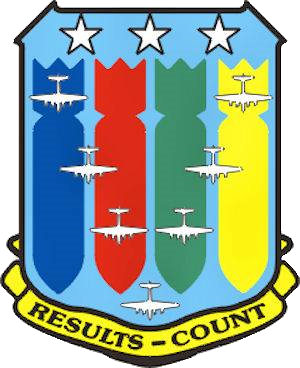

94th BG Photo © American Air Museum - UPL 15149 410th BS Photo © American Air Museum - Roger Freeman Collection FRE 5088
- (Pilot) 1st Lt. Edward J. SPEVAK (service number O-730185), born on 14/10/1919 - Rupert, Idaho (USA),
escaped via Spain with the help of the "Bourgogne" network. Back in England on August 12, 1943
- (Co-pilot) 2nd Lt. Donald Lee NICHOLS (service number O-734126), born on 17/03/1922 - Perkins, Oklahoma (USA),
escaped via Spain with the help of the "Bourgogne" network. Back in England on August 21, 1943
- (Navigator) 2nd Lt. Homer CONTOPIDIS (service number O-795207), born on 16/02/1920 - Bronx, New-York City, New-York (USA),
escaped via Spain with the help of the "Bourgogne" network. Back in England on June 29, 1943
- (Bombardier) 2nd Lt. Allen M. POSEY (service number O-732971), from Louisiana,
P.O.W. in Stalag Luft 3 Sagan-Silesia
- (Flight engineer - top turret gunner) T/Sgt. Frederick James FORD (service number 16038617), born on 31/12/1921 - Illinois (USA),
P.O.W. in Stalag Luft 3 Sagan-Silesia
- (Radio operator) T/Sgt. Lewis Jay TANEY (service number 12057398), born on 11/05/1921 - New-York (USA),
wounded, hospitalized then P.O.W. in Stalag 17B Braunau Gneikendorf.
- (Ball turret gunner) S/Sgt. John Henry WELLS (matricule 18008741), born on 30/06/1921,
wounded, hospitalized then P.O.W. in Stalag 17B Braunau Gneikendorf
- (Waist gunner) S/Sgt. Joseph C. MELAUN (service number 20820570),19 years old, born on 15/08/1923 - Dallas, Texas (USA),
killed in the aircraft during the attack. Buried in Lee Cemetery, Seagoville, Dallas County, Texas (USA)

Photo source © Find a Grave - Nipp family
-(Waist gunner) S/Sgt. Donald C. PARKS (service number 39314186) - Oregon (USA),
P.O.W. in Stalag 17B Braunau Gneikendorf.
- (Tail gunner) S/Sgt. Walter E. MINOR (service number 31134430), born on 25/07/1917 - Halifax, Massachusetts (USA),
escaped via Spain, Gibraltar, back in England on June 29, 1943.
Another source, unlikely if the following evasion reports are to be believed, indicates that John Henry Wells was not on board but it was T/Sgt Charles J. Morris. But, according to the American Air Museum, Charles J. Morris was shot down and killed aboard B-17 # 42-29715 on June 13, 1943 near Kiel (Germany). Also note that the American Air Museum indicates different positions to the crew members compared to the evasion reports ; the AAM specifies : Spevak pilot, Contopidis co-pilot, Nichols bombardier, Minor tail gunner, Posey navigator, Ford top gunner, Morris (or Wells?) radio operator, Taney and Parks waist gunners and Melaun (or Melvin) ball turret gunner.
THE STORY
17th May 1943, Edward J. SPEVAK's report
Source : evasion report of Edward J. SPEVAK, dated 16 August 1943 - website France-Crashes 39-45 (see appendices below).
We left Thurleigh at 0800 hours, 17 May 1943, to bomb Lorient. Our aircraft was directly above another plane over the target so we didn't drop our bombs until leaving the target. I don't know whether they were fused. Our number one engine, hit by flak, caught fire, wouldn't feather and very soon ran away. Number three engine started smoking but was feathered. Gradually we lost formation. Number one ran wild and was tearin off. Fighters came in - fifteen or twenty of them. They hit the controls and set the cockpit and radio room on fire. It seemed a matter of seconds before the number one engine would fall off. The plane was being riddled with bullets and a 20 mm shell came through the cockpit but did not explode. I ordered the crew to bale out.
After all were out except the waist gunner who was killed in the plabe, the co-pilot and I went to the escape hatch and when I got stuck in the opening he pushed me through. We had baled out at 13,000 feet and I opened my chute immediately. I saw seven chutes in the air before landing in the street of a small village several miles from Morlaix. After gathering up my chute I ran out of the village into the brush with a few of the viallagers following me.Three of these friends hid me in a clump of trees where I remained until dark when they moved me to a house in the village. There I met two members of my crew. The sergeant had very bad shrapnel wounds.
We spent the night in the house but early the next morning were hidden in a wheat field. I had watched during the previous afternoon as many as twenty-five Germans on bicycles searching the area. They were unorganized and seemed to hunt individually. The second day while I was in the wheat field with my two crew crew members there was a more organized search which moved systematically along hedgerows and through the bushes. Planes were used in the search and at intervals during the day low flying aircraft passed overhead.
This second night we left the area walking east. Just at dawn we approached a farmhouse after looking it over carefully. We were given food and hidden in the house during the day. We continued this for three days, walking at night and stopping for help in the early hours of the morning. During the third night we walked through Callac and some hours later stopped in a small village where the people who took us in sent for a man who could help us. After he had questioned us our journey was arranged. After a few days I was separated from my crew members and have not seen them since.
17th May 1943, Donald L. NICHOLS' report
Source : evasion report of Donald L. NICHOLS dated 21st August, 1943 - website France-Crashes 39-45 (see appendices below).
We left Thurleigh at 0900 hours (??), 17 May 1943, to bomb Lorient. The flight uneventful until we started our run on the target. The bombardier explained over the inter-com that an aircraft had gotten directly below us and we couldn't release our bombs. As we left the target we caught a flak burst in our number one engine. The oil pressure dropped immediately and number one ran away. I was flying at the time due to our position in formation.
We fell a short distance behind the formation when it faked as if returning to Base by sea. As we came back over land number three was knocked out but I feathered it without trouble. After this we couldn't keep up to the formation. I had to dive to keep up airspeed. Number one, which wouldn't feather, was runnin away. Fighters came in to attack. The first burst that hit us started at the port wing-tip and travelled from the left aileron along the wing and out between number one and number two engines.
I felt the next burst coming on the fuselage. A shell exploded in the engine room and set fire to that compartment. Another unexploded shell went through my windshield. Number one was throwing out metallic sparks when I gave the order to bale out. Before I left the aircraft, the AFCES was set up and all crew members in the front of the plane had baled out. After my chute opened I saw the plane make a wide circle and a half. Number one engine fell away in flames and the left wing blew off. The aircraft hit the ground within a few seconds after this and burst in flames.
I landed with a hard jolt and was knocked out for a short time. There were French peasant's standing around me when I recovered. One of them handed me the articles out of my chute and asked if they were mine. He spoke in very poor broken English. I went into a wood with him and hid while he went away for food. After dark he returned to say that he could not find a place for me to sleep and I would have to stay in the wood that night. I got into a ditch and before he left the peasant covered me over with brush and grass. I slept here until 0100 hours when the farmer returned with several friends who took me to a farmhouse where I met Lt Spevak. We were given civilian clothes that evening and at dawn the next morning taken to a church. In the middle of the morning a very frightened woman came running in with our G.I. clothes and said the Germans were coming. We changed, gave back the civilian clothes and ran out into the wheat fields to hide.
After dark we walked southeast until dawn. The first farmhouse we stopped at we were given food and civilian clothes. During the day, we lay hidden in a haystack. Before starting out again we were warned to stay away from Carhaix because of German troops stationed there. The first night of walking we went through the fields but on the second night decided to stay on the road to cover more territory. We must have walked thirty kilometers before asking at a farmhouse for food. Later that day while hiding in a barn, the farmer helping us brought a man who asked a few questions to determine our identity. From here our subsequent journey was arranged.
17th May 1943, Homer CONTOPIDIS' report
Source : evasion report of Homer CONTOPIDIS dated 5th July, 1943 - website France-Crashes 39-45 (see appendices below).
We left Thurleigh at 0800 hours, 17 May 1943, to bomb Lorient. We were flying at an altitude of 23,000 feet when we left the coast of England. After a feint in the direction of Calais, we doubled back to the Northwest and made a direct approach from England. Our plane was in the middle squadron, right wing of the second element and flying low group. The small amount of flak encountered crossing the Brest peninsula was not accurate. Flak over the target was heavy. There were fighters up but they were not attacking our element.
When the group dropped its bombs our plane was directly above another aircraft so that the bomb-load was not released. After the bombing run we made a left turn out over the sea before turning inland. We began losing altitude since we were to pick up fighter cover over Morlaix. A thin stream of white smoke pouring from our No. 1 engine. Someone called over the inter-com that No. 1 was on fire. The co-pilot answered that it was not burning. We were still in formation when No. 1 burst into flame. By this time fighters were coming in to attack. They approached from 10-2 o'clock and also 5-7 o'clock.No. 1 was burning fiercely and when I asked why it wasn't feathered, the co-pilot answered that it wouldn't feather.
We were still in formation but had gradually lost our altitude when the order to bale out was given by the copilot. We could see Morlaix. I called the co-pilot to say that it wasn't necessary to bale out - that we would stay in the ship. He agreed after a few seconds. My guns went out - jammed. However, the two front guns were working. The engineer called in to say that we were still carrying full load of bombs and I heard the bombardier come in on the 'intercom' to explain why. The fighters now were directing their attack where the guns were not working - 11 o'clock and 2 o'clock. Another order came to bale out. I was trying to fix my guns and turned to speak to the co-pilot when I saw the 'prop' on No. 3 feathered. We were flying now on two engines. The bombardier started pushing me toward the escape hatch. I snapped on my chute and pulled the release of the escape door. It wouldn't work. I stood up to try to talk to the pilot or co-pilot and noticed a fighter coming in on the beam at 9 o'clock, all guns blazing. I ducked back toward the hatch. One cannon shell exploded just in back of my head. I fell on the escape hatch door which opened and out I went. I must have been semi-conscious - I don't remember opening the chute but I came to when the chute jerked open. I must have fallen out at 13,000 feet. The bursting of the cannon shell had ripped my chute - half of it hung in shreds. The ground was rushing up at me and I was falling toward high tension wires. I missed the wires by a few feet and hit the ground hard enough to tear the heels off my shoes.
I landed in the outside street of a small village amidst ten or fifteen peasants. They hustled me into a hut immediately and washed the blood off my face and head. My chest pained me and my jacket was cut in several places by shrapnel. I knew I had shrapnel in my arm. Just as I kicked off my flying boots a girl ran into the hut to warn us that the Germans were coming. With one of the peasants I ran down a road to some woods. He left me there - hidden. Later he retruned with food. I knew a few French words. The peasant told me that a friend had landed nearby and shortly after this two men brought Sgt Minor to me. Of other crew members we were told that two were killed and three were Ps/W. I did not consider this accurate since another plane had been shot down in this vicinity. The peasant (a small farmer) helping us, tried to pursuade us to stay hidden there until the war was over. We explained that we had to return to England and needed help. We slept in the wood that night - fighting the cold. The Frenchman had said they would return that night and just as we were thinking we'd been forgotten, the little farmer came to say that the Germans were searching that area. He left us but returned the next morning to move us to a wooded area, overlooking the main road. During the day an observation plane flew over us twice. When the little farmer came that day he brought my flying clothes which I had left in the hut on the first day. We slept in the wood again - warmer this night because of the extra clothes. The next morning we were told we would be visited by friends who could help us. At noon the little farmer brought two men. One spoke English. The two men wore two sets of civilian clothing. We put one set of civilian clothing over our coveralls and cycled into a nearby town where our subsequent journey was arranged.
Sergent MINOR's story until joigning Lieutenant CONTOPIDIS
Source : evasion report of Homer CONTOPIDIS dated 5th July, 1943 and Walter E. MINOR dated 26 June, 1943 - site France-Crashes 39-45 (voir en annexe).
After the run on the target, No.1 engine started smoking. I heard someone call out that it was on fire but the co-pilot answered that it was not. Shortly after the enemy fighters began their attack. We were dropping away from the formation very slowly. My guns were hit and one was out of commission - the other continued to fire.
I saw an aircraft higher than our plane, passing us. After a moment I recognized it to be a Fw 190. The entire front of the aircraft was burning and it was in a steep glide as it went by us. I think our navigator and top turret gunner got it.
Enemy fighters were coming in at 8 o'clock, approaching 250 to 100 yards before turning away. I was still firing and could see my tracers strike and bounce off. The co-pilot called to see if I was still in position but my inter-phone was not working when I tried to answer. I saw another attacking fighter burst into flames. I don't know who got it.
The first order to bale out came just then so I snapped on my chute. The navigator called out for us to stick with the ship and the co-pilot agreed. I noticed smoke coming from No.3 engine and heard someone call out that the upper and ball turrets had been knocked out. The next order to bale out was given. I fell back by my escape door, pulled the release and fell out. As I went out I noticed a fighter came in on the tail of our plane. Just as I jumped I was hit on the leg by shrapnel.
I saw one open chute below me. I waited until I was in a somersault before pulling the rip cord - my delayed fall must have been for about 8,000 feet. I noticed six chutes opening about me. Fighters were still attacking the plane.
I landed well in a field near a hill. As soon as my chute was rolled up a Frenchman came running over the top of the hill, yelling and motioning to me to come to him. He guided me to a woods where we were joined by six of his friends. They took my chute, Mae West, flying boots and jacket. Food was brought to me. Later my original helper sent the others away. We walked about three kilometers to a wood where I met Lt Contopidis. The remainder of my journey is the same as his.
In his report, Edward SPEVAK indicates in a diagram the position of their aircraft in the formation :
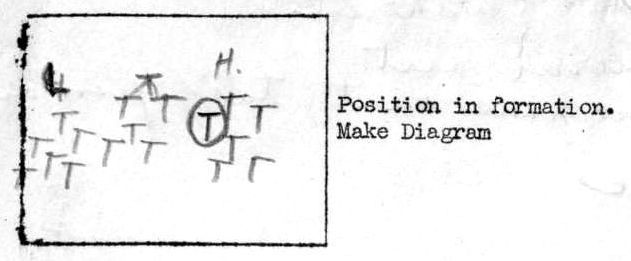
Low formation High formation
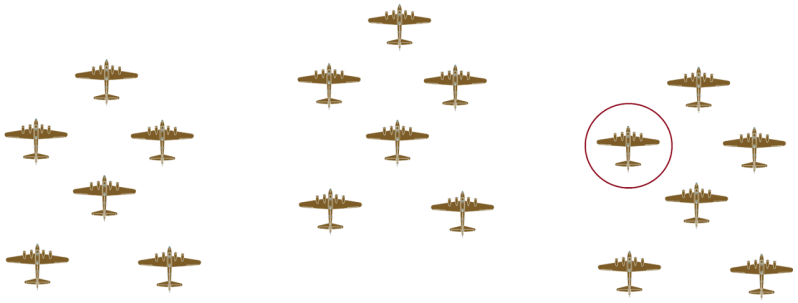
In his report, Homer CONTOPIDIS gives another position of the aircraft : " Our plane was in the middle squadron, right wing of the second element and flying low group".
Low formation
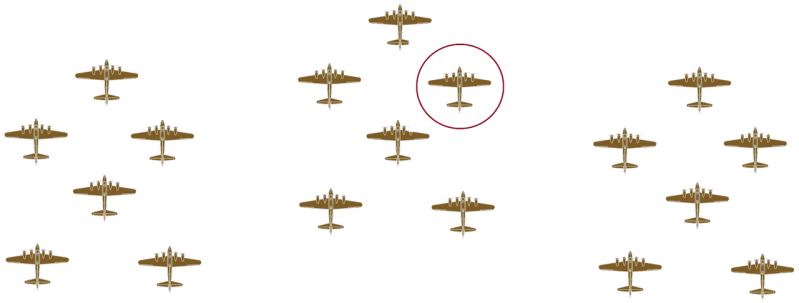
In his report, Donald L. NICHOLS indicates in a diagram the position of the aircraft in low formation :.

. Low formation
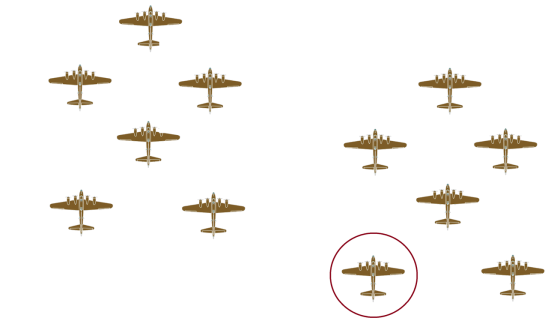
We thank the France-Crashes 39-45 website for the evasion reports of the airmen Spevak, Contopidis, Nichols and Minor
APPENDICES : EVASION REPORTS
♦ Edward J. SPEVAK's evasion report, dated August 16, 1943
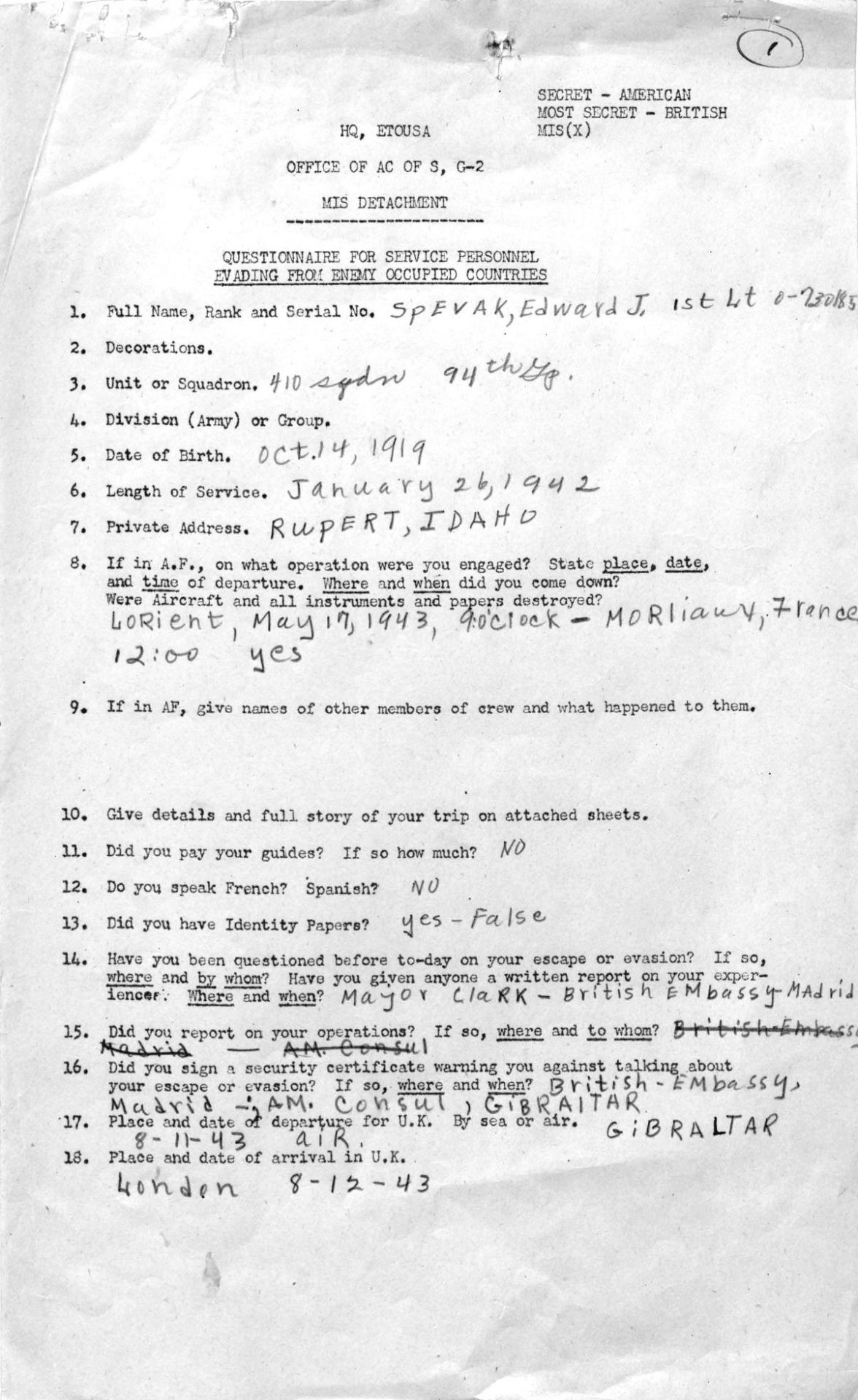
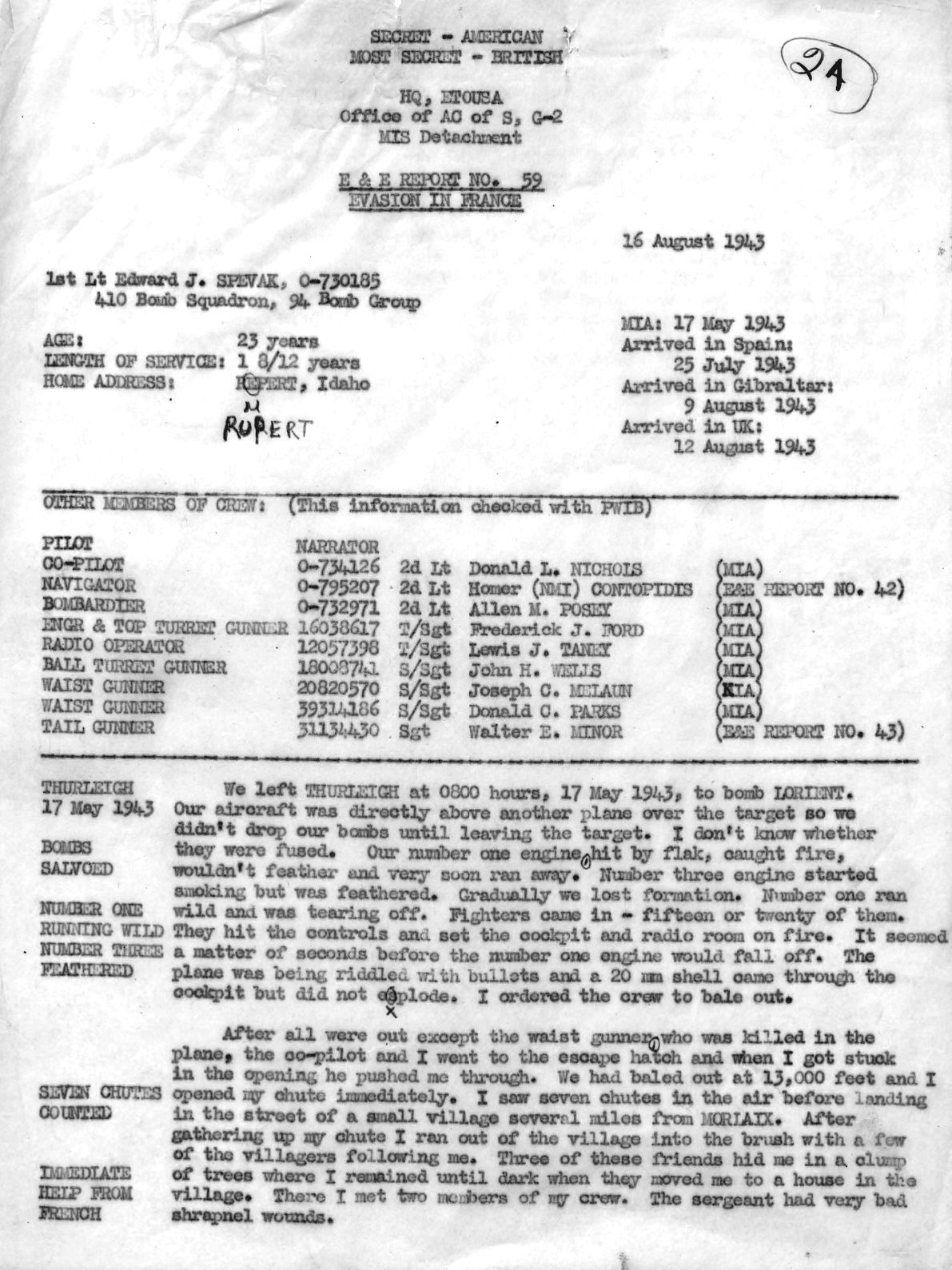
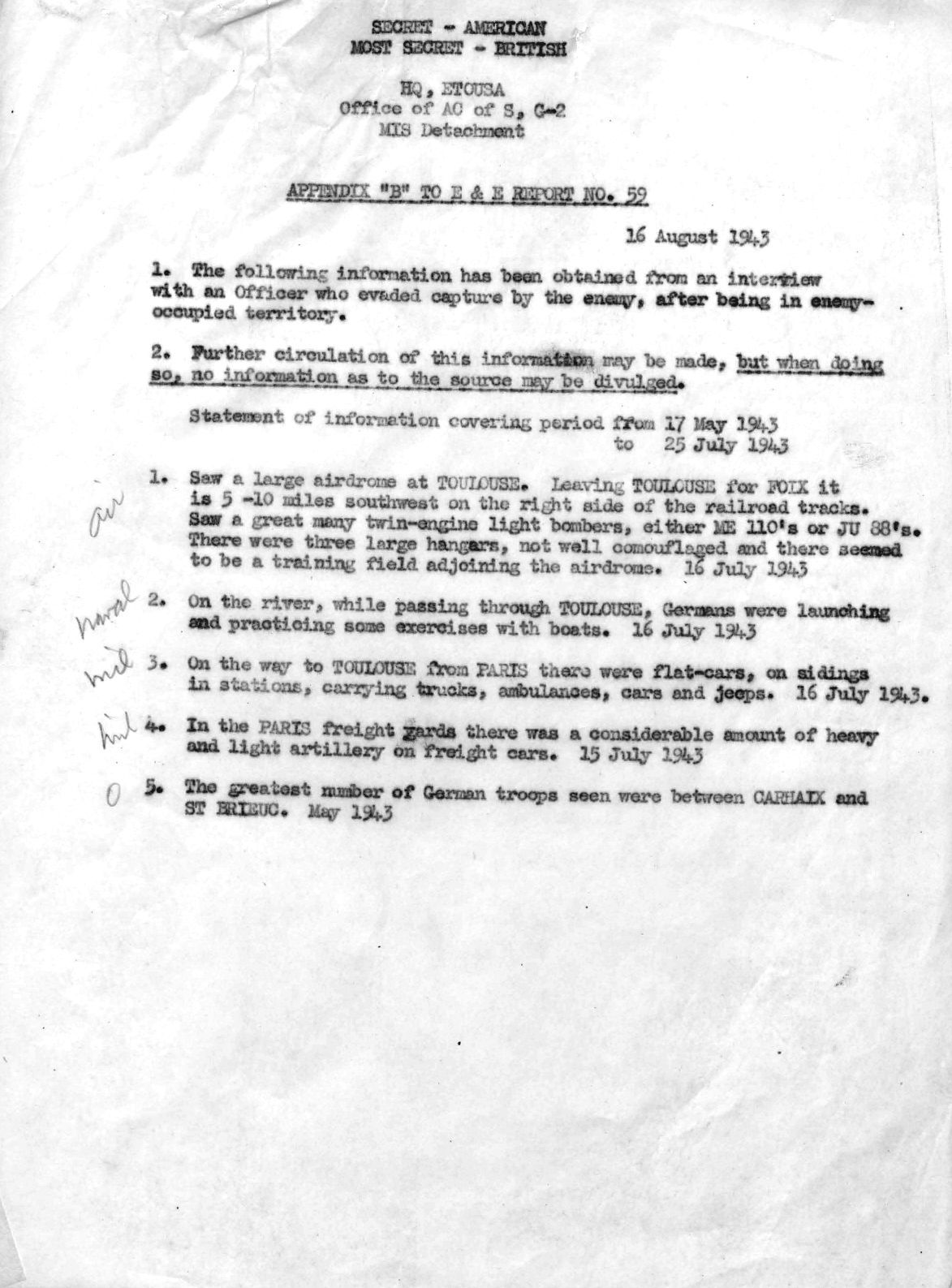

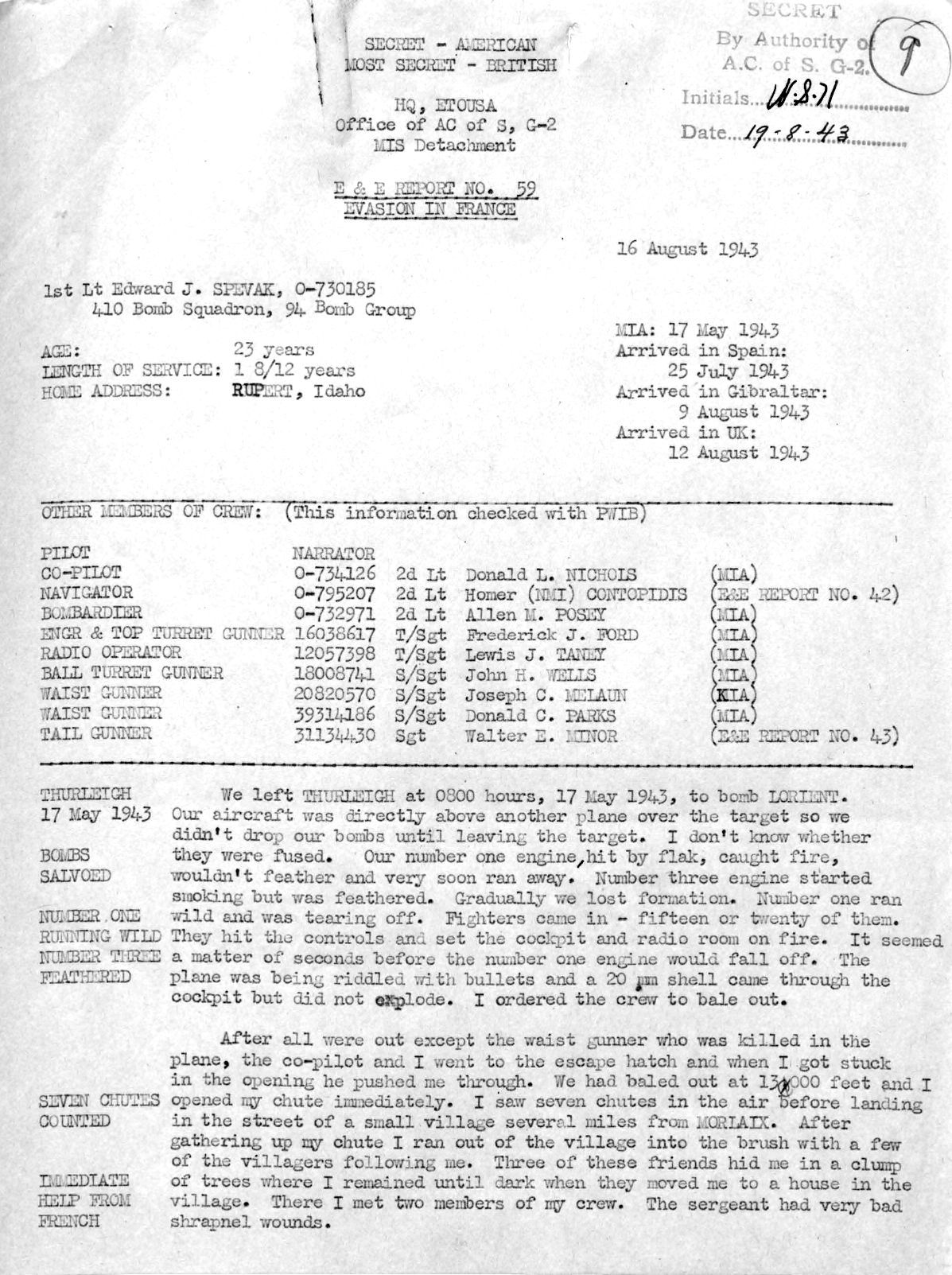
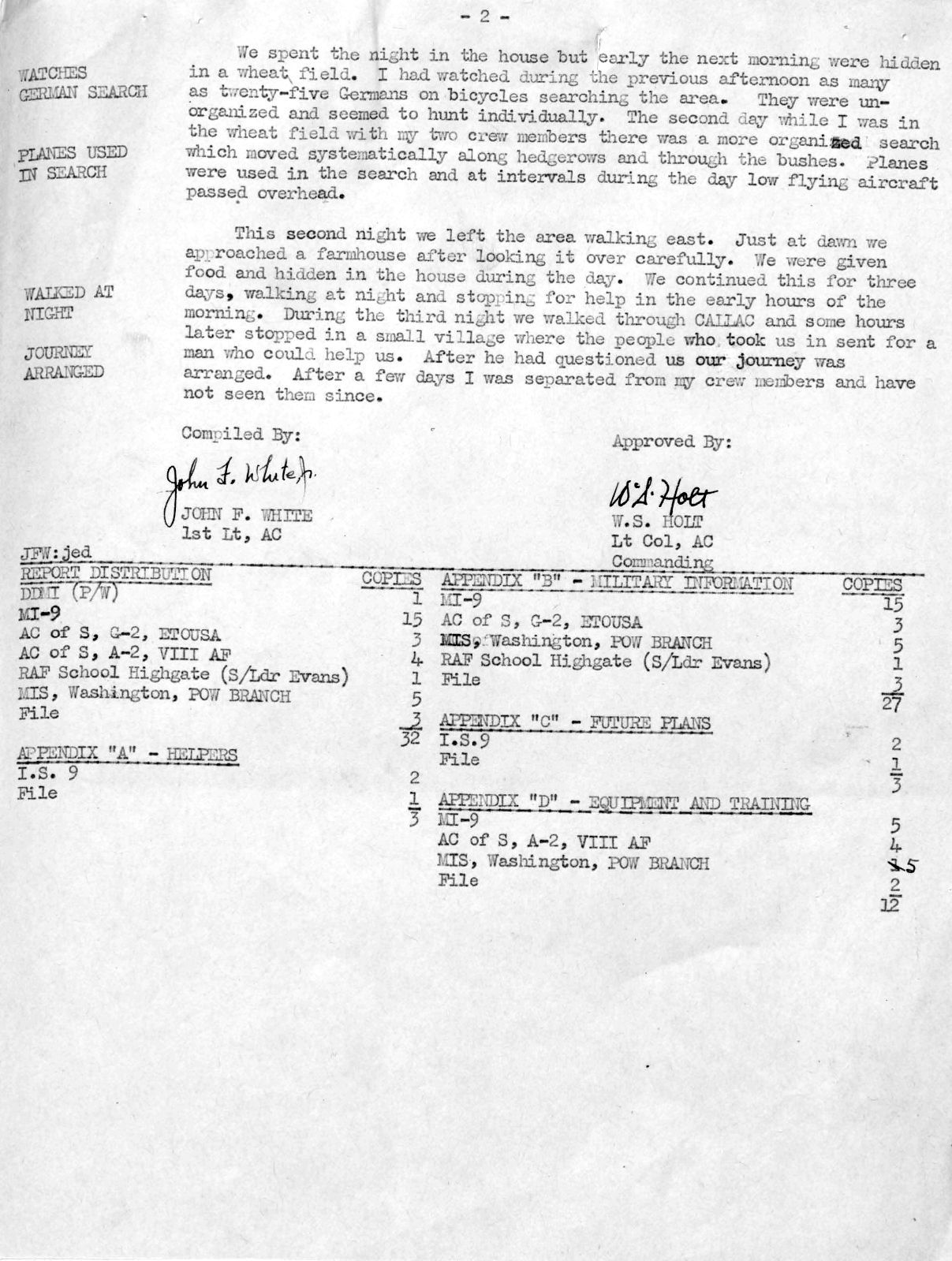
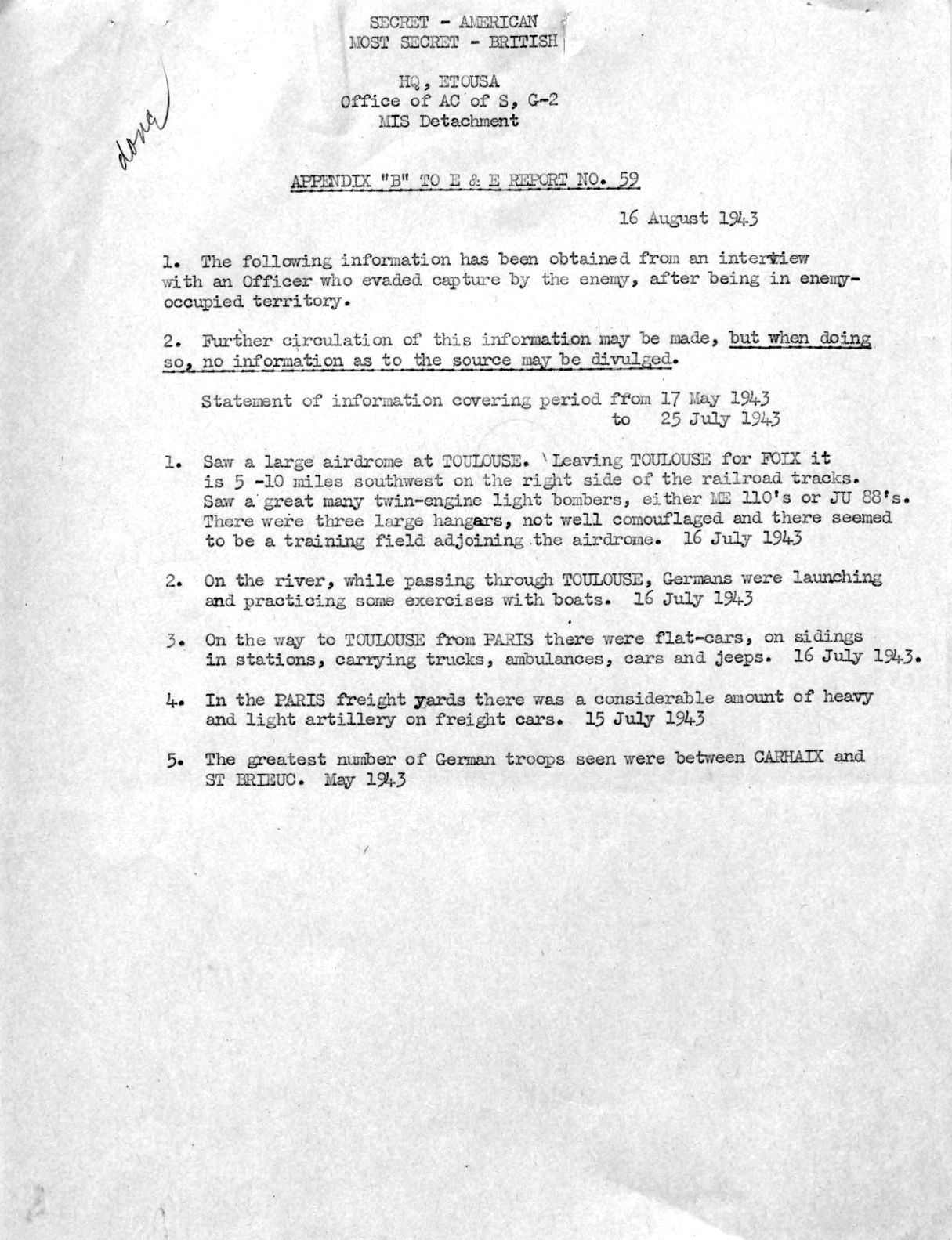
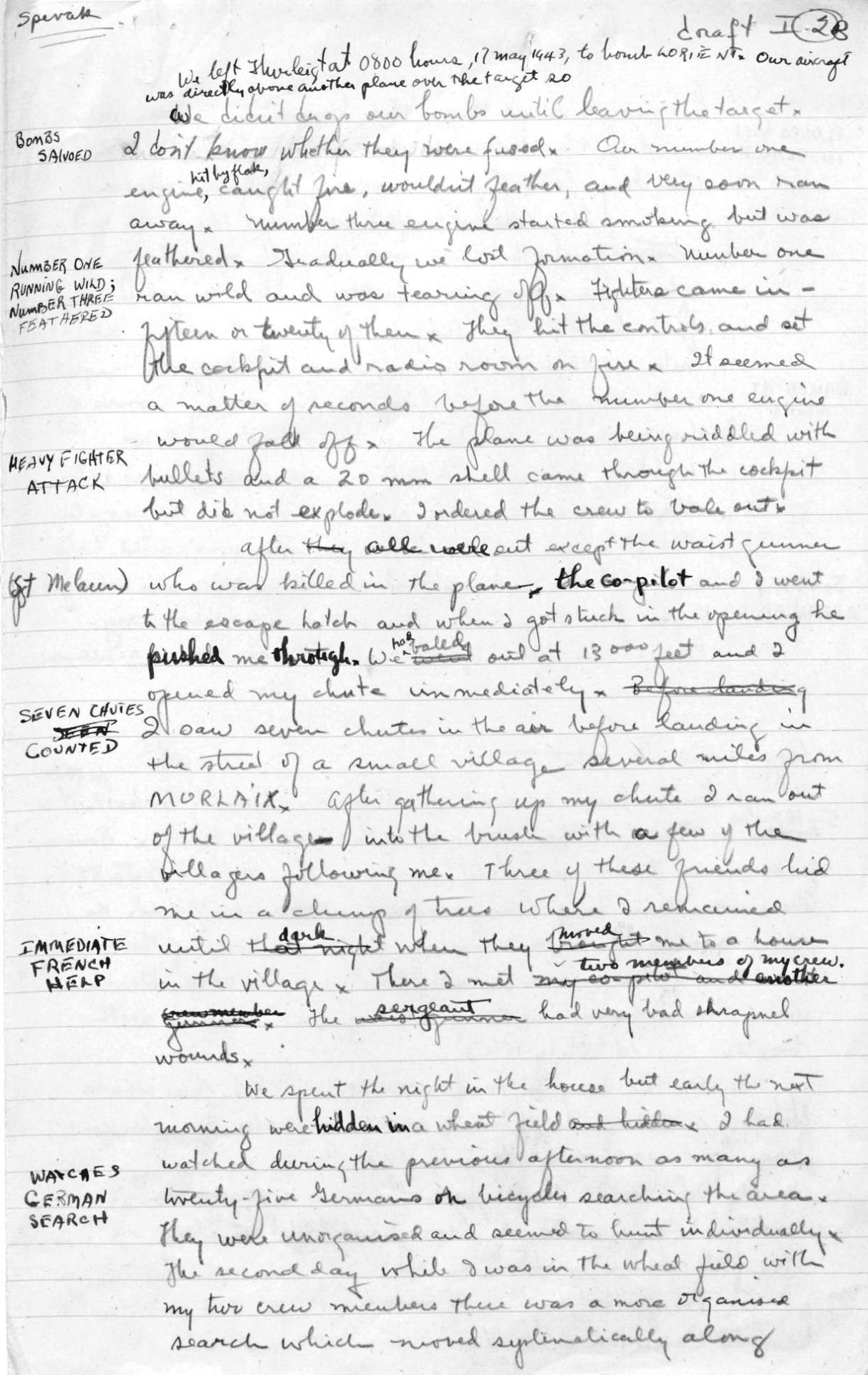
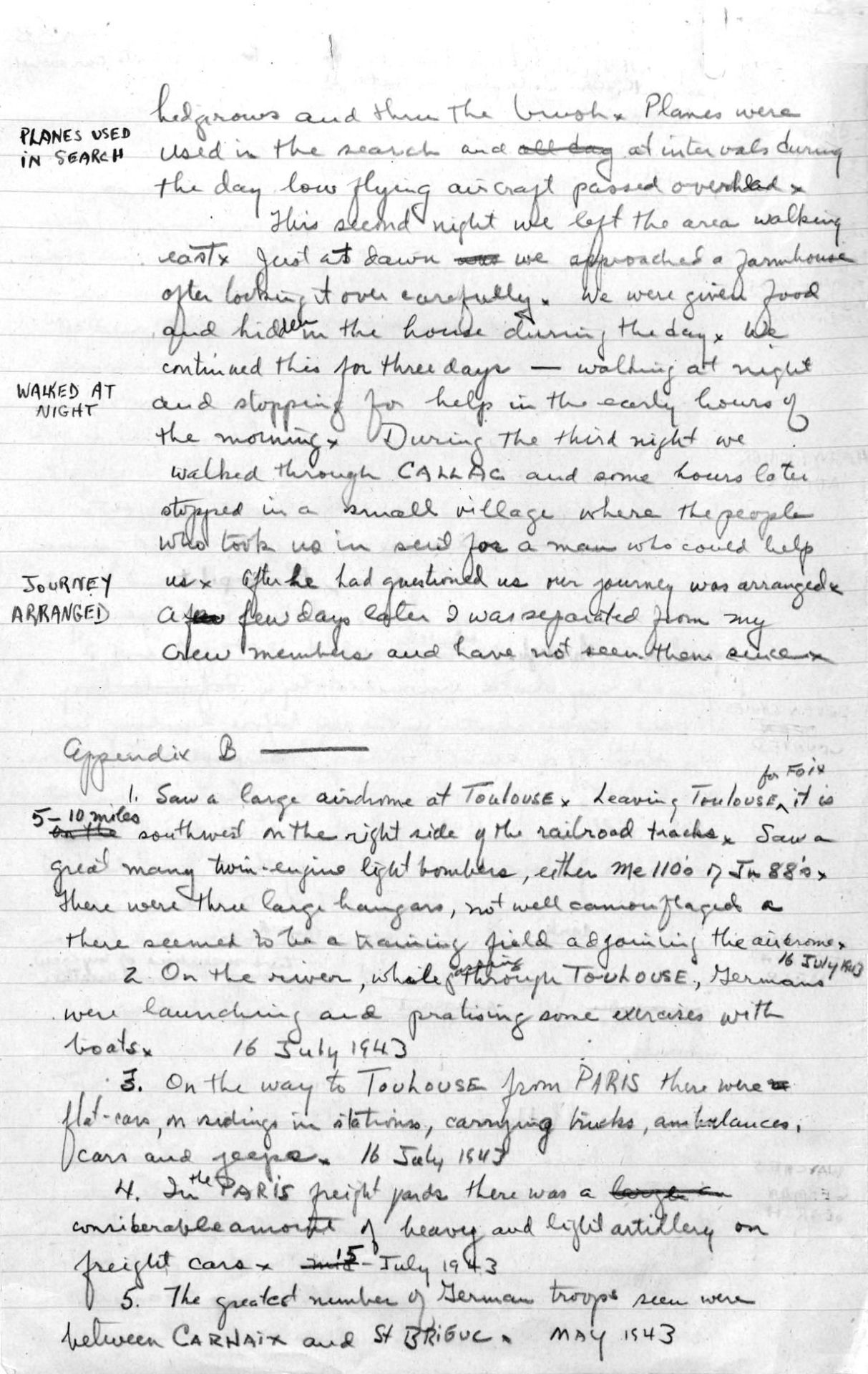
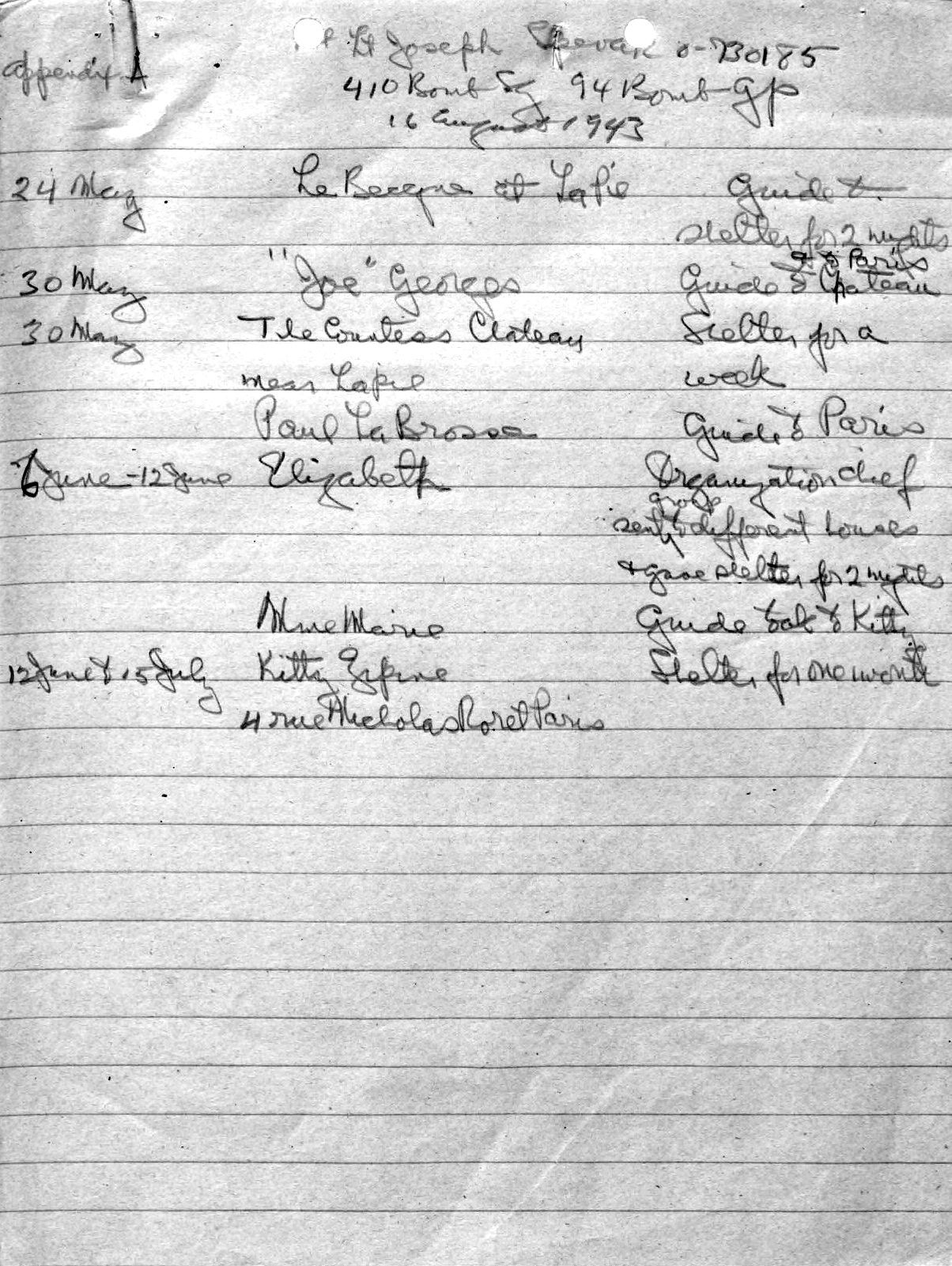
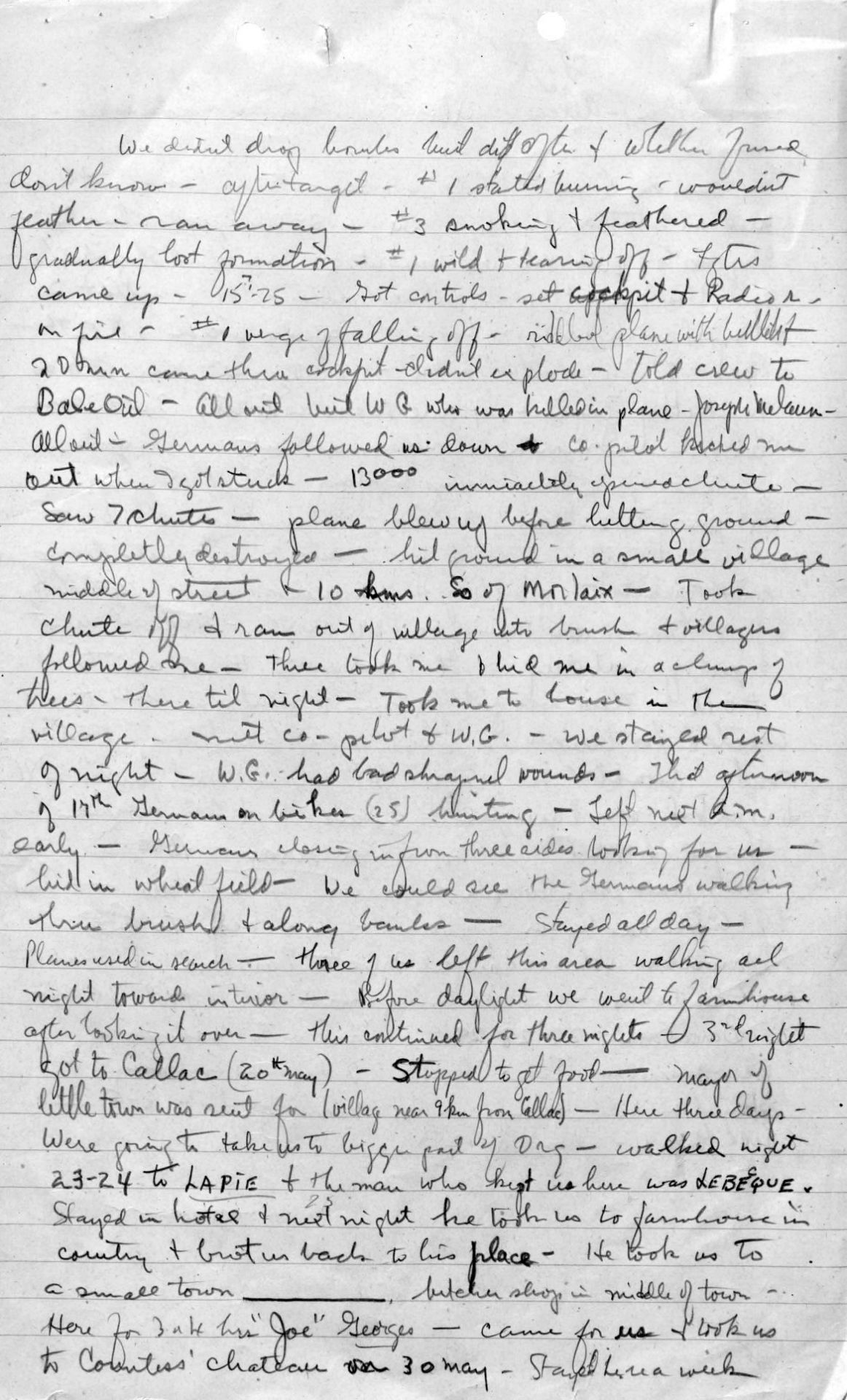
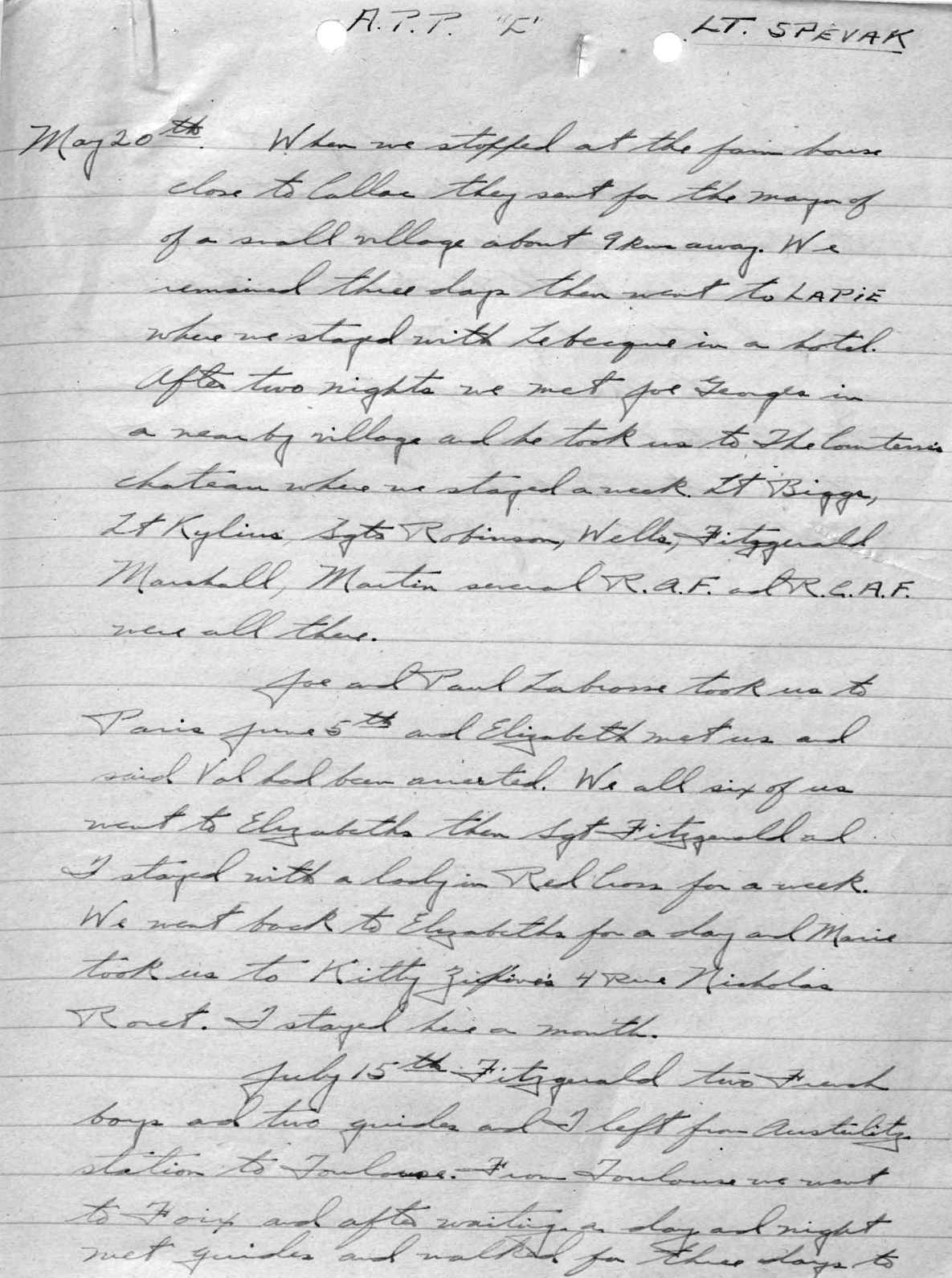
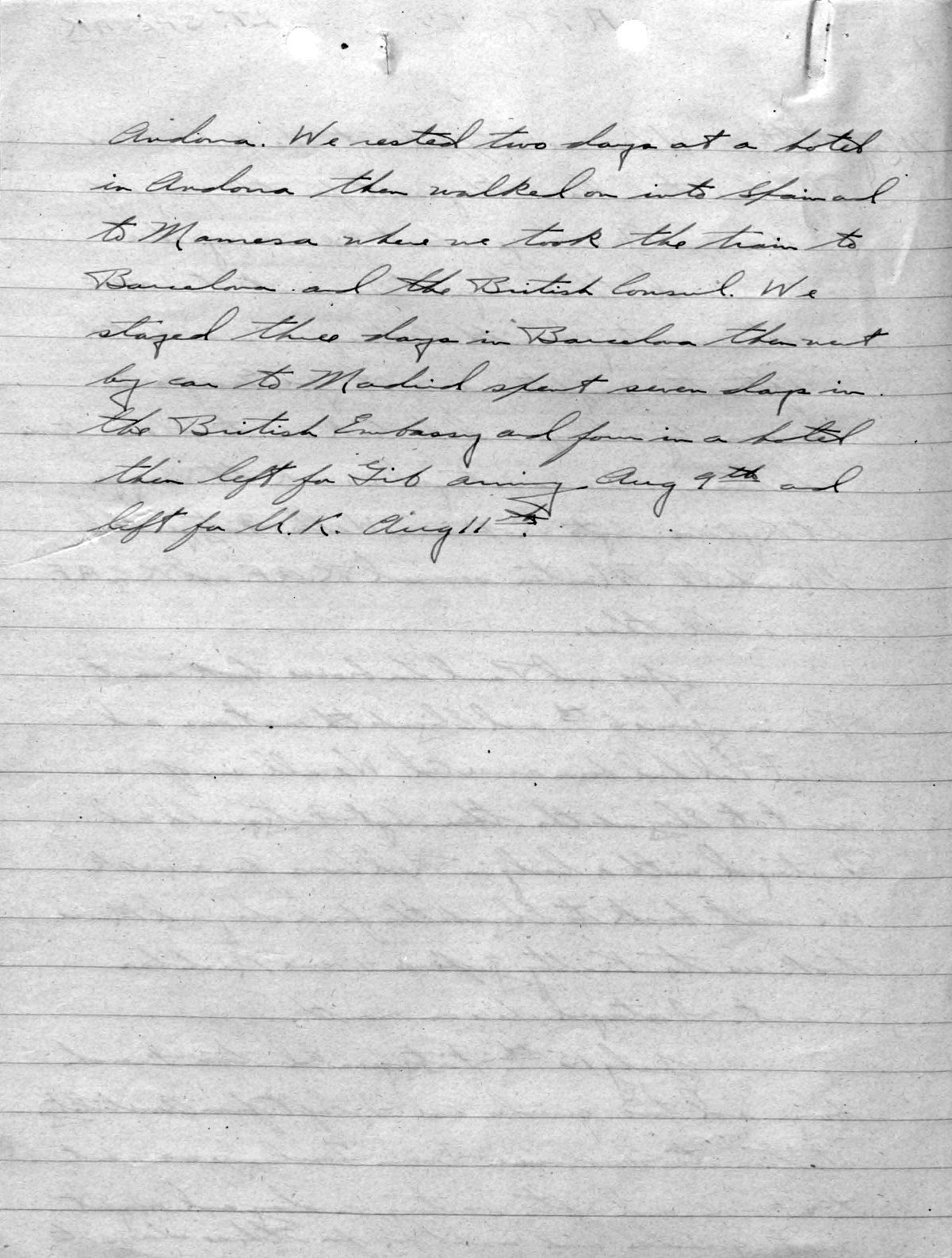
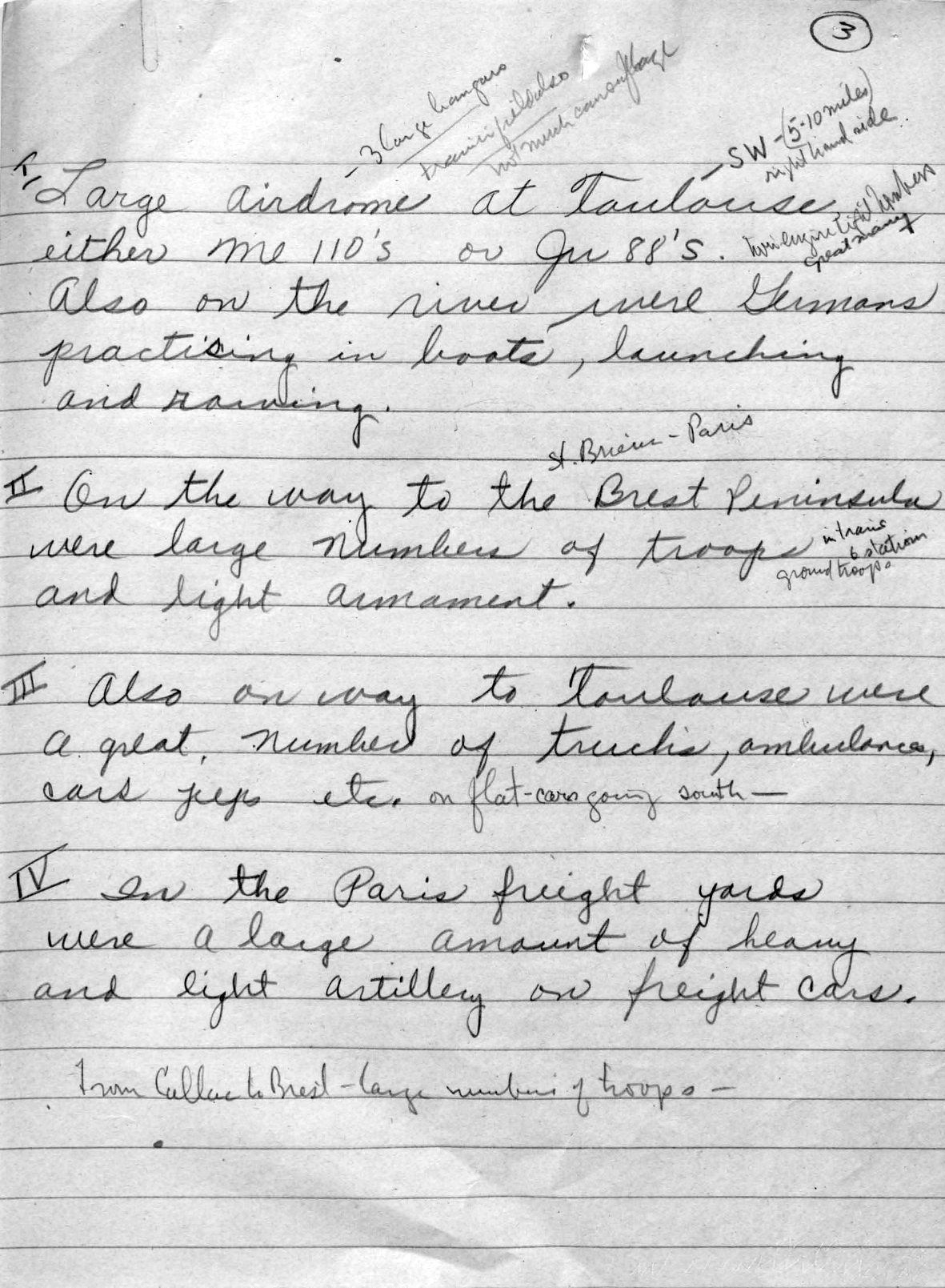
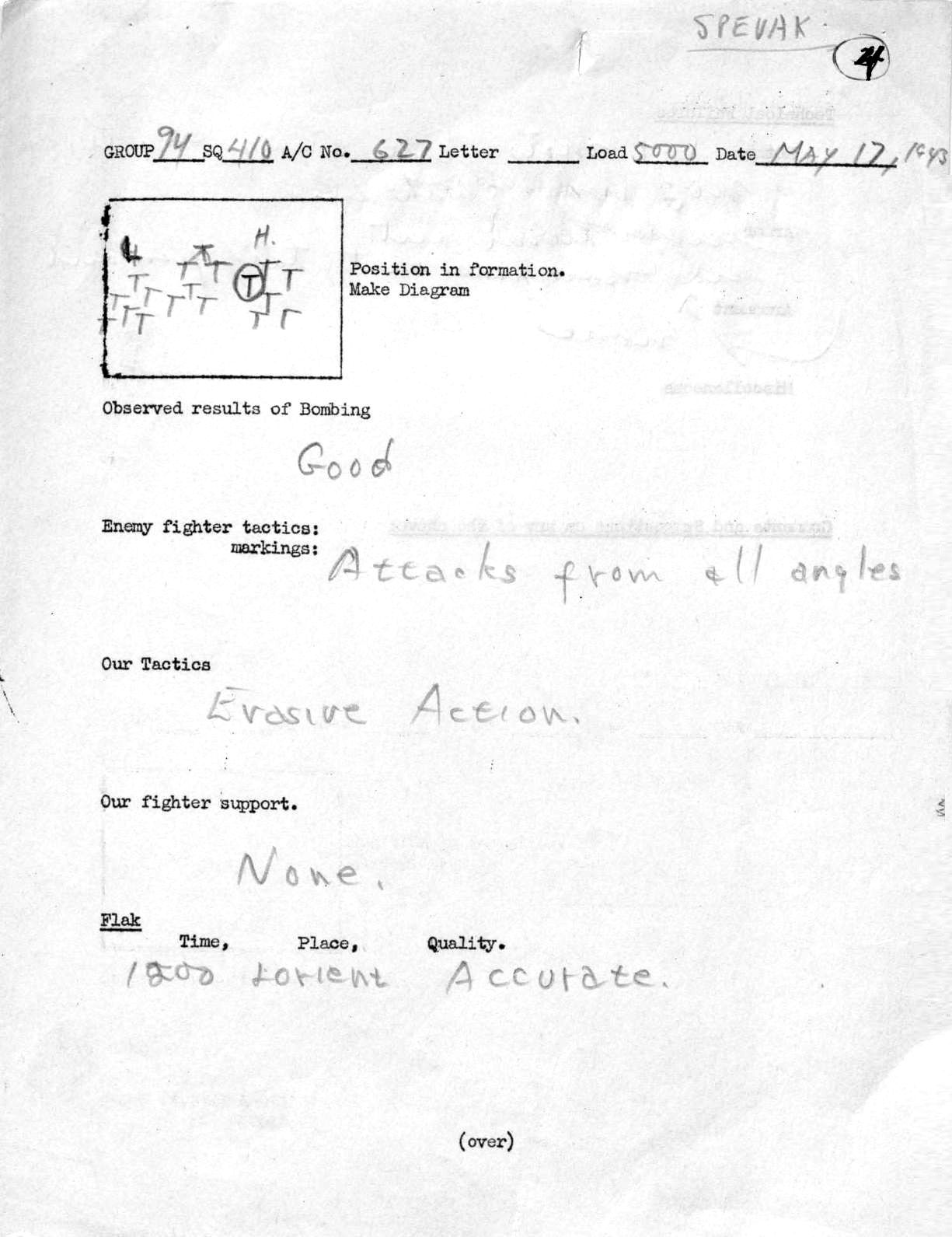

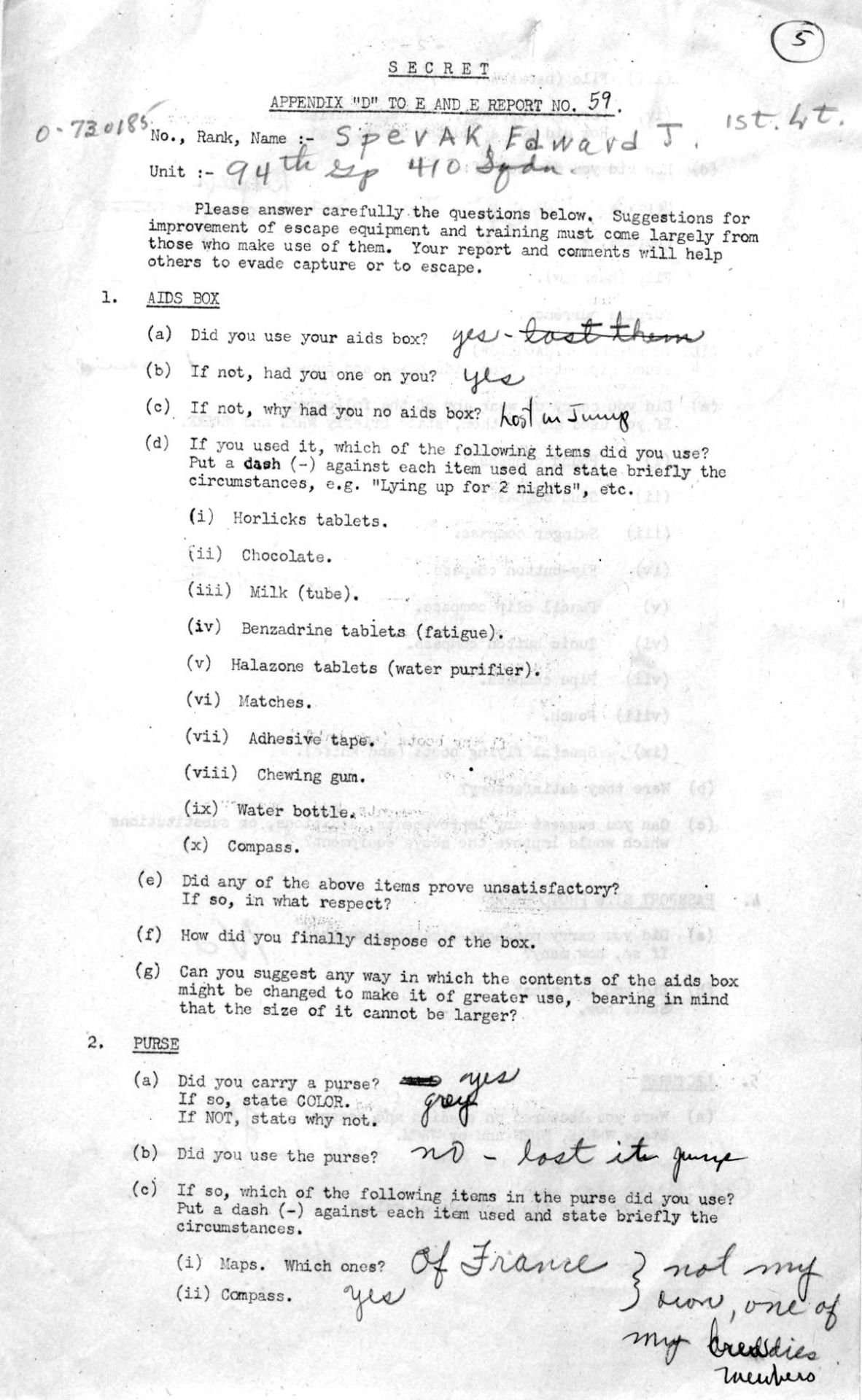
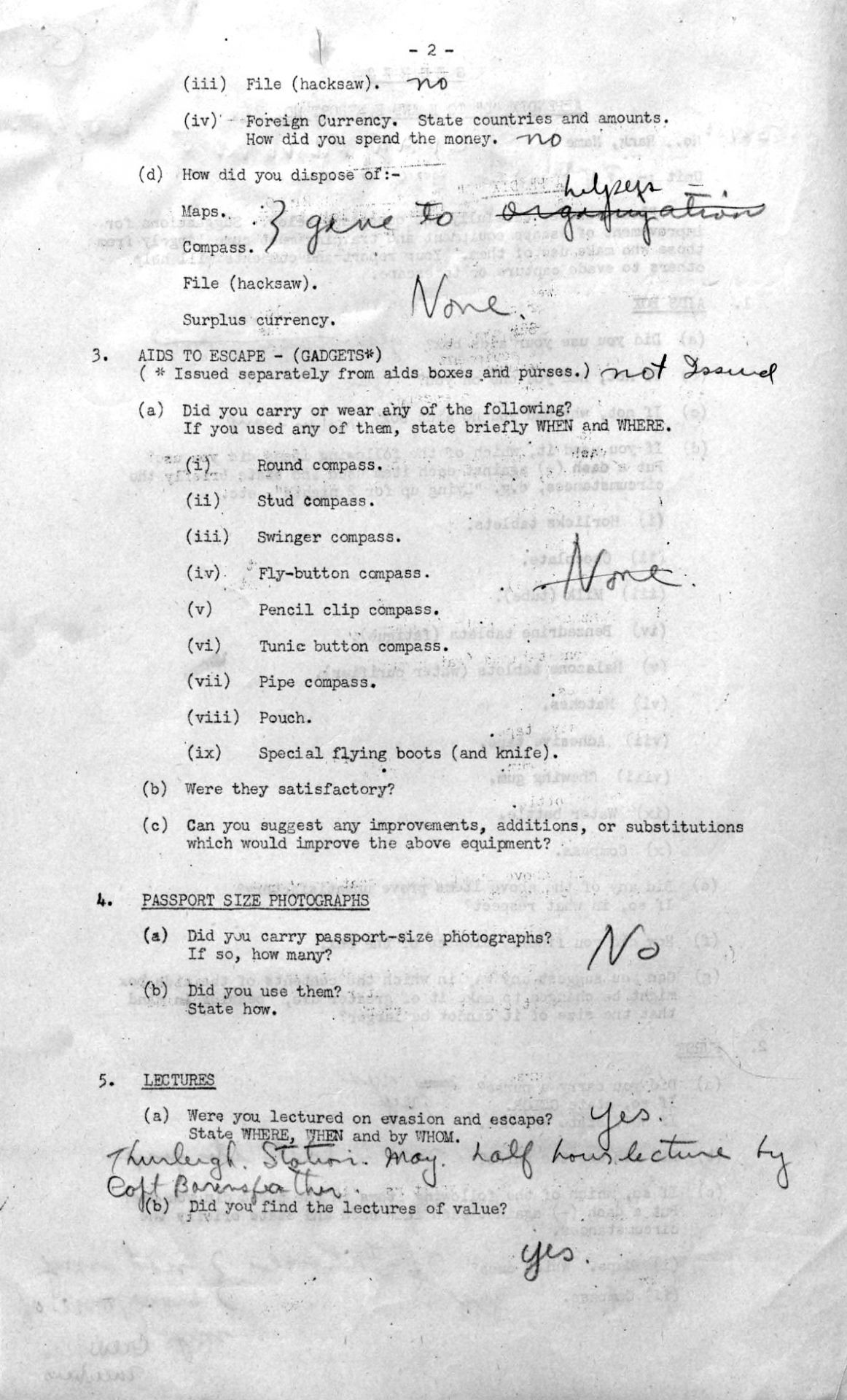
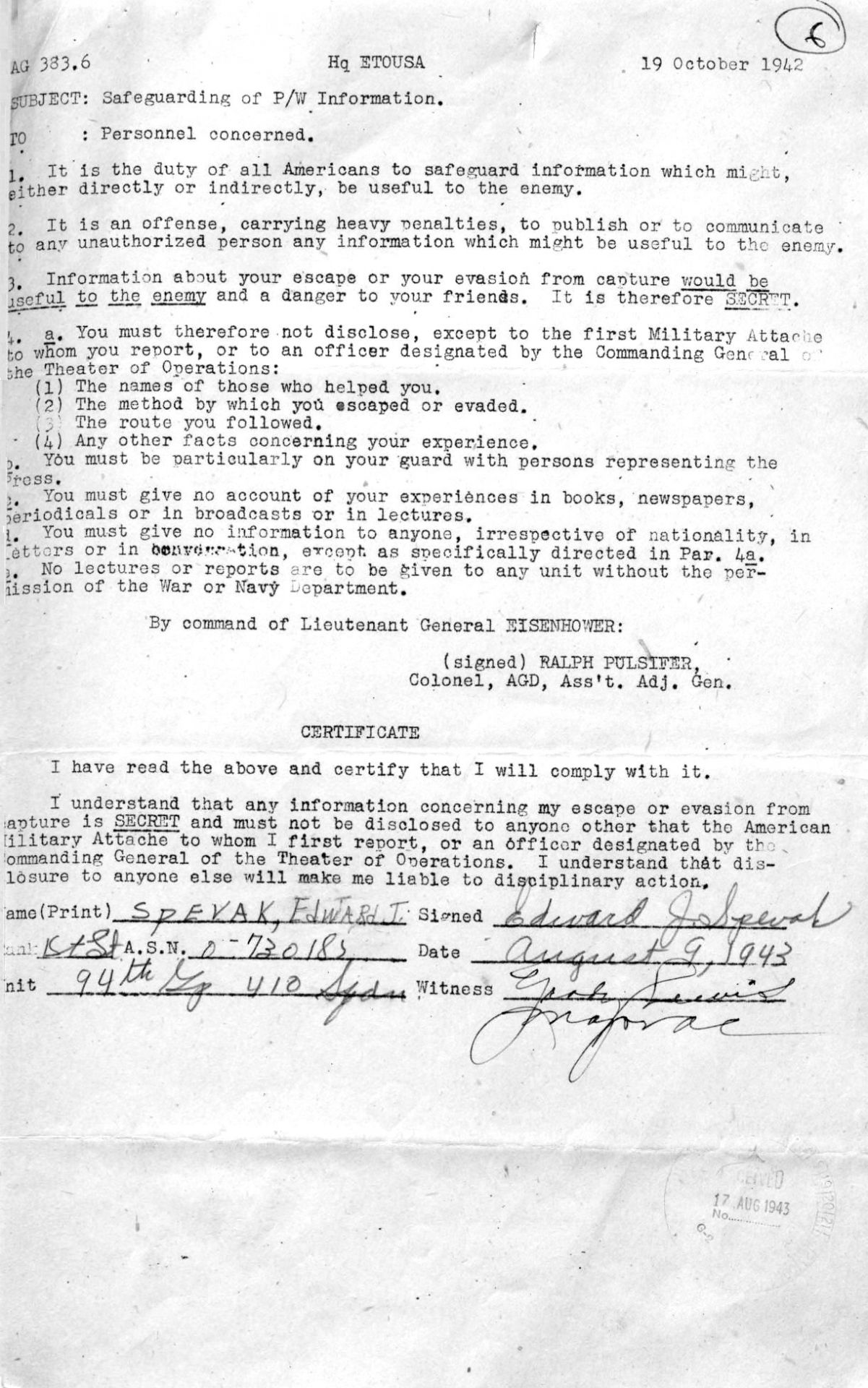
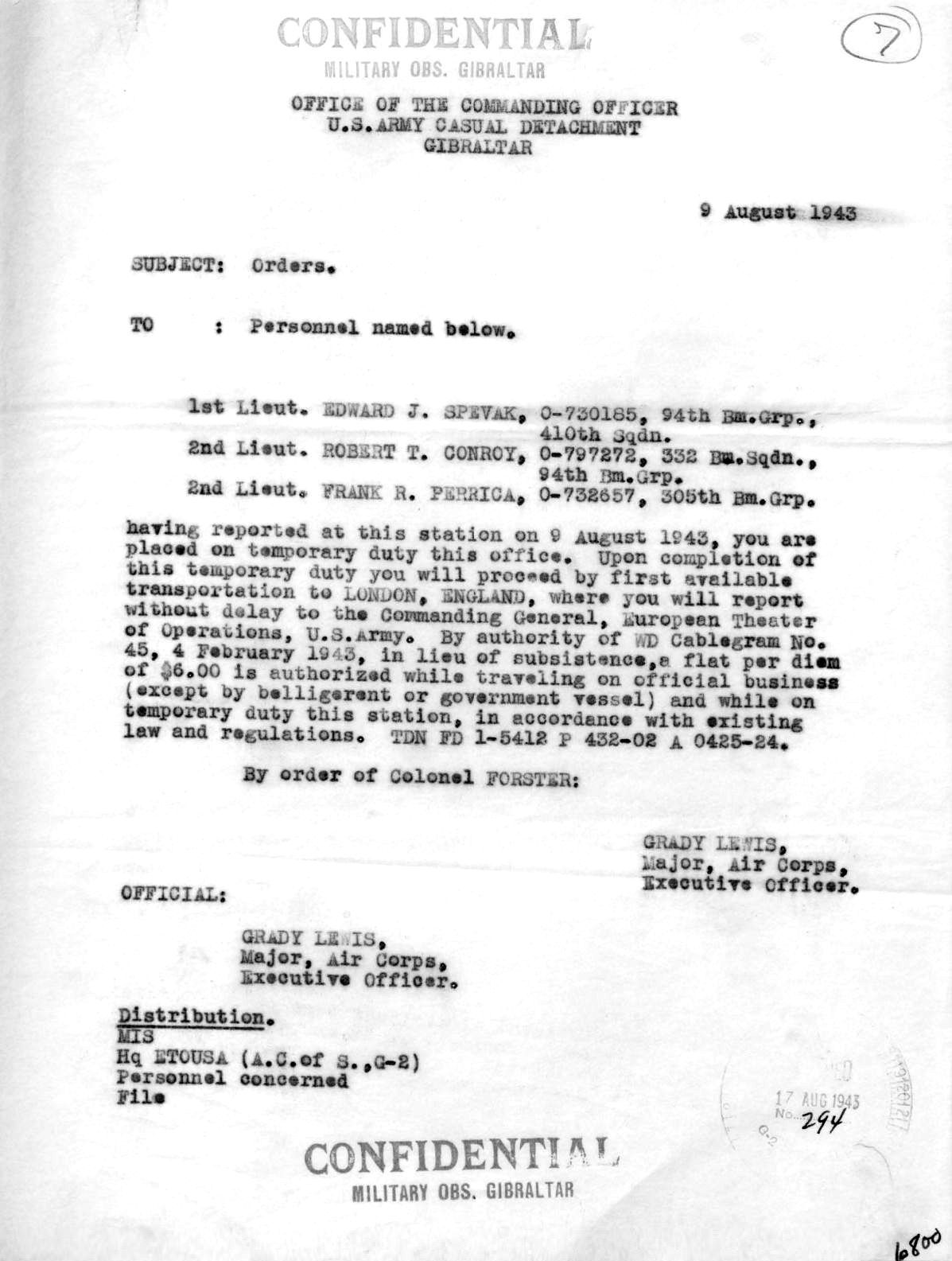
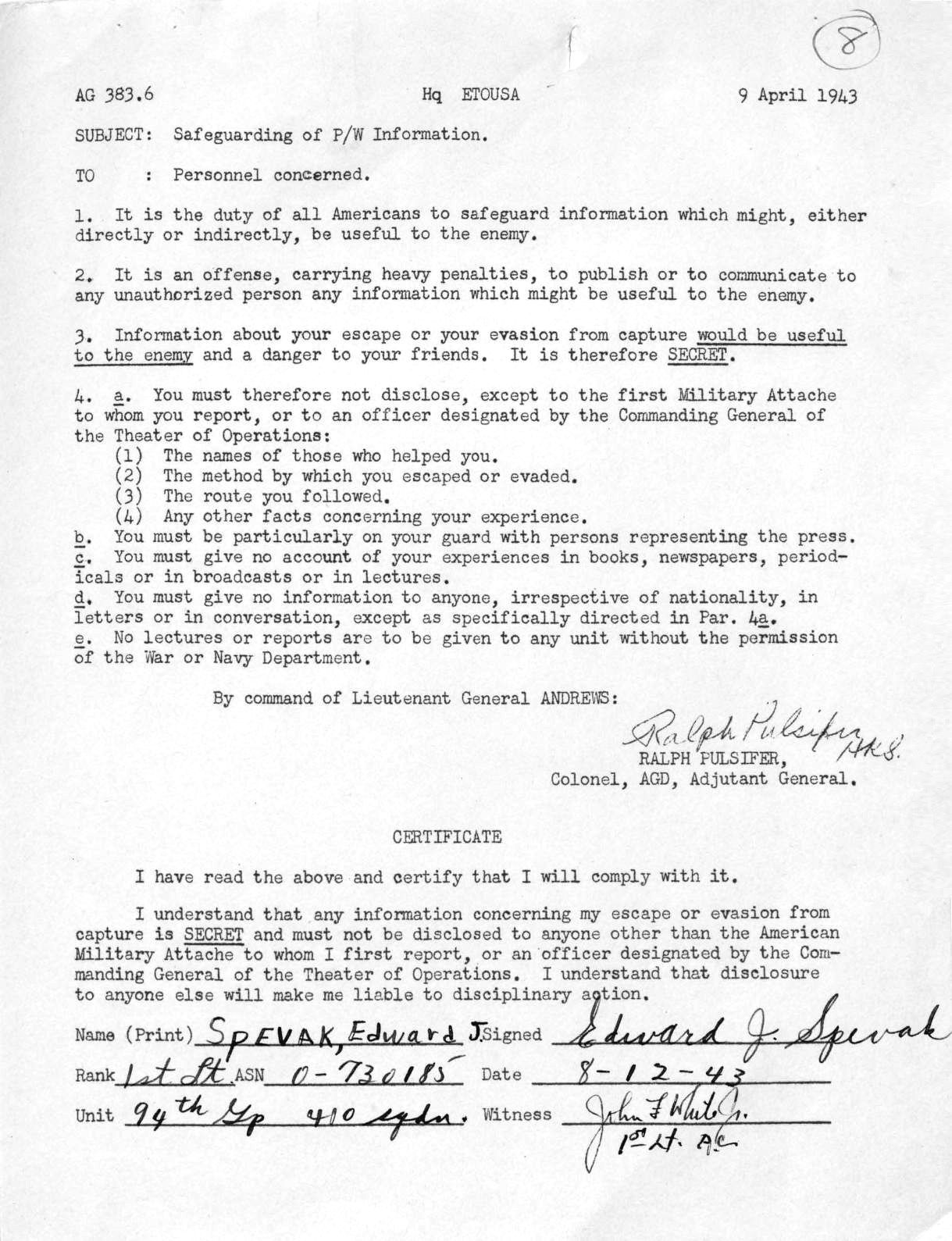
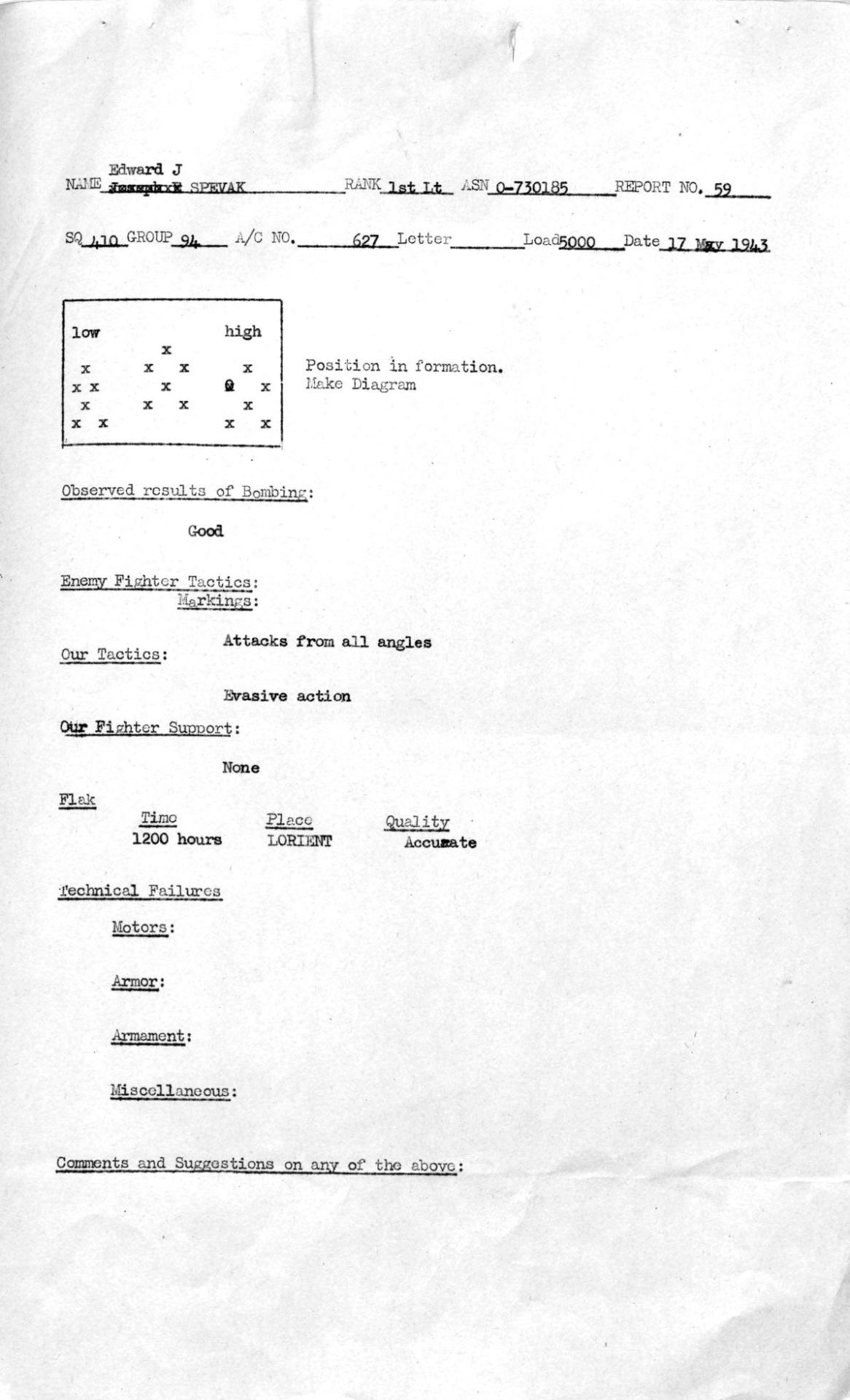
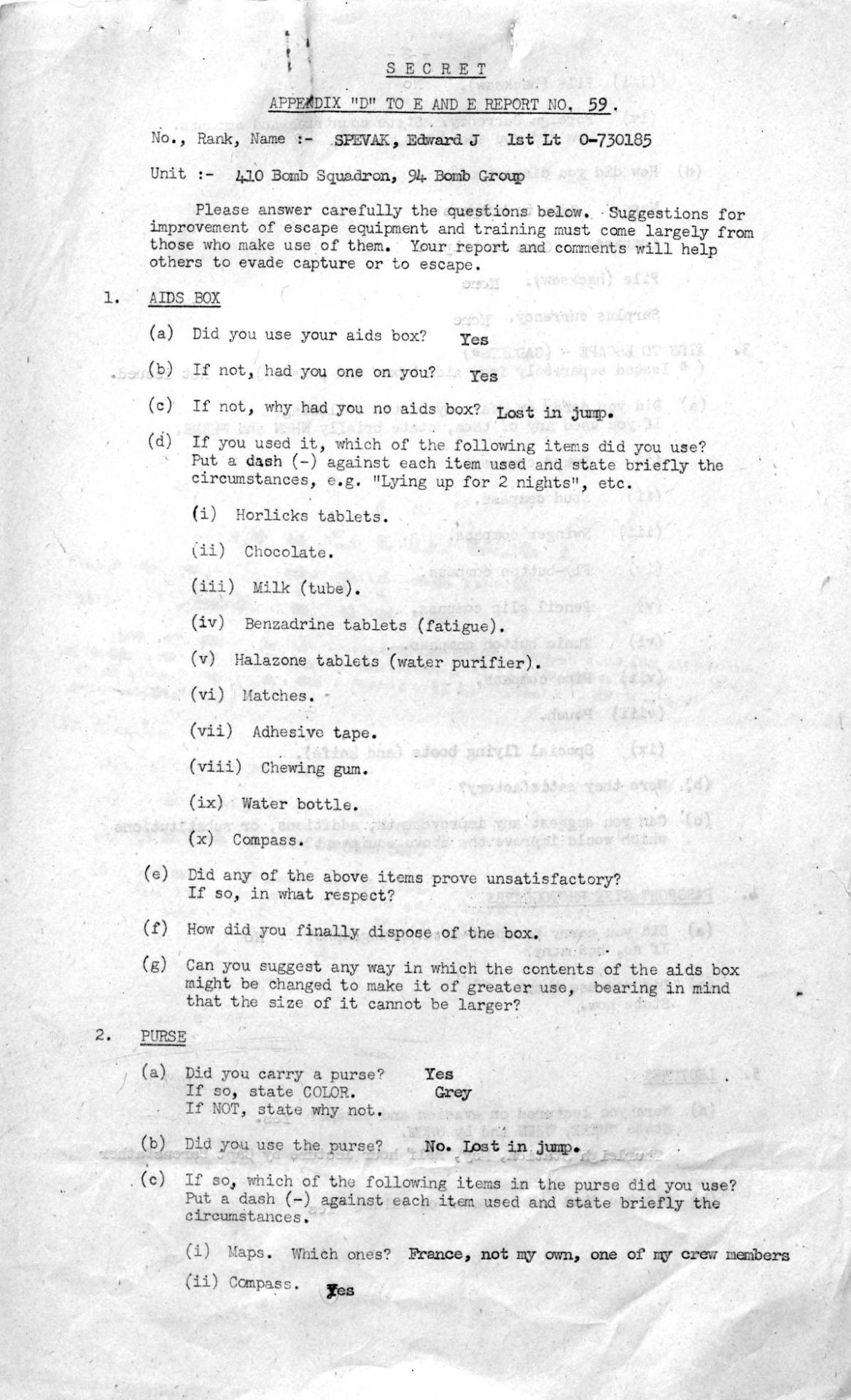
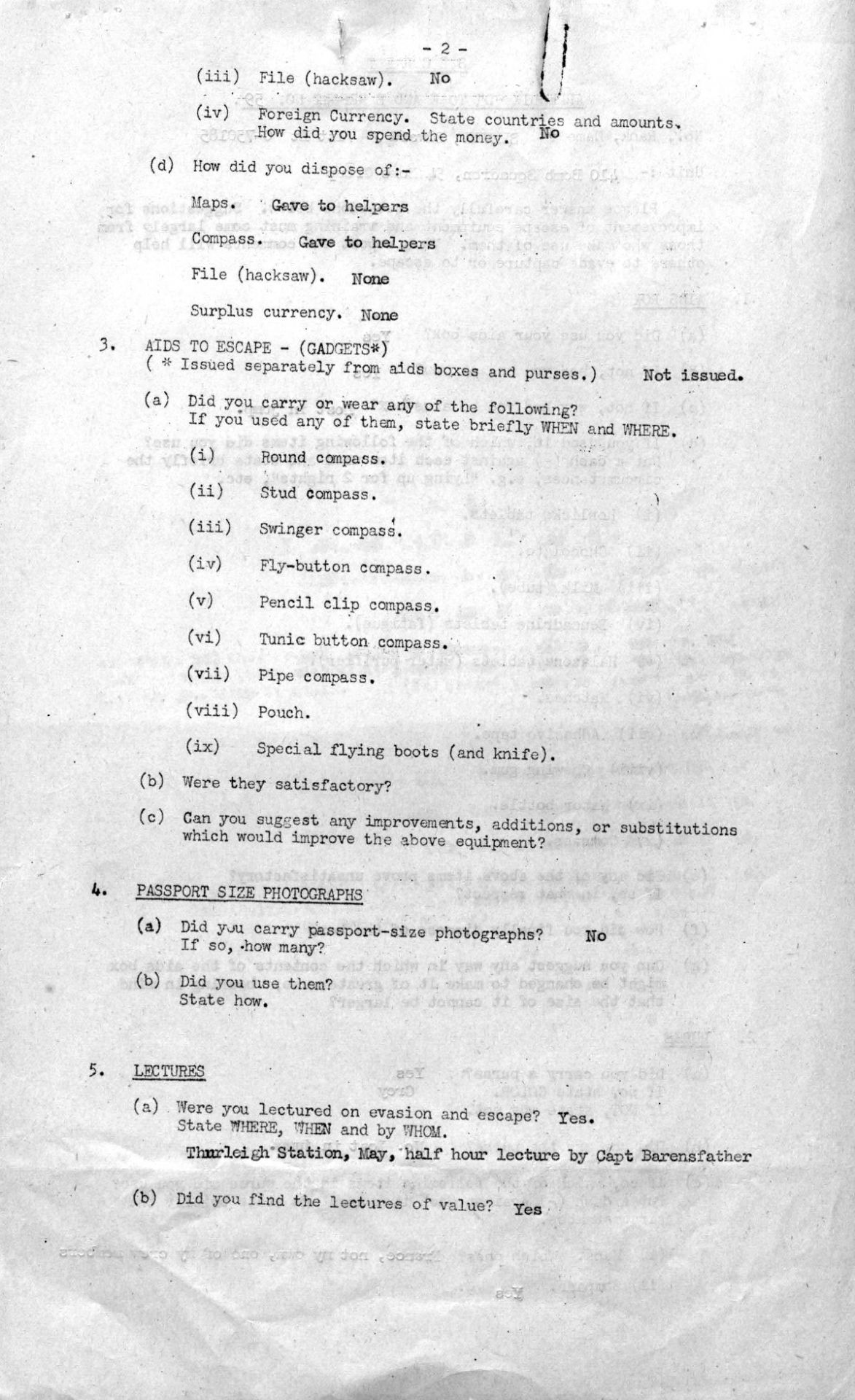
♦ Homer CONTOPIDIS and Walter E. MNIOR's evasion report, dated July 5, 1943
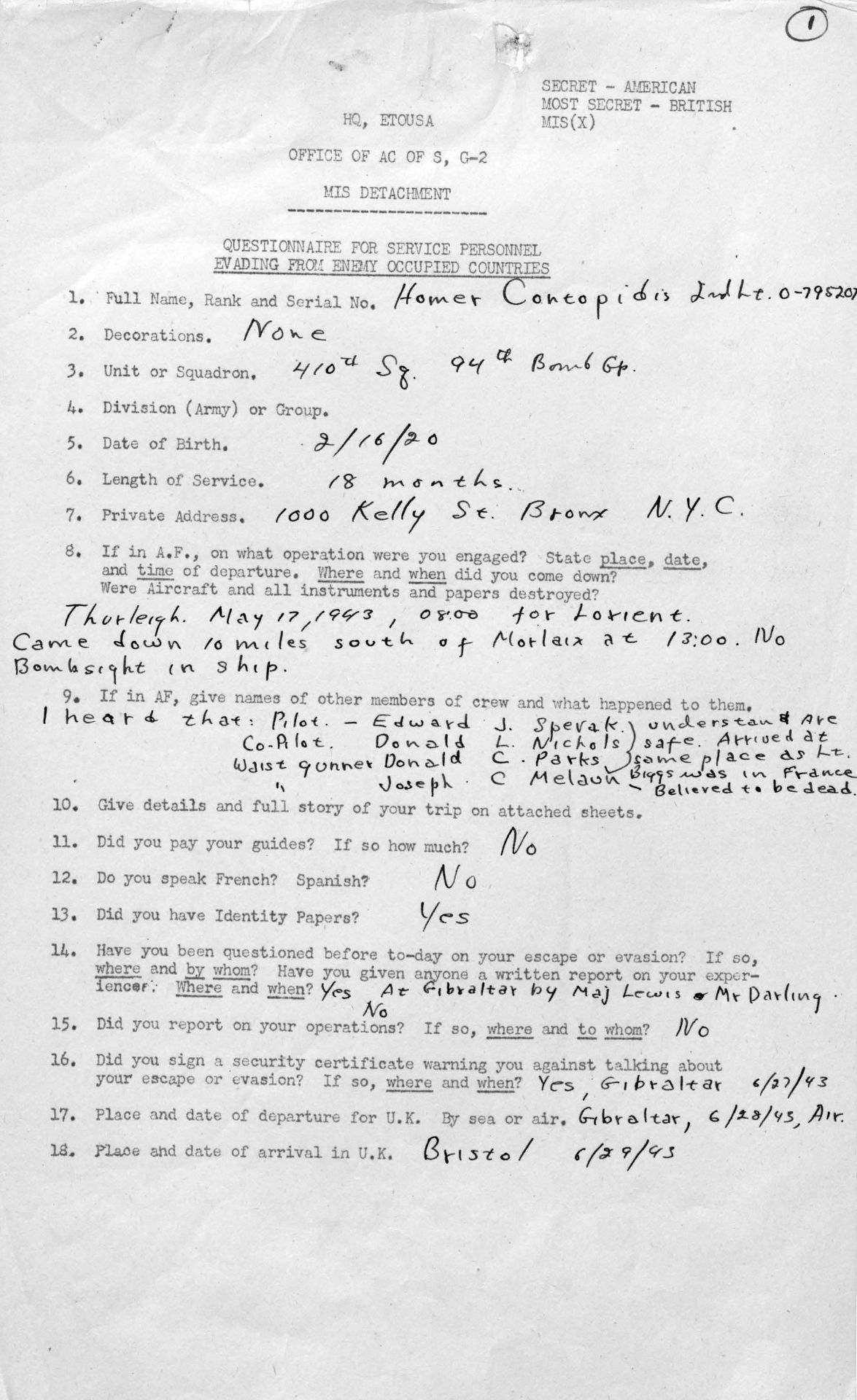
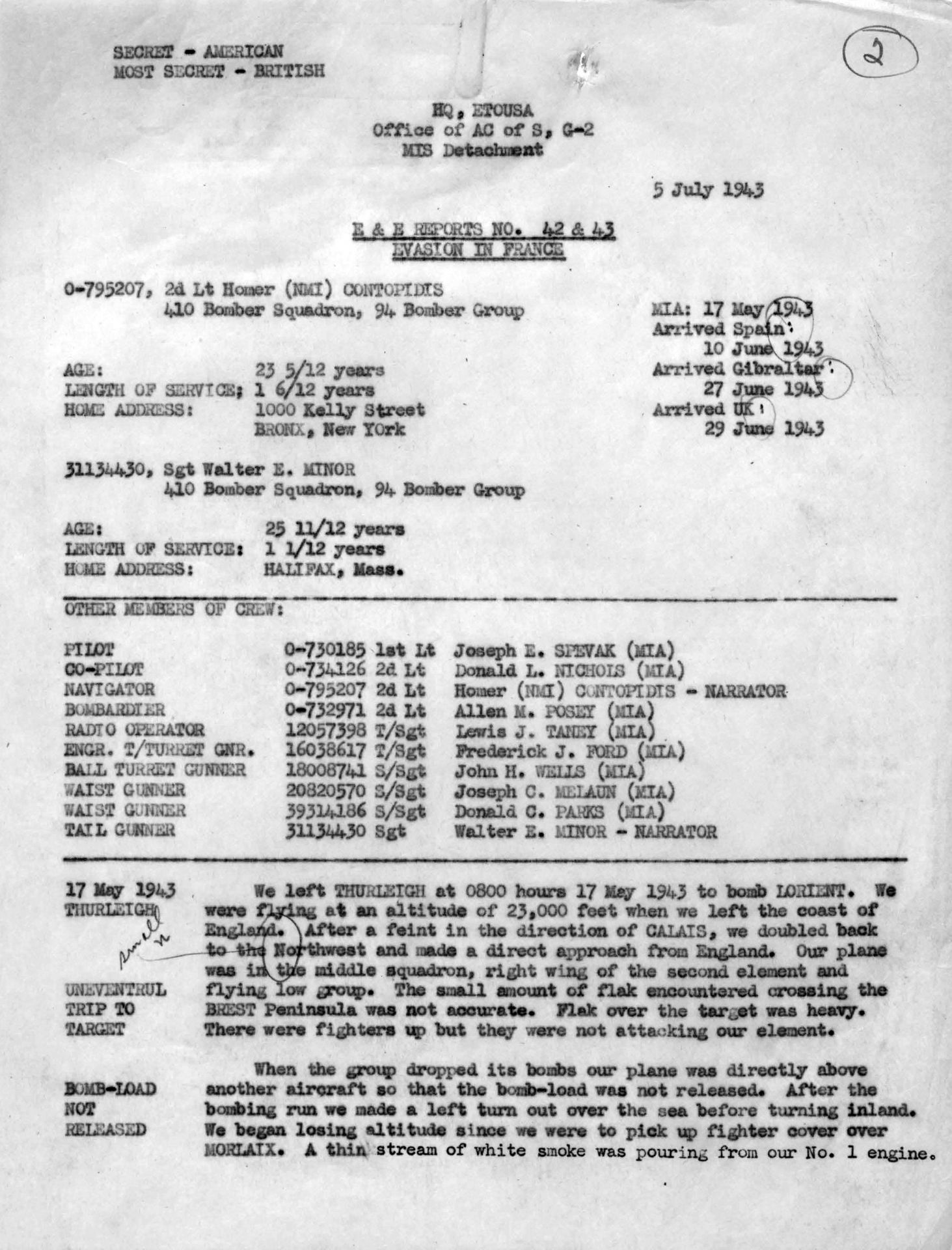

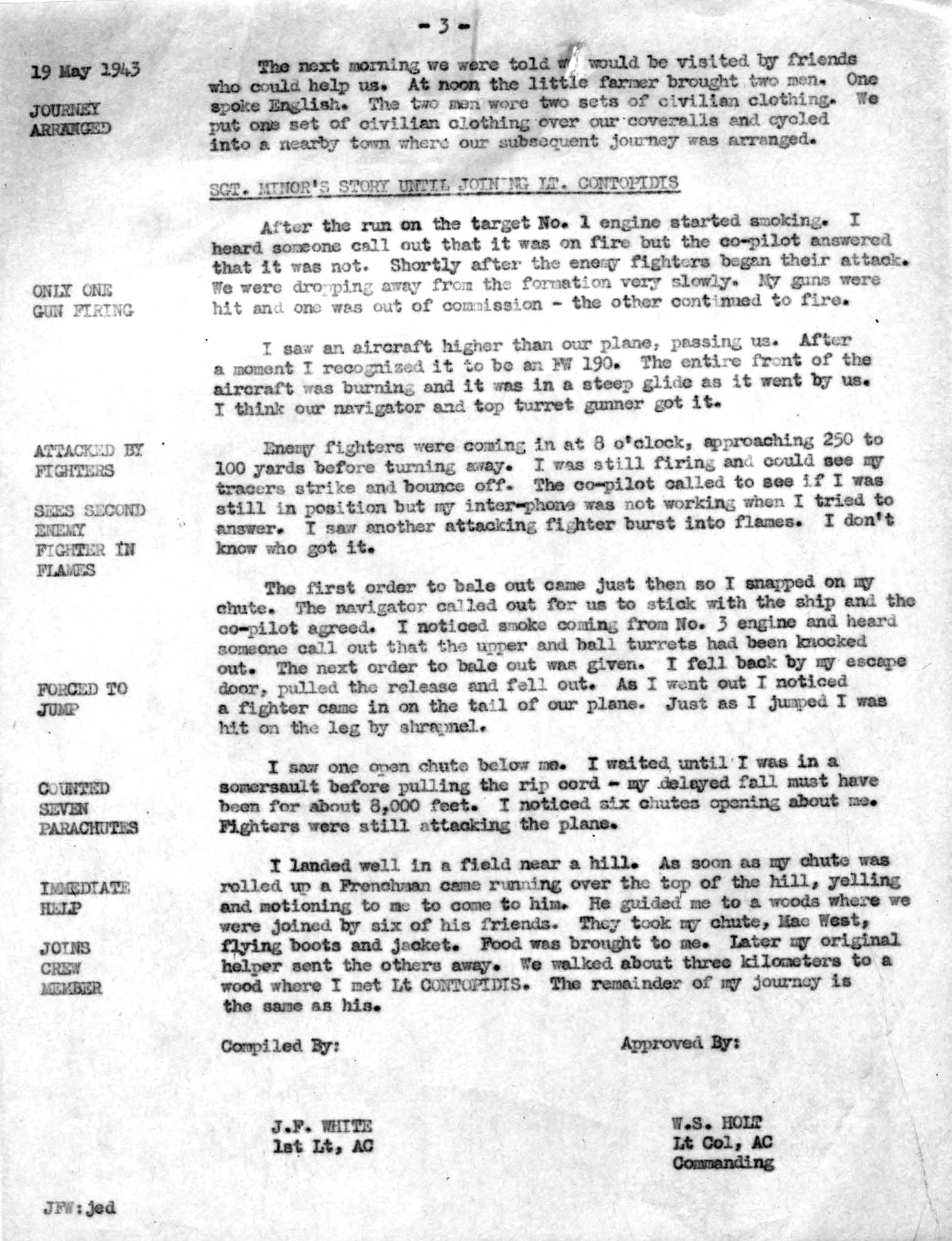
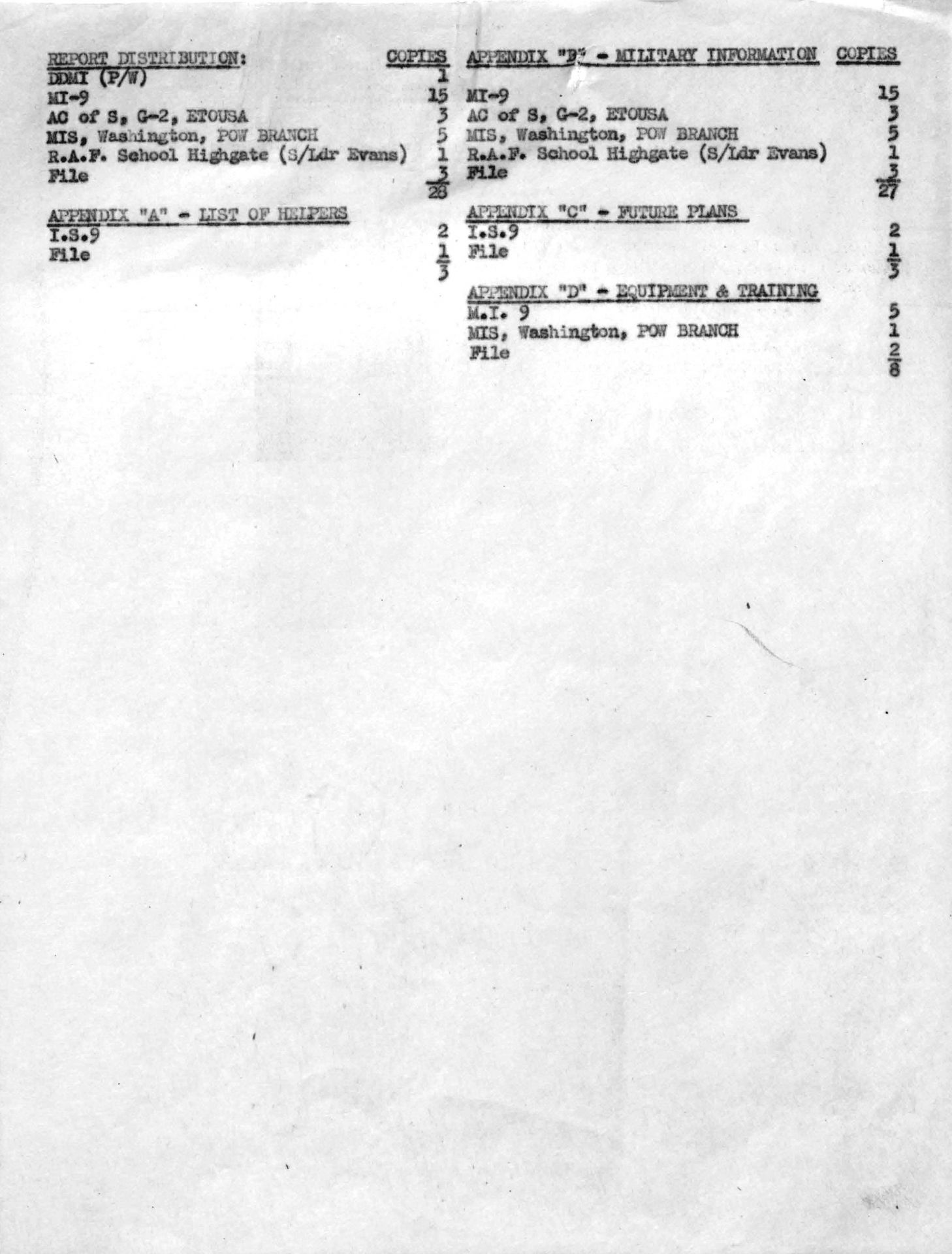
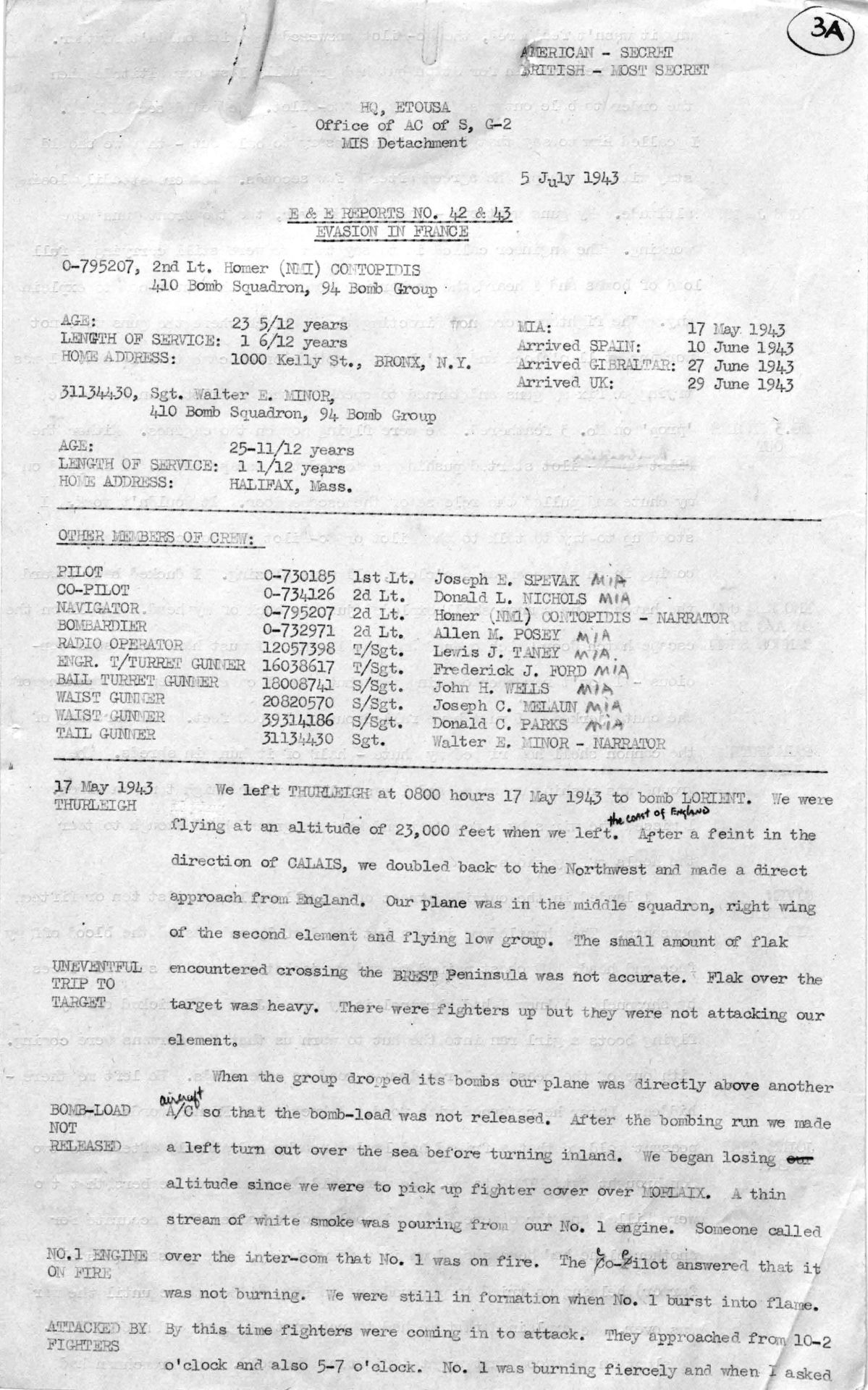
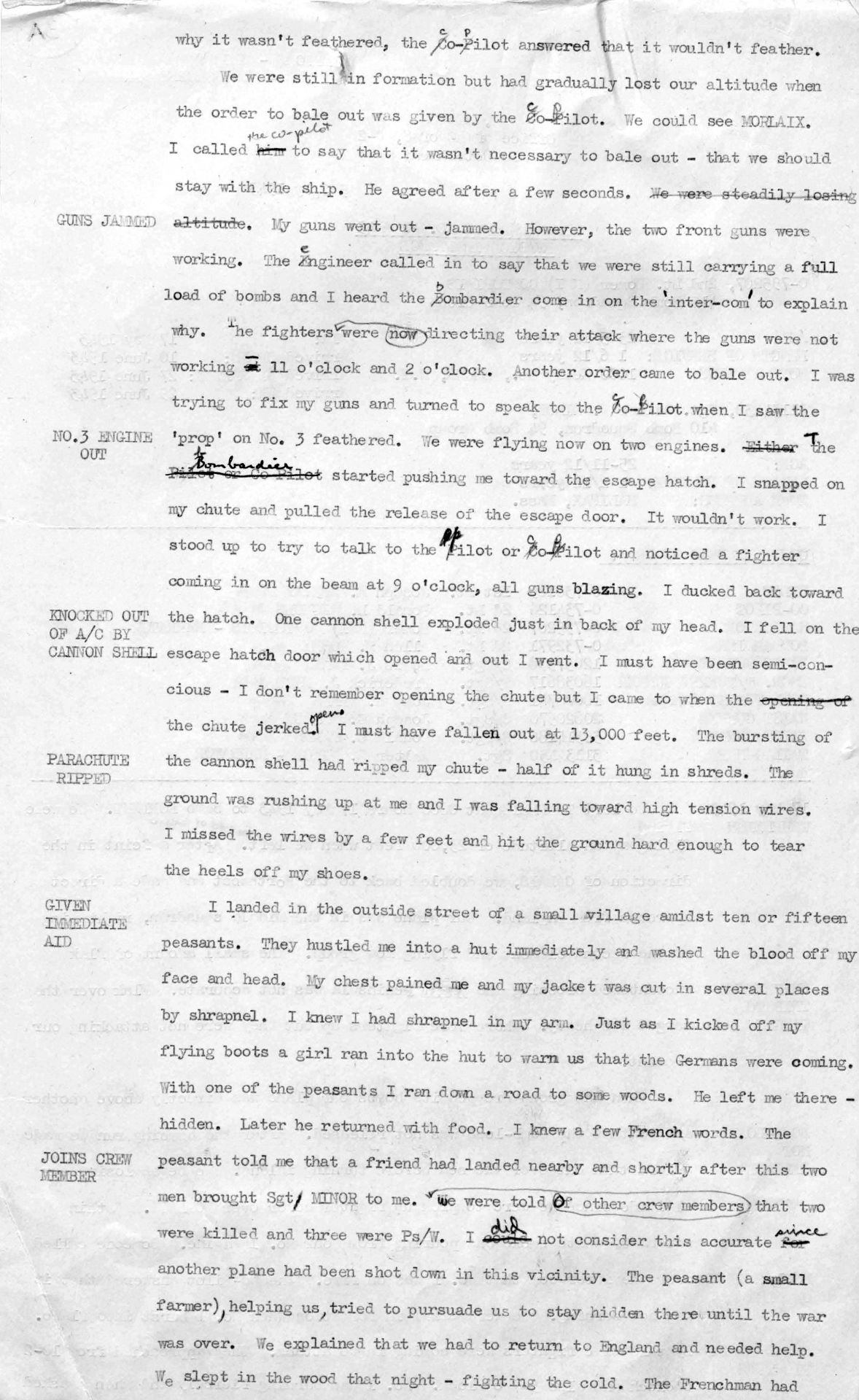
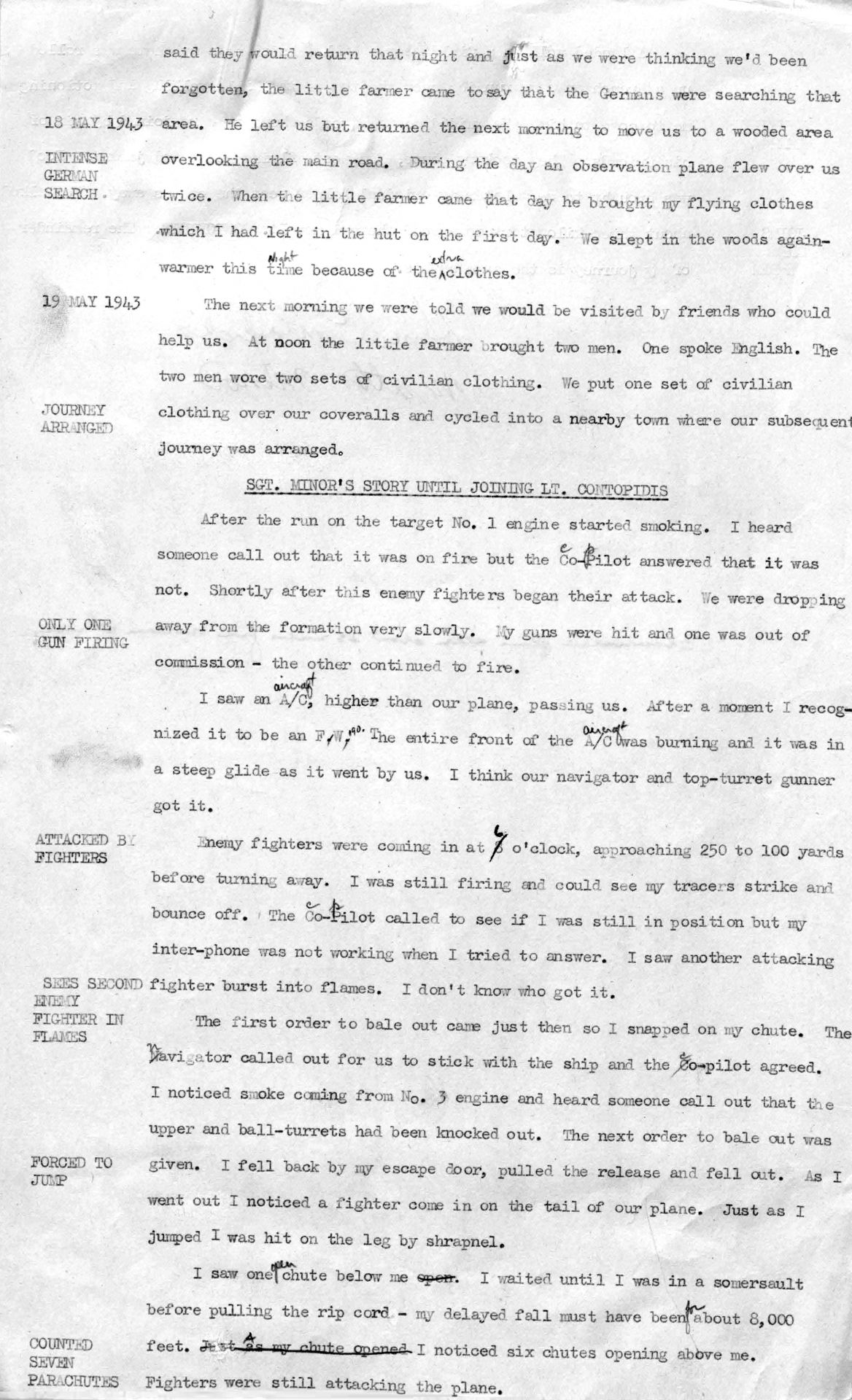
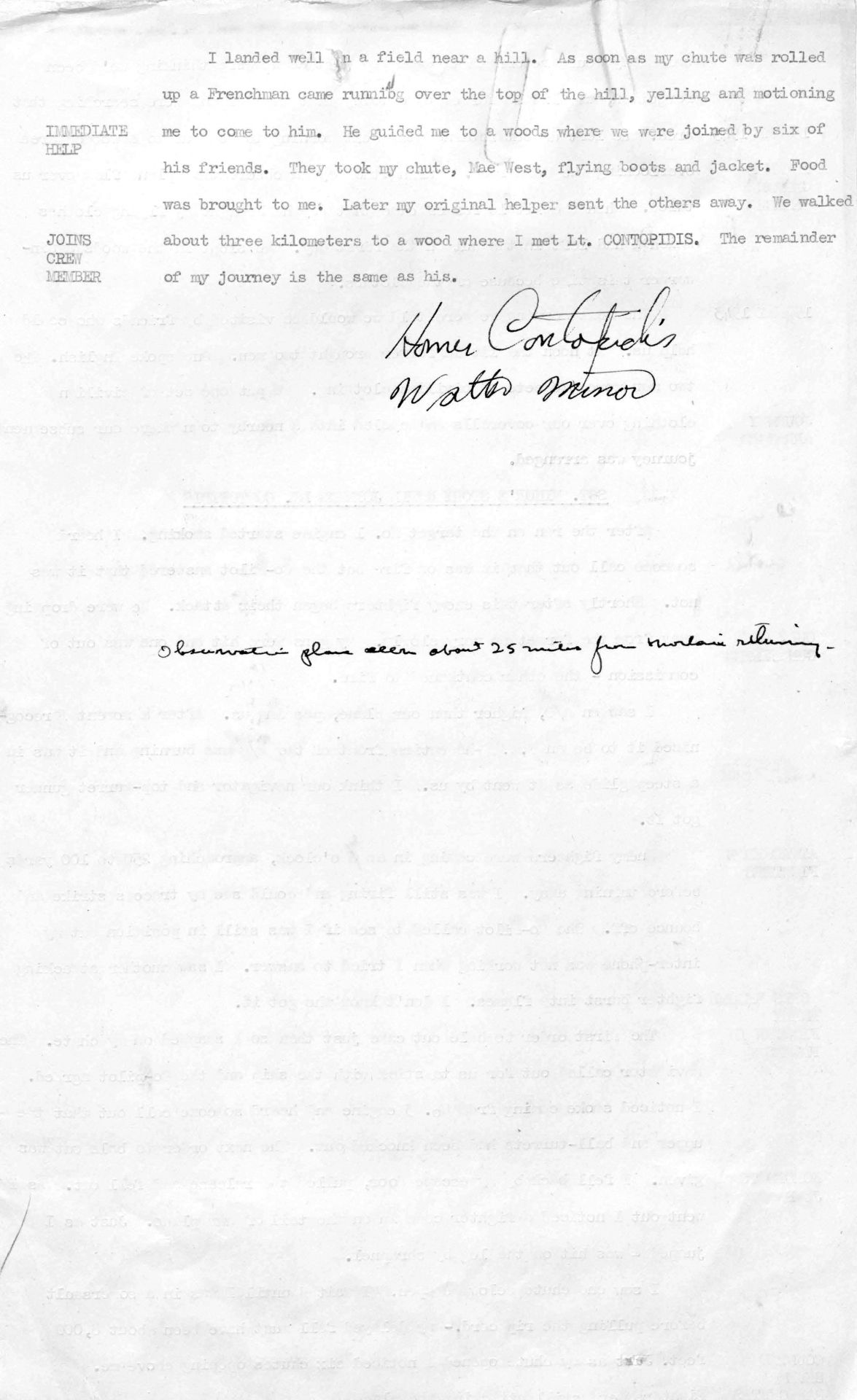
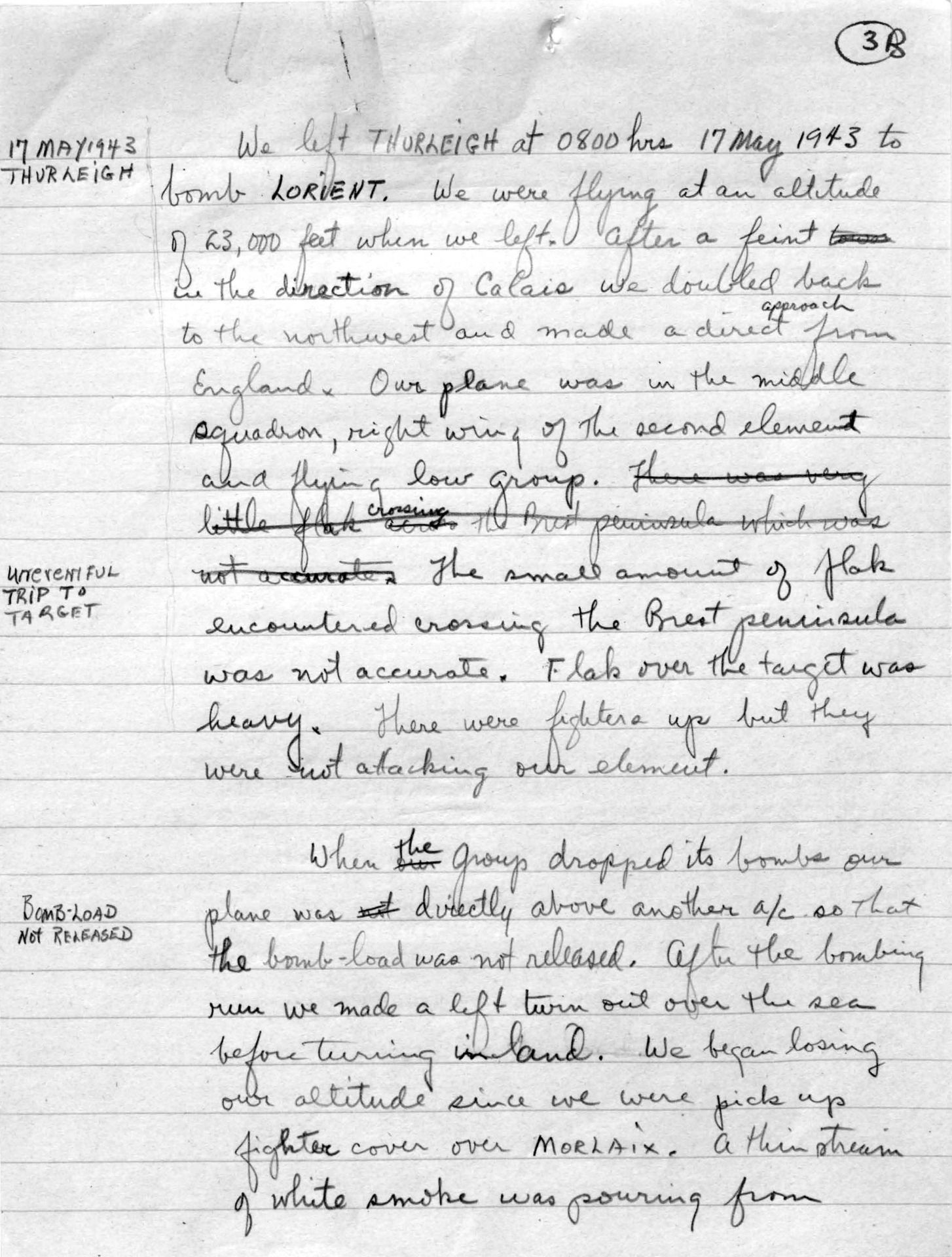
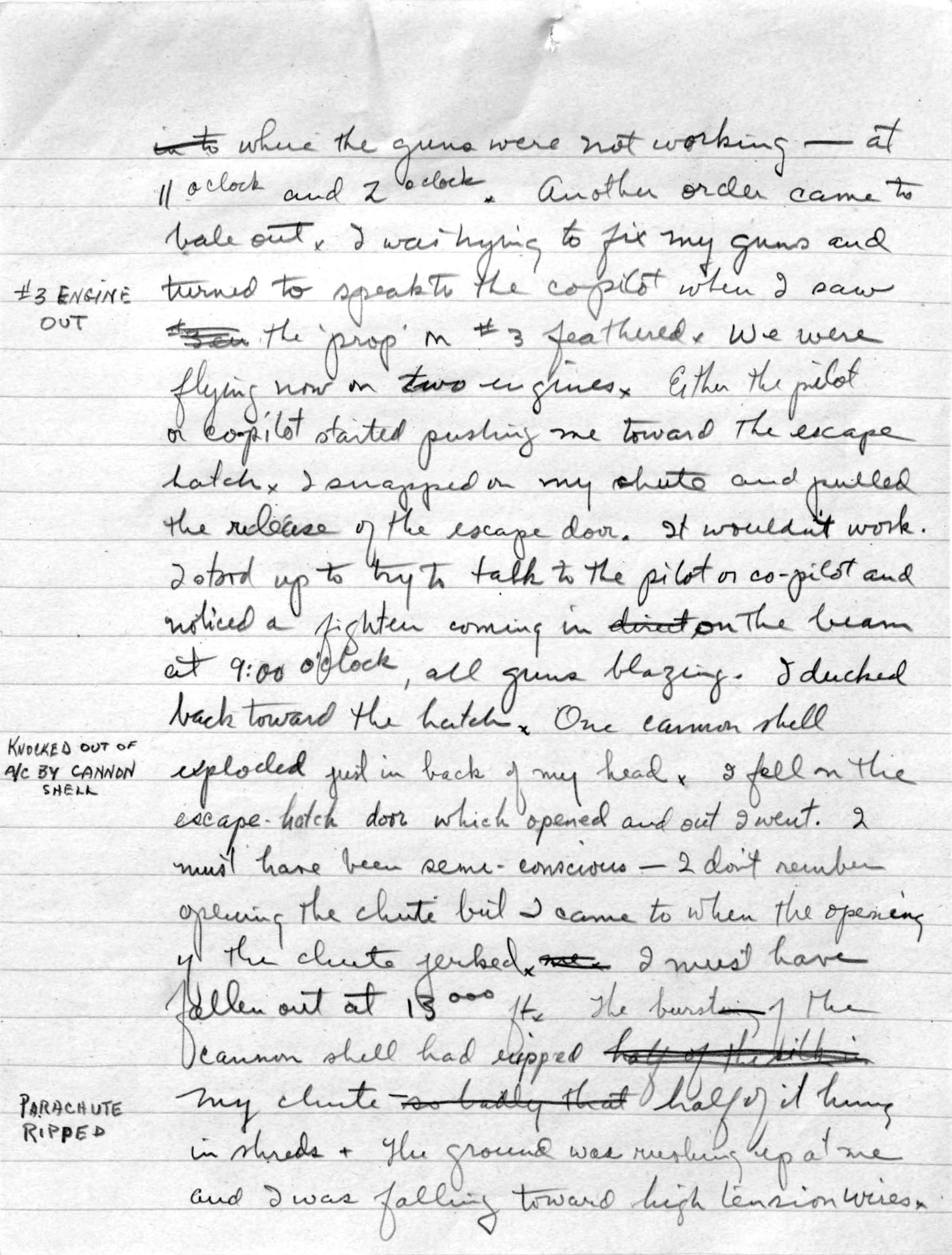
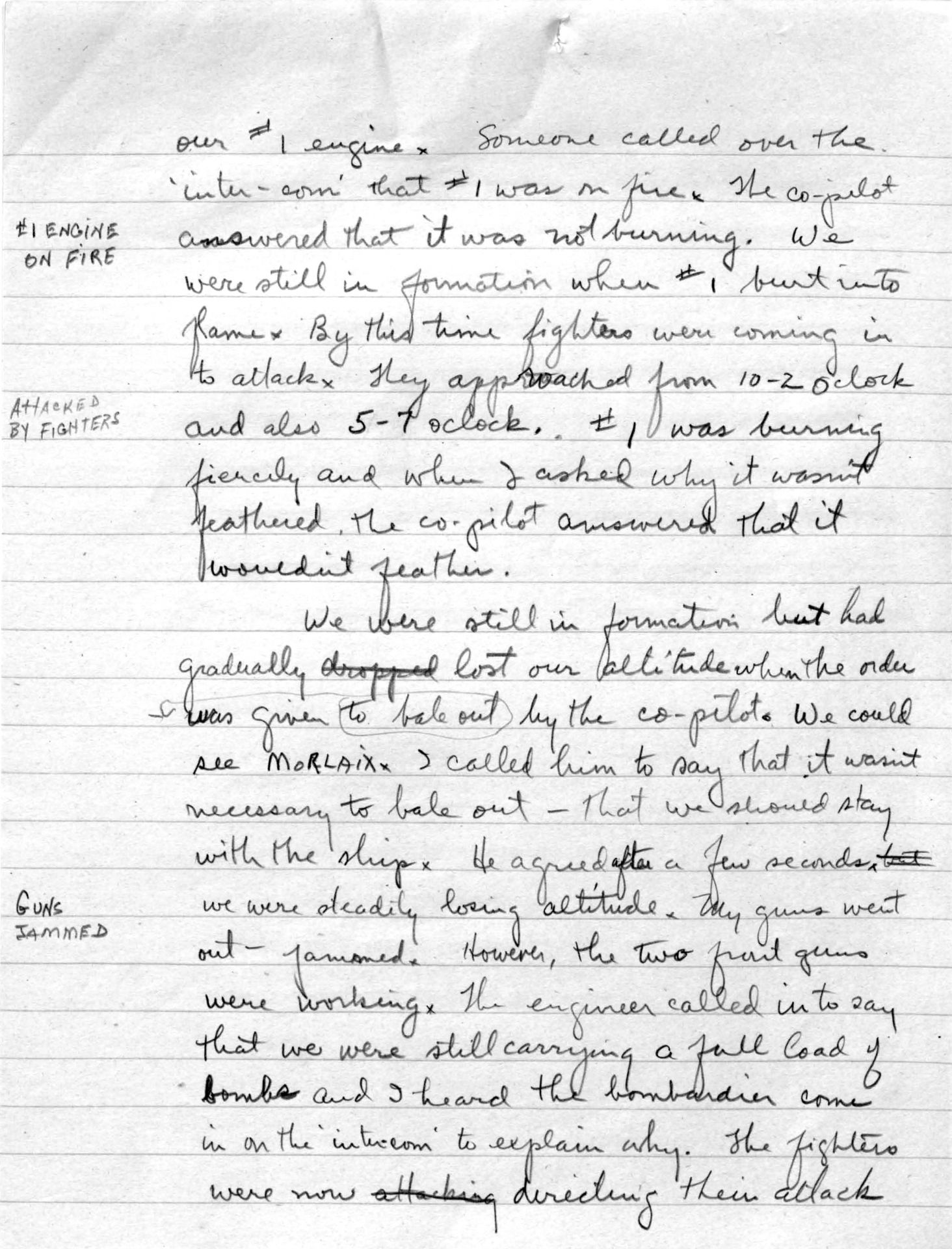
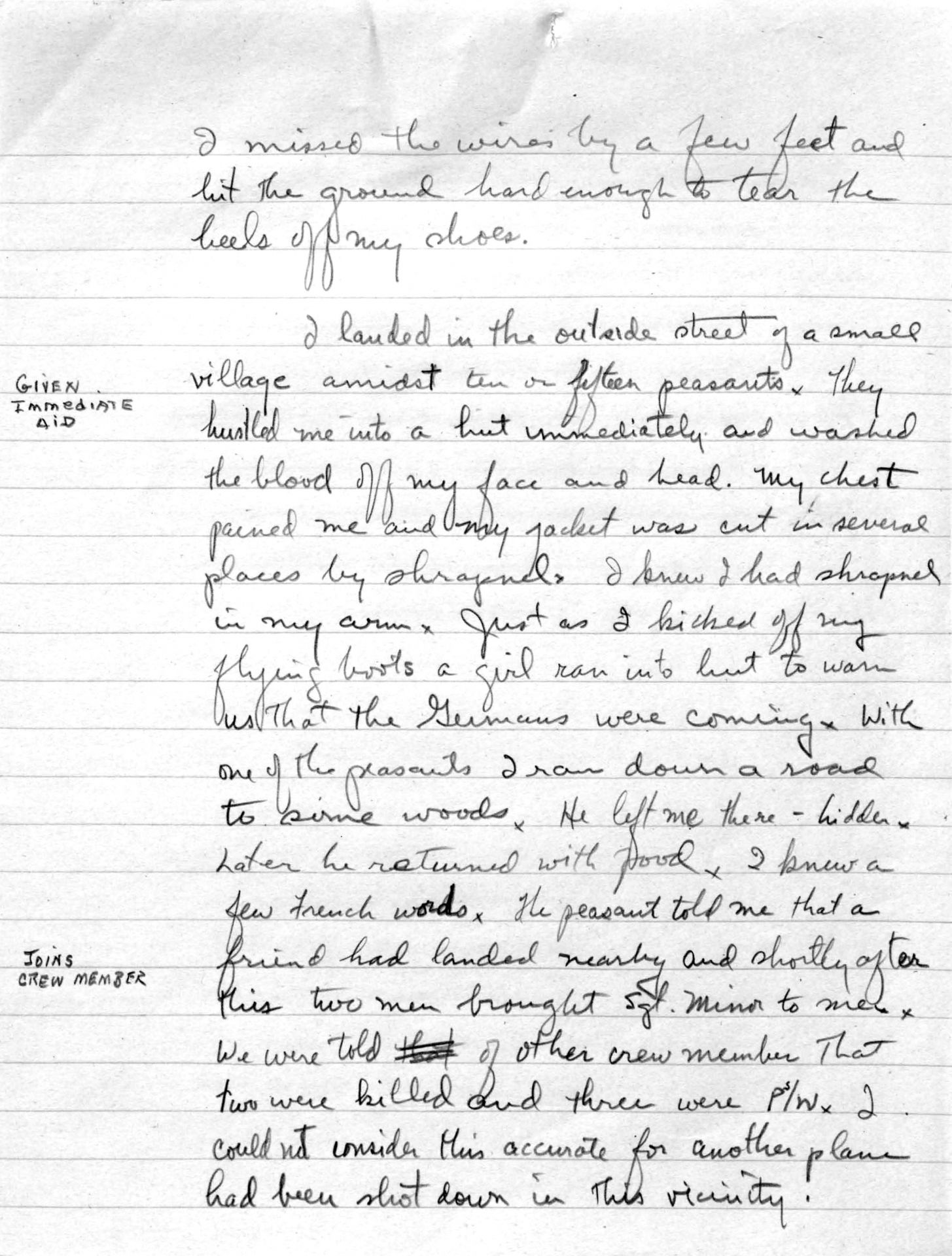
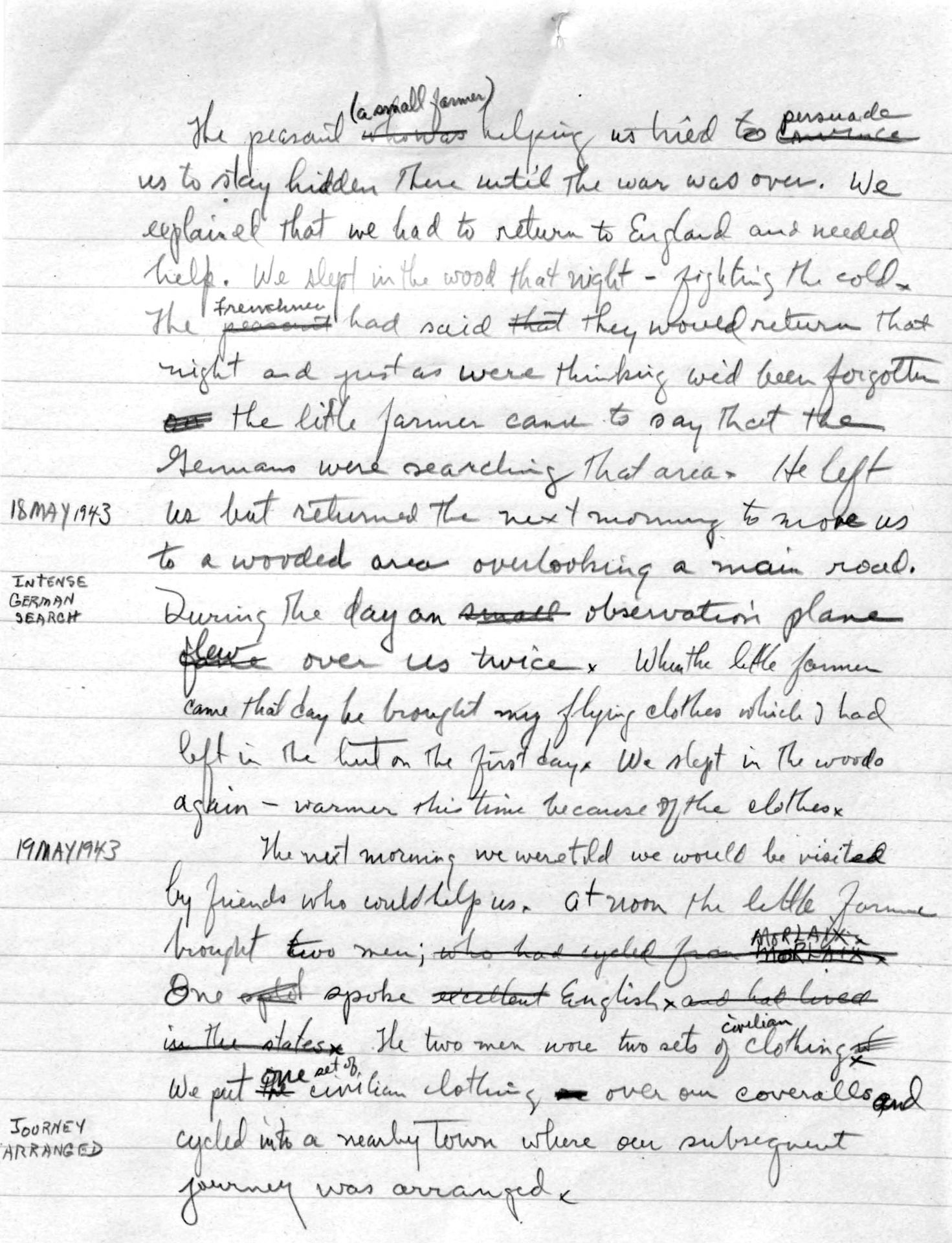
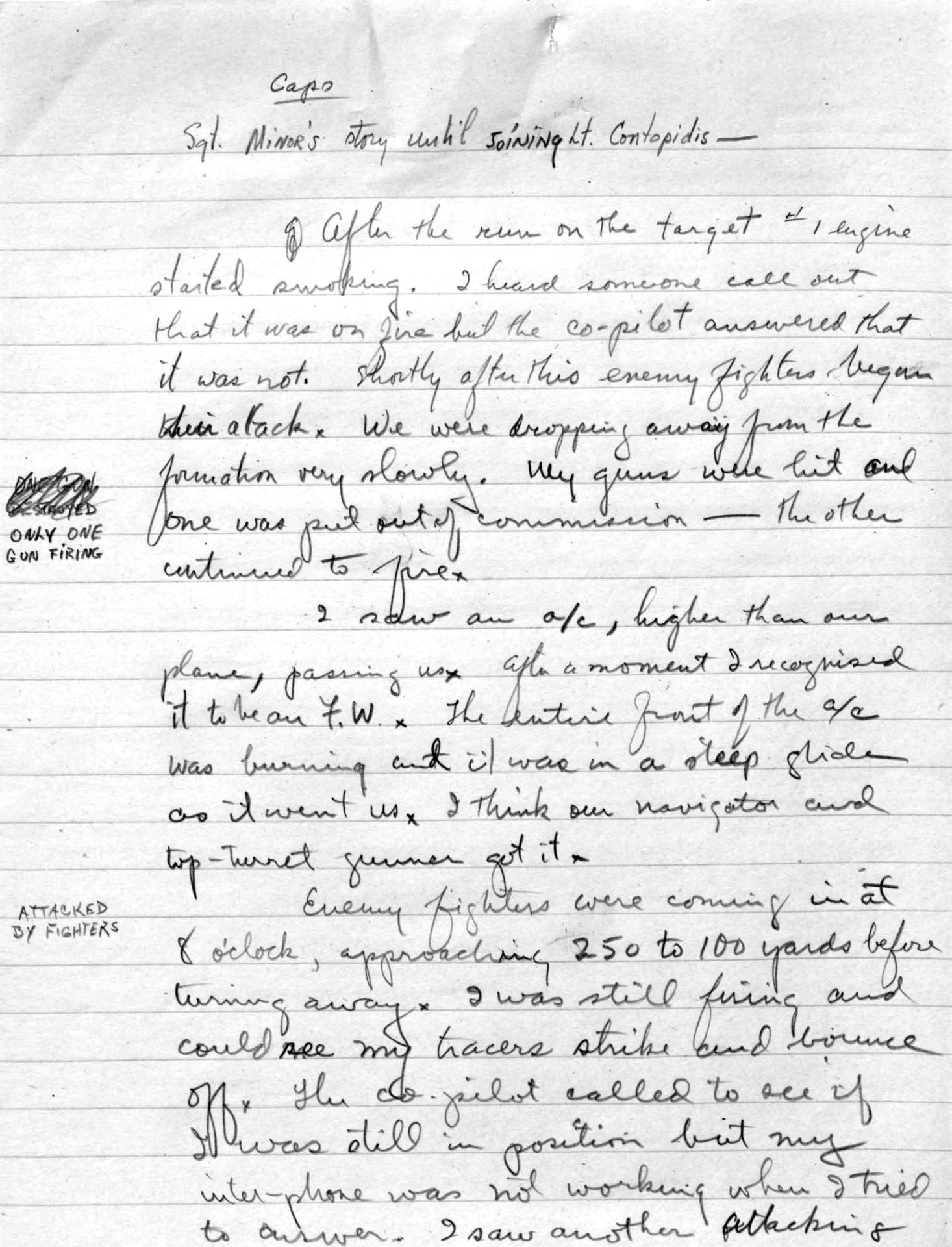

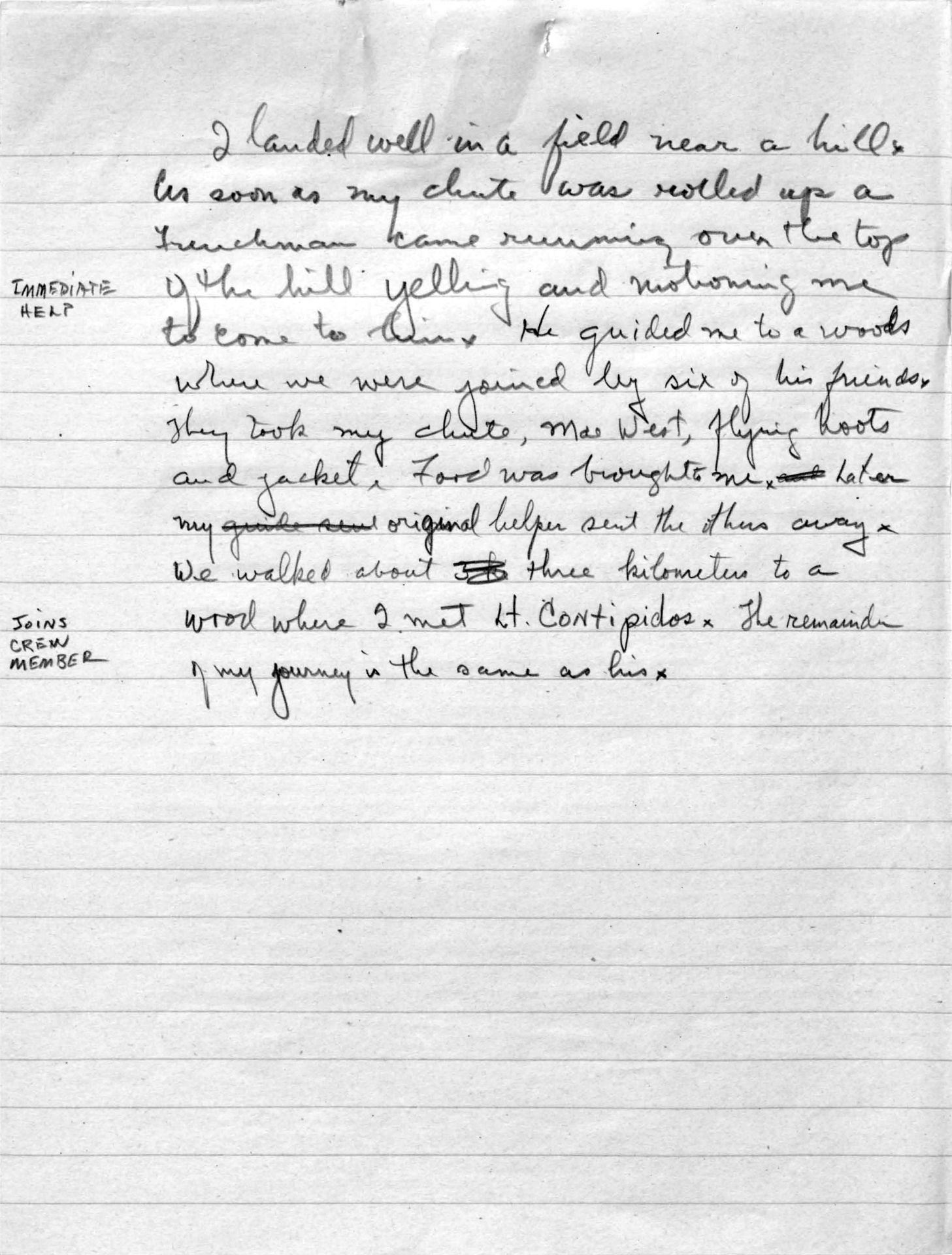
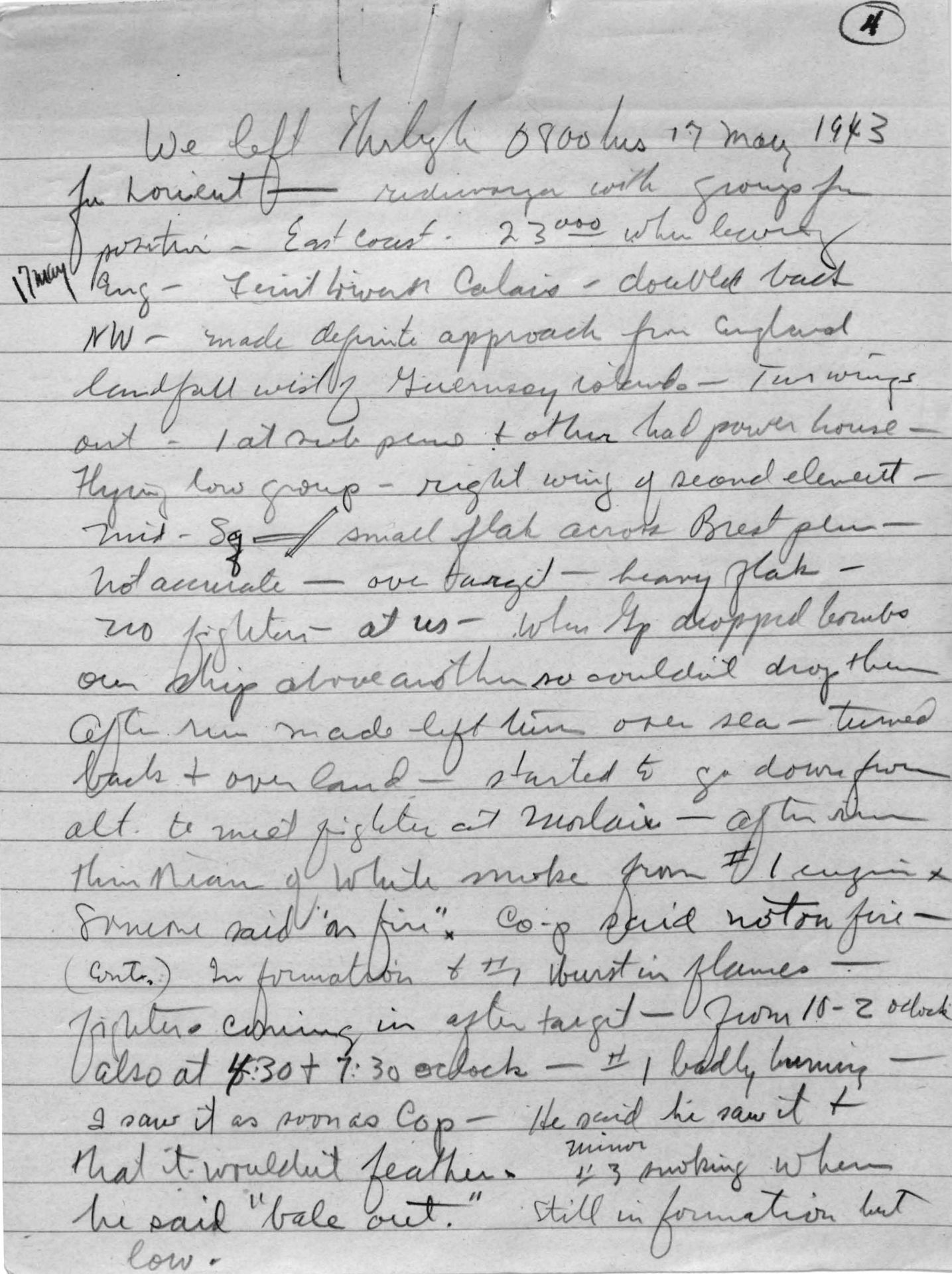
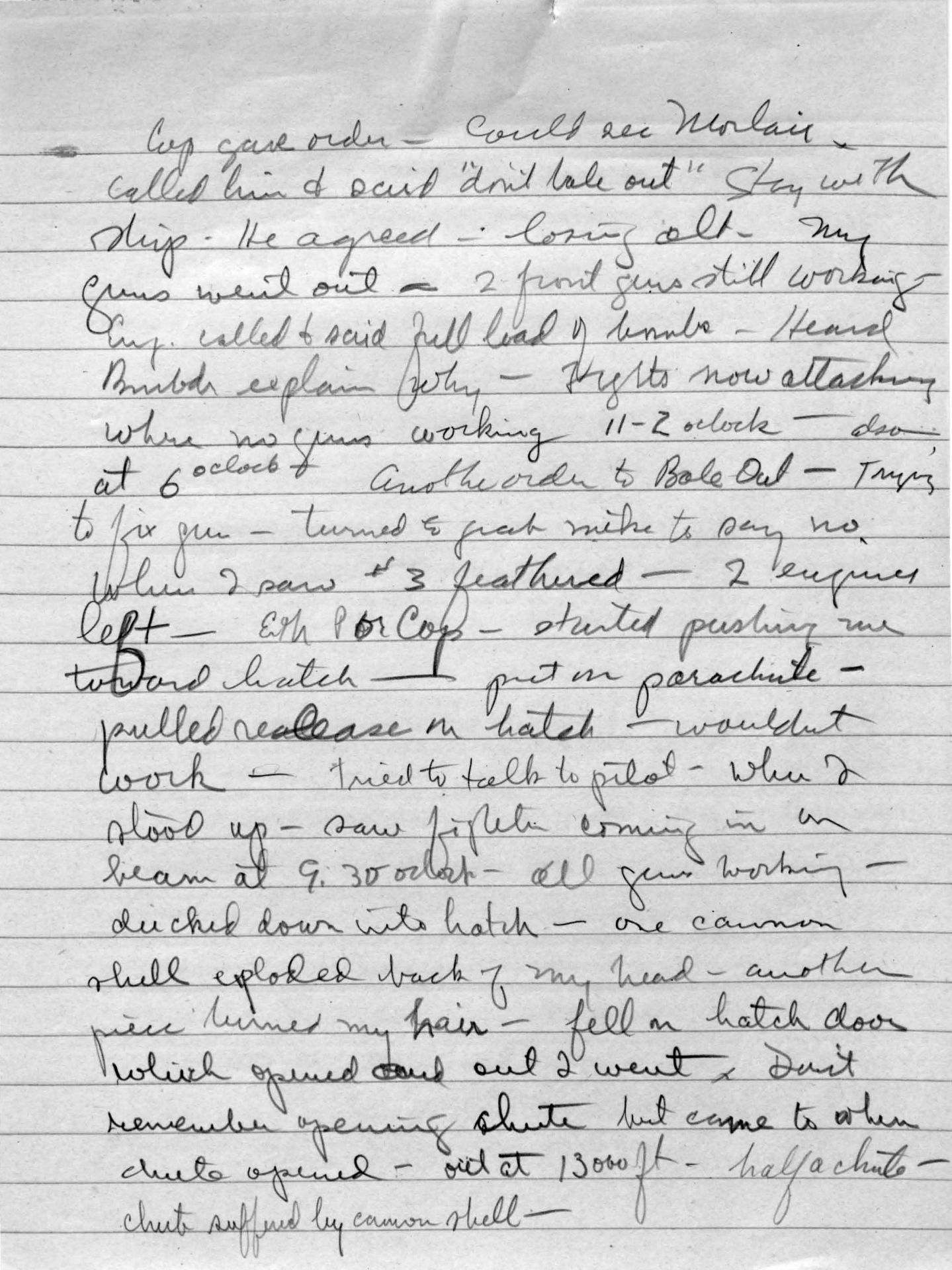
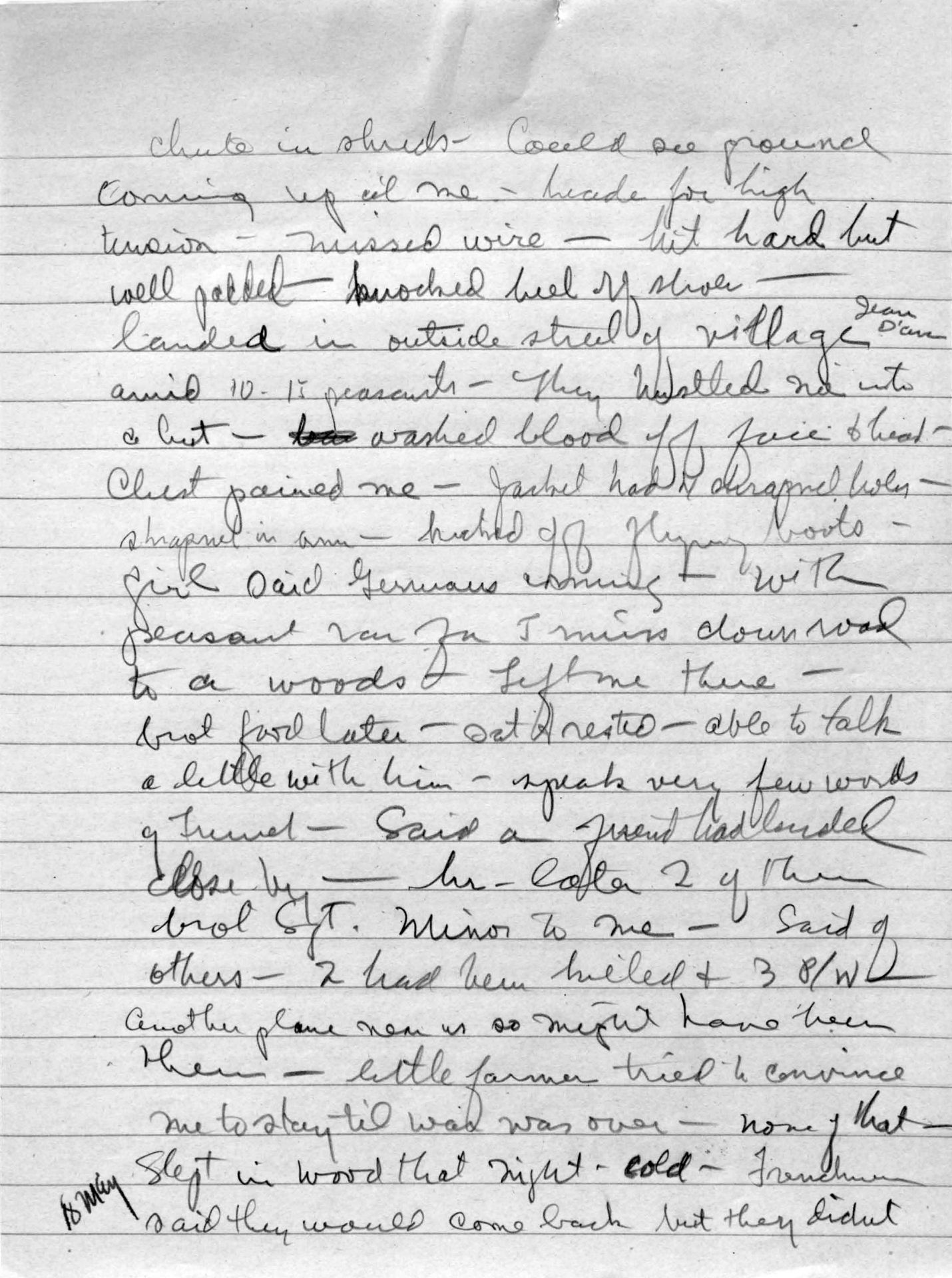
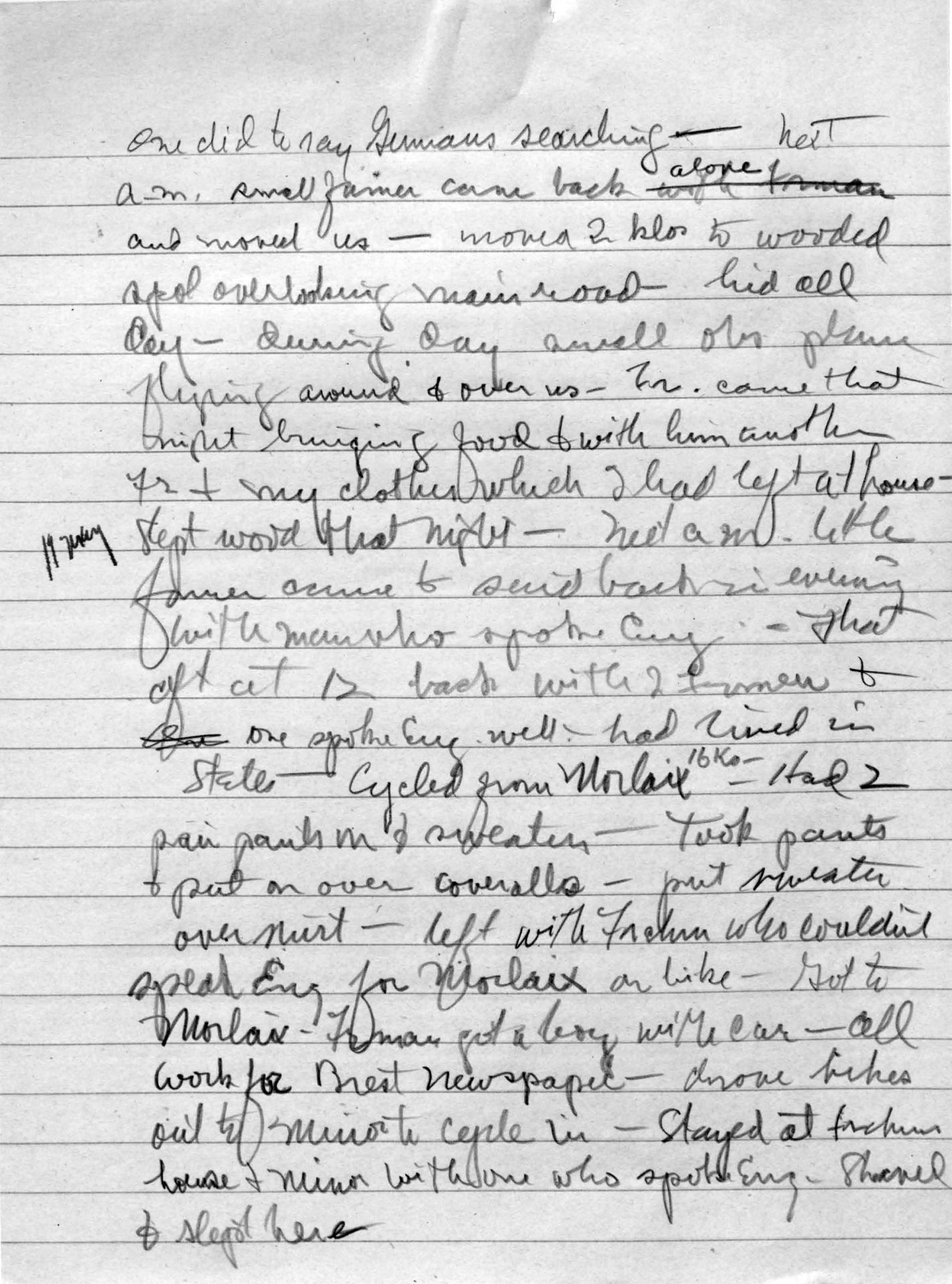
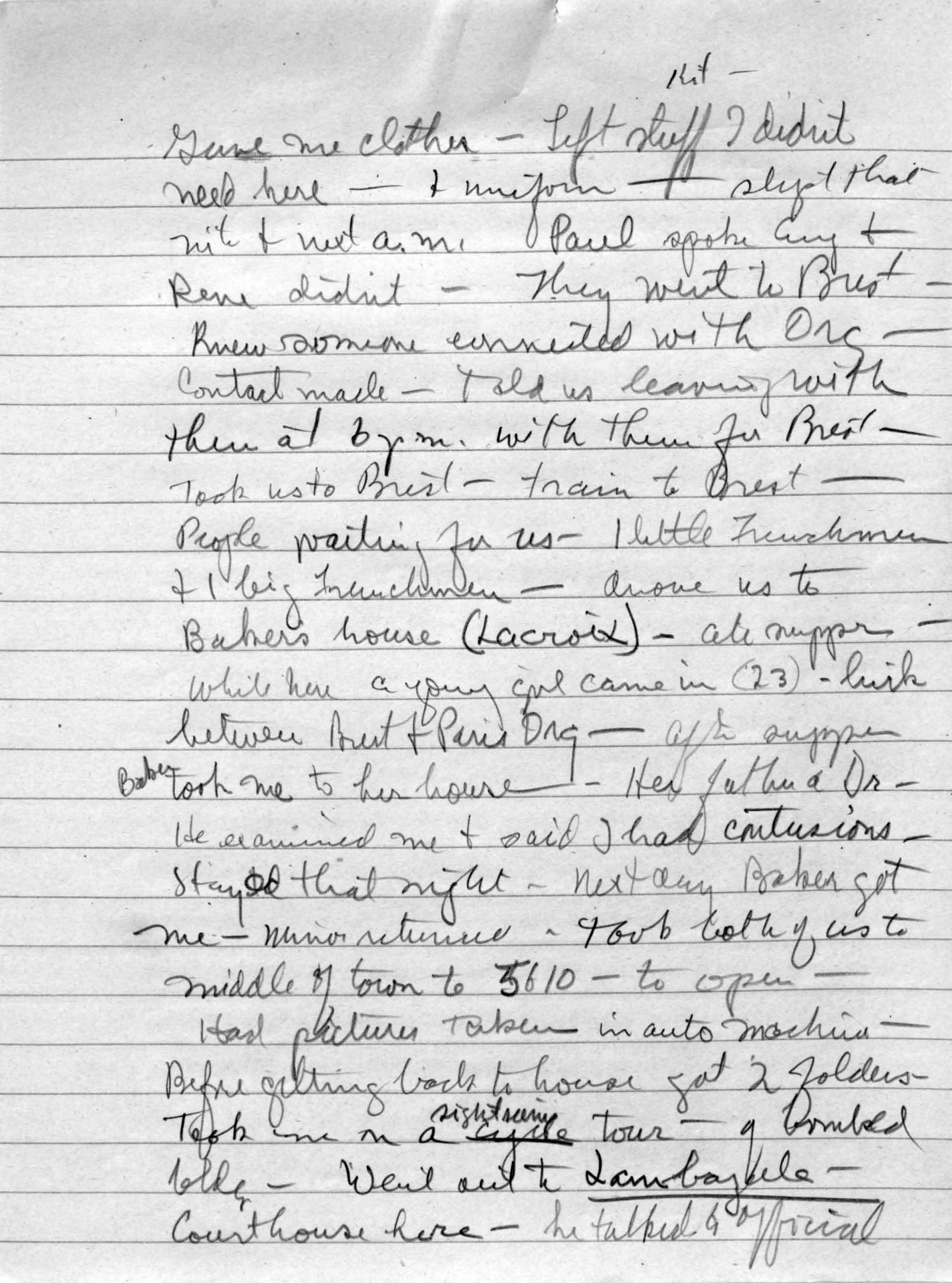

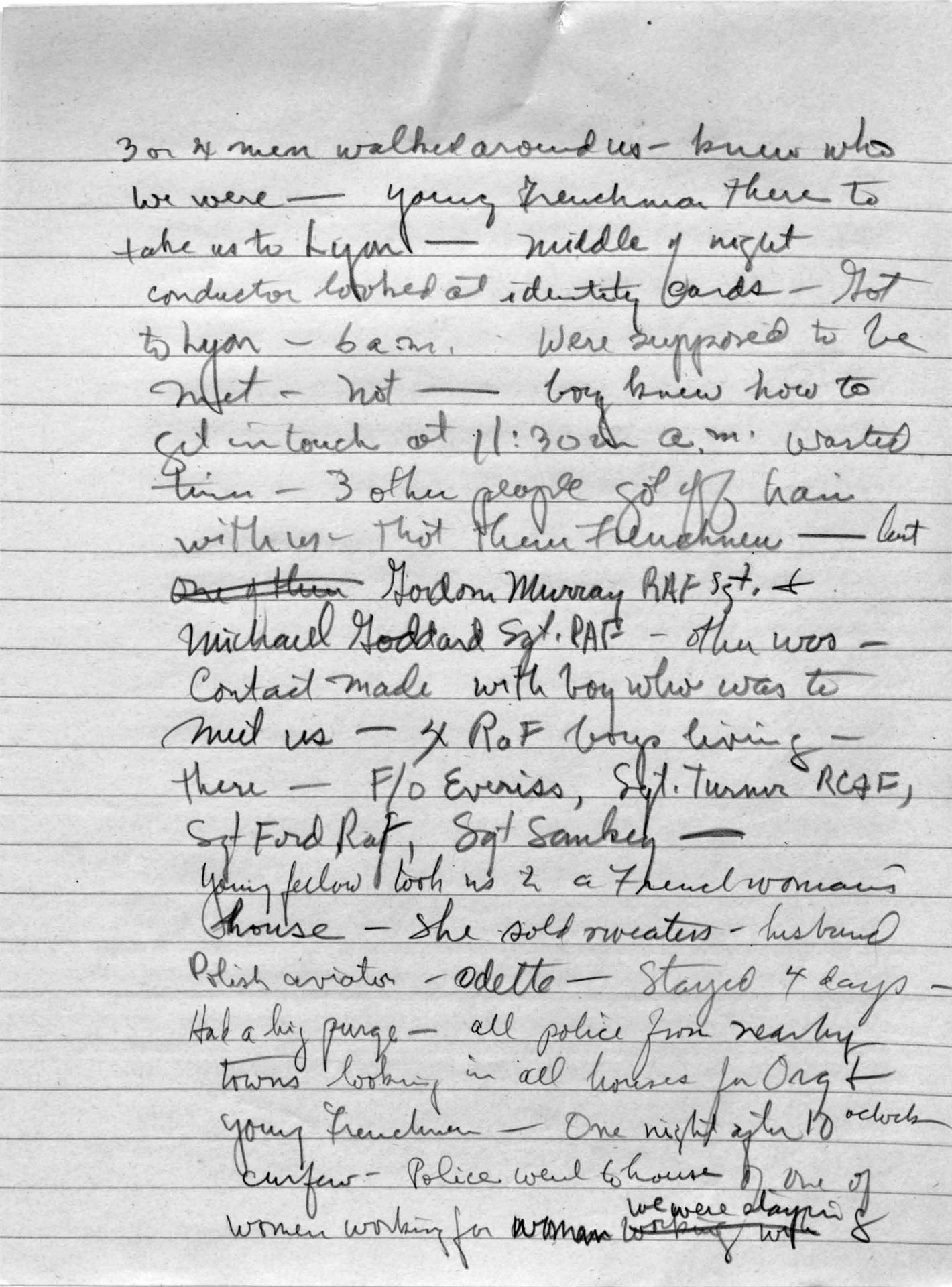
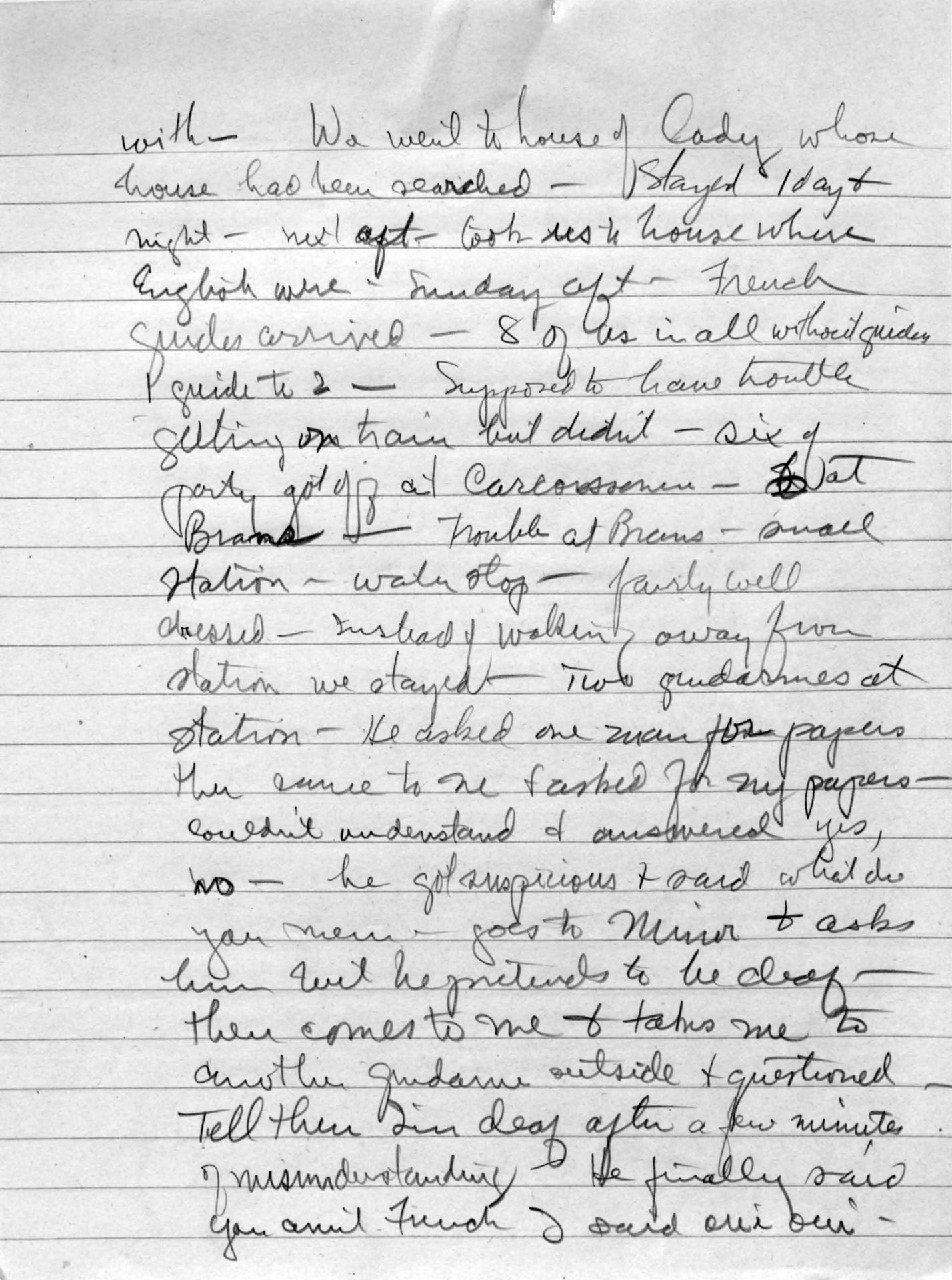
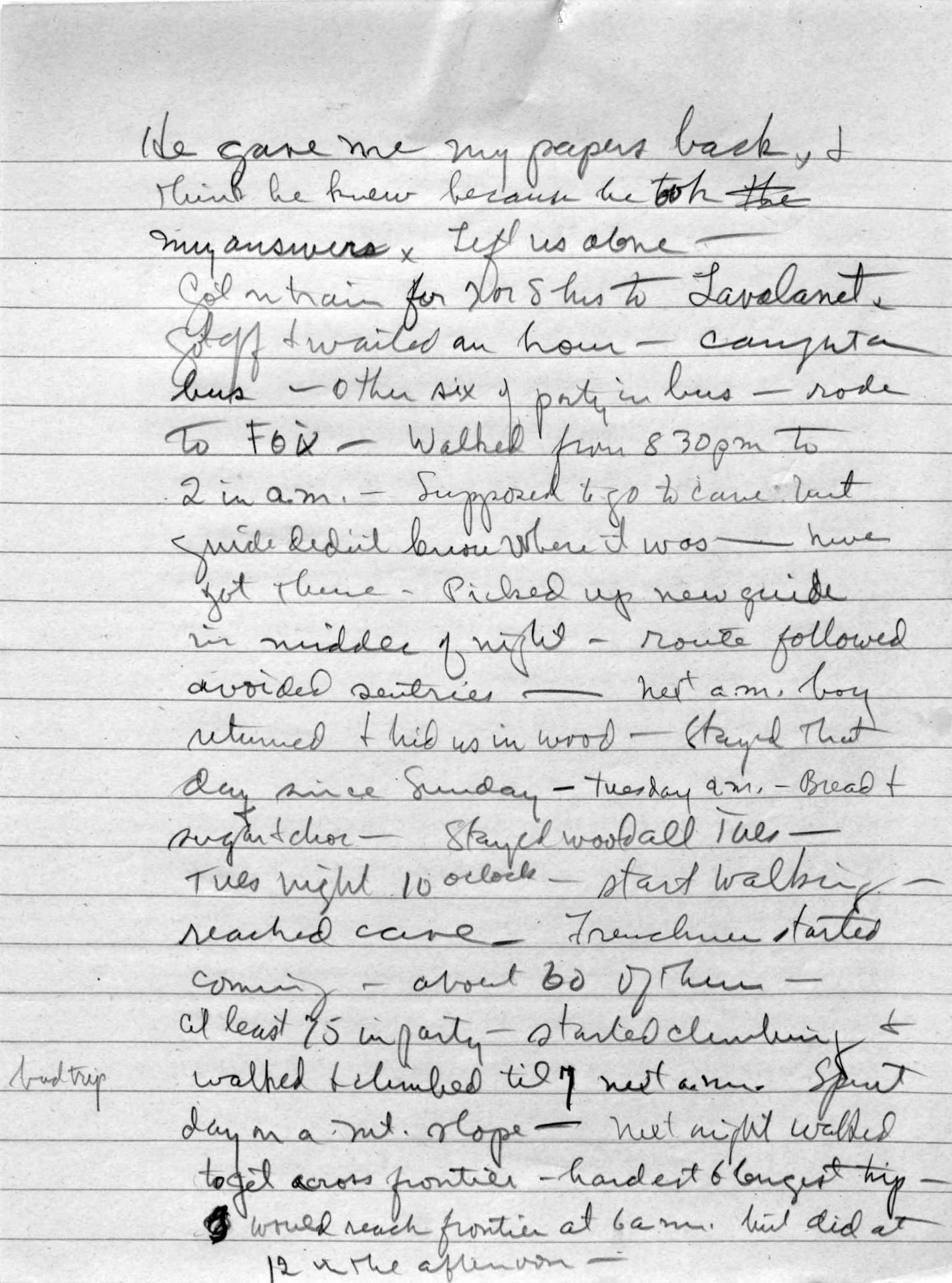
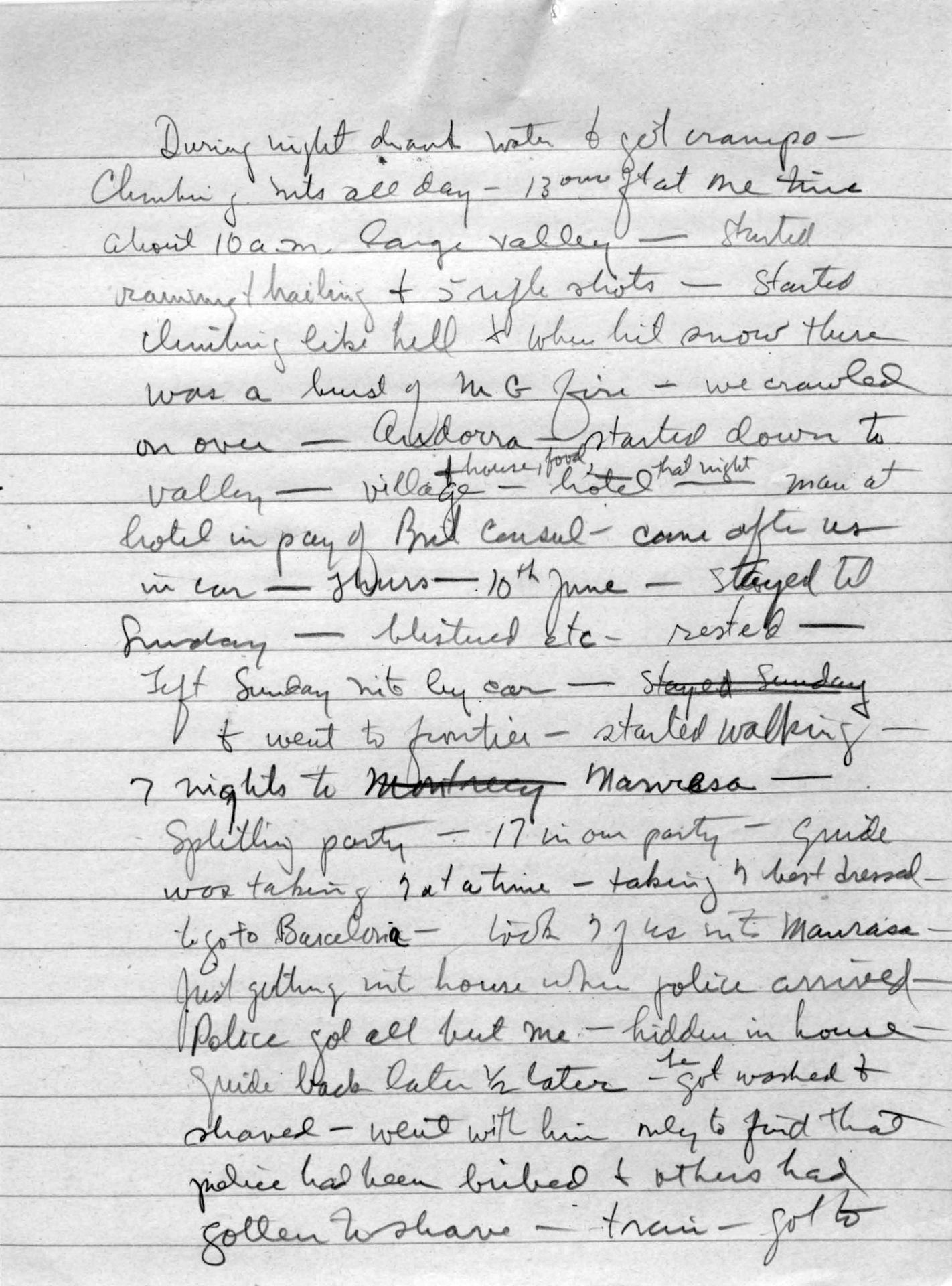
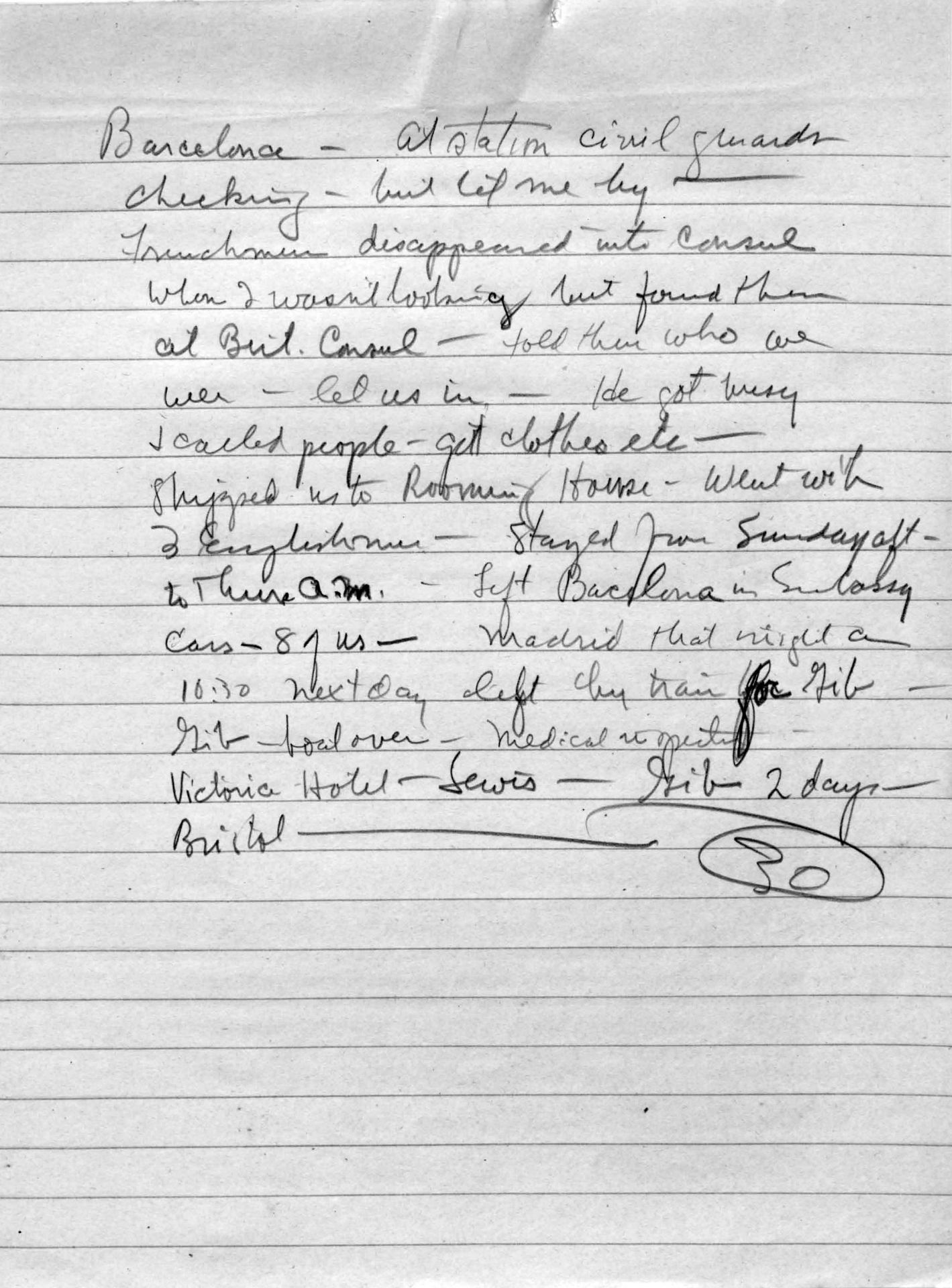
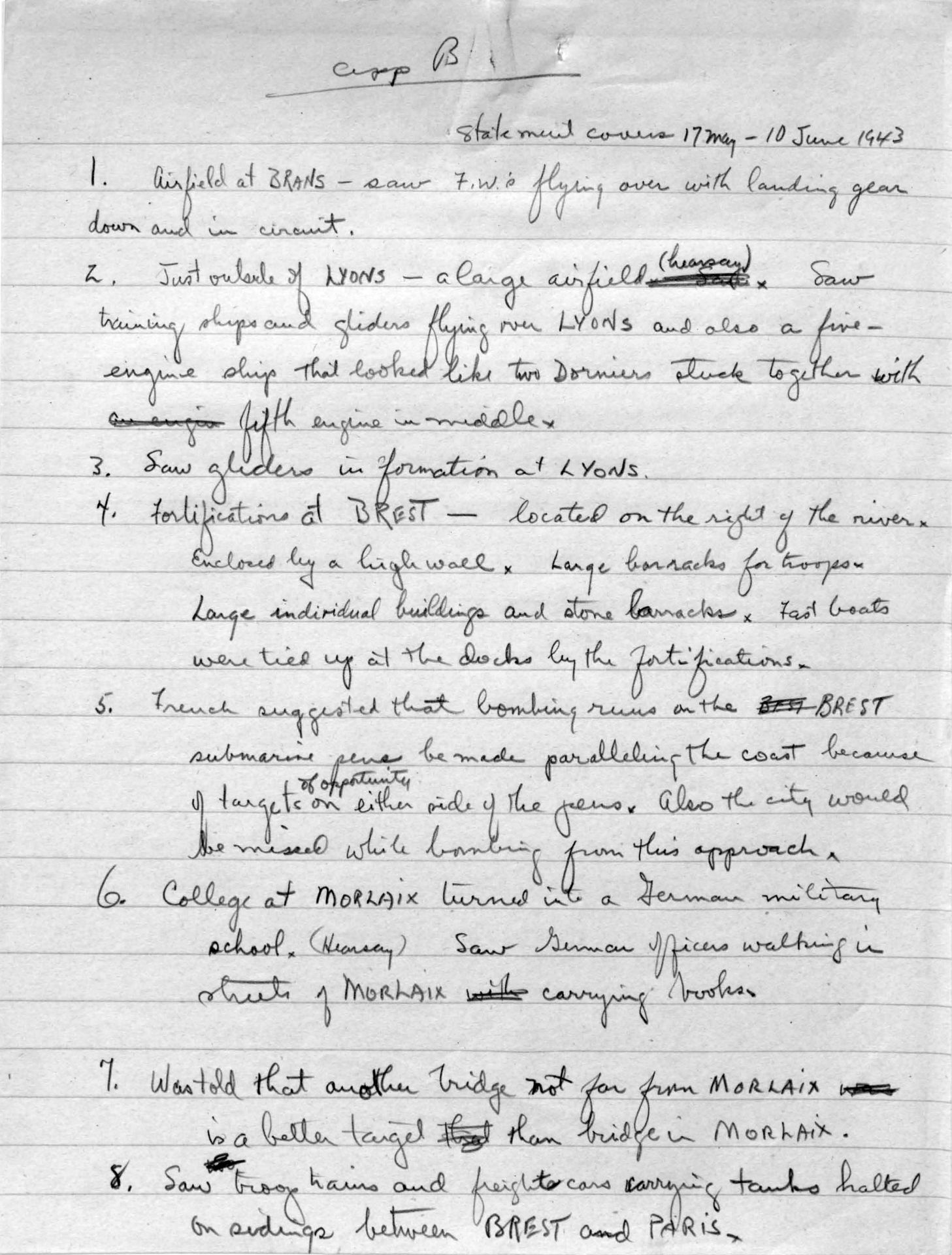
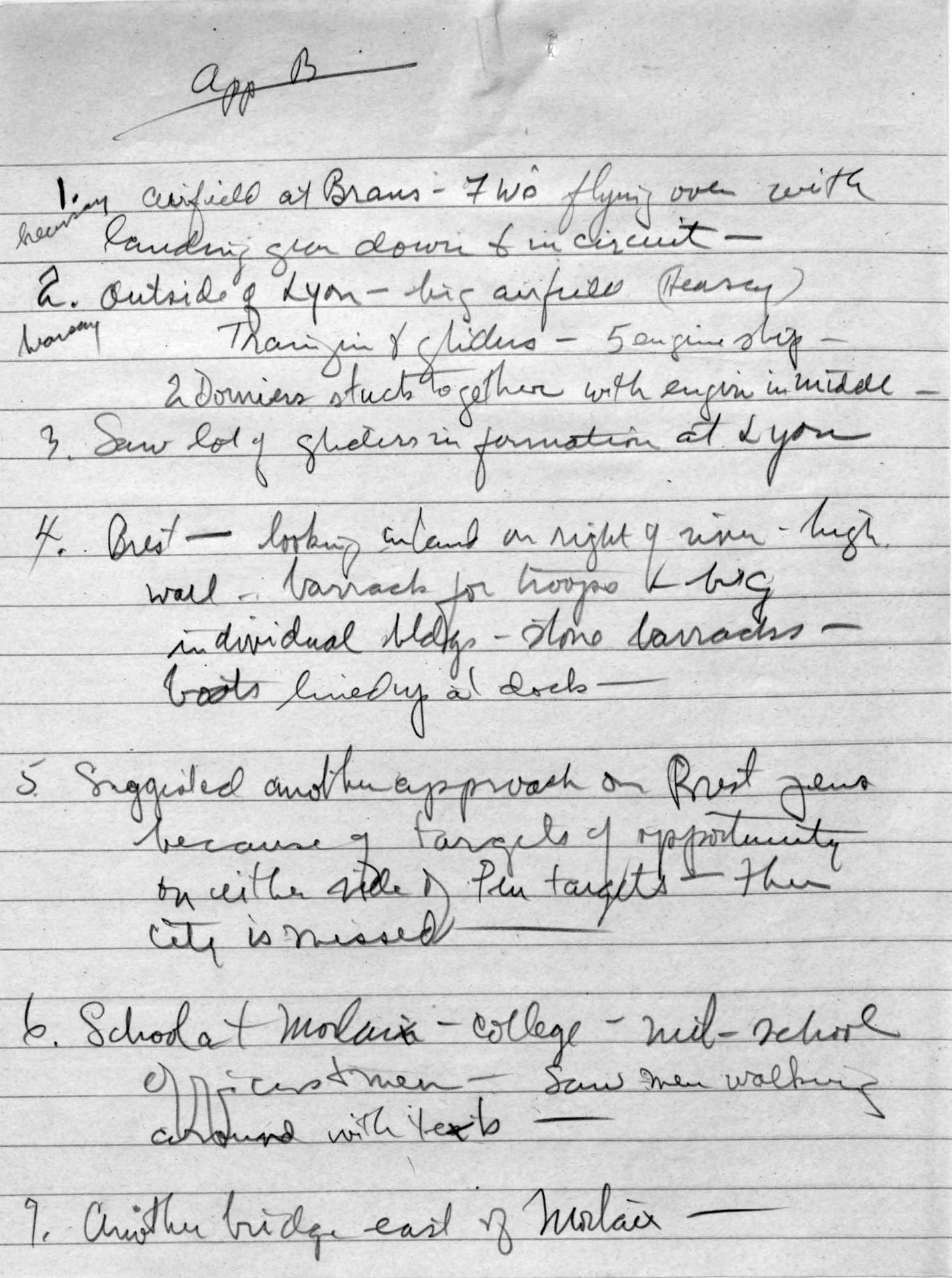
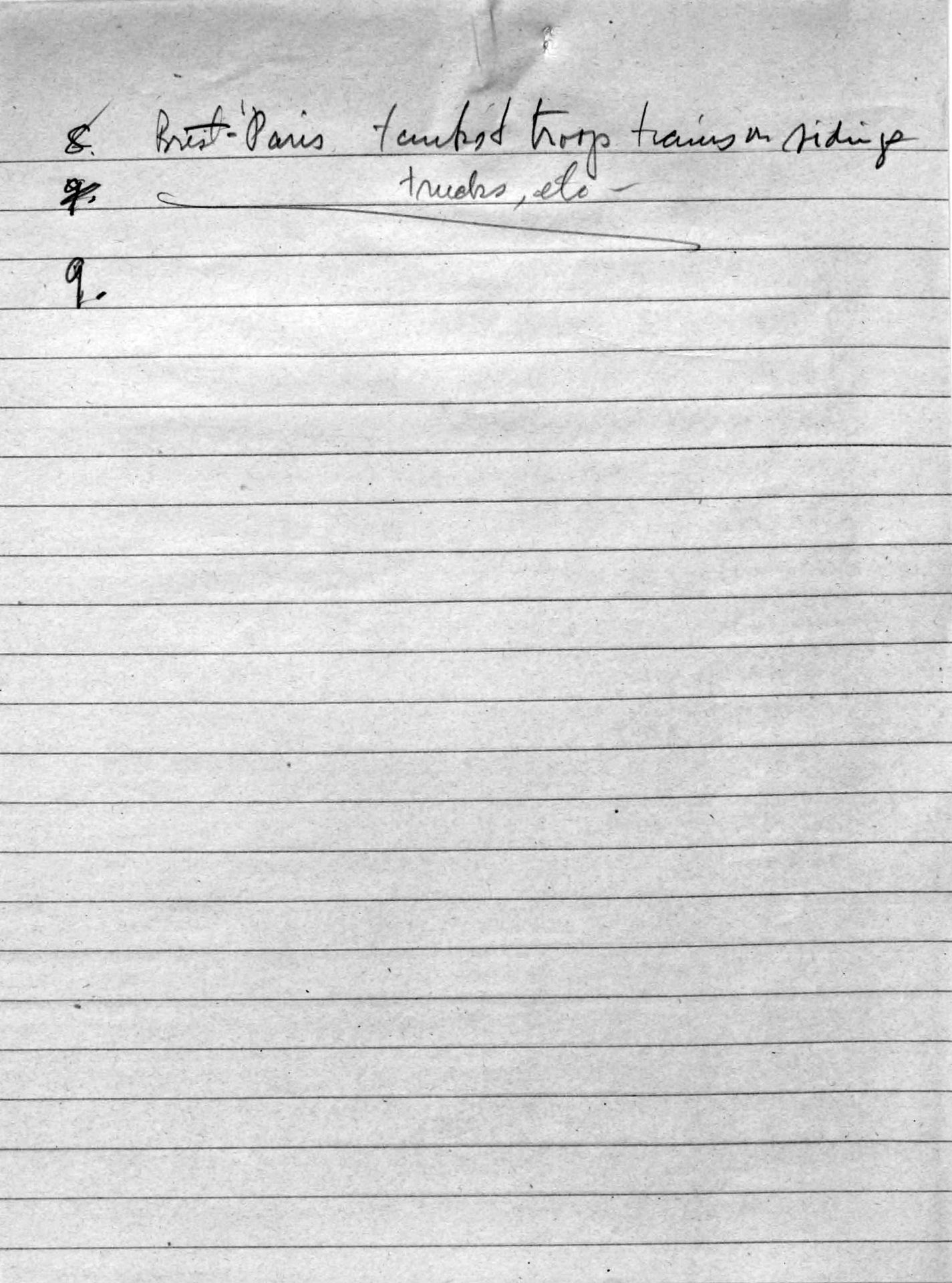
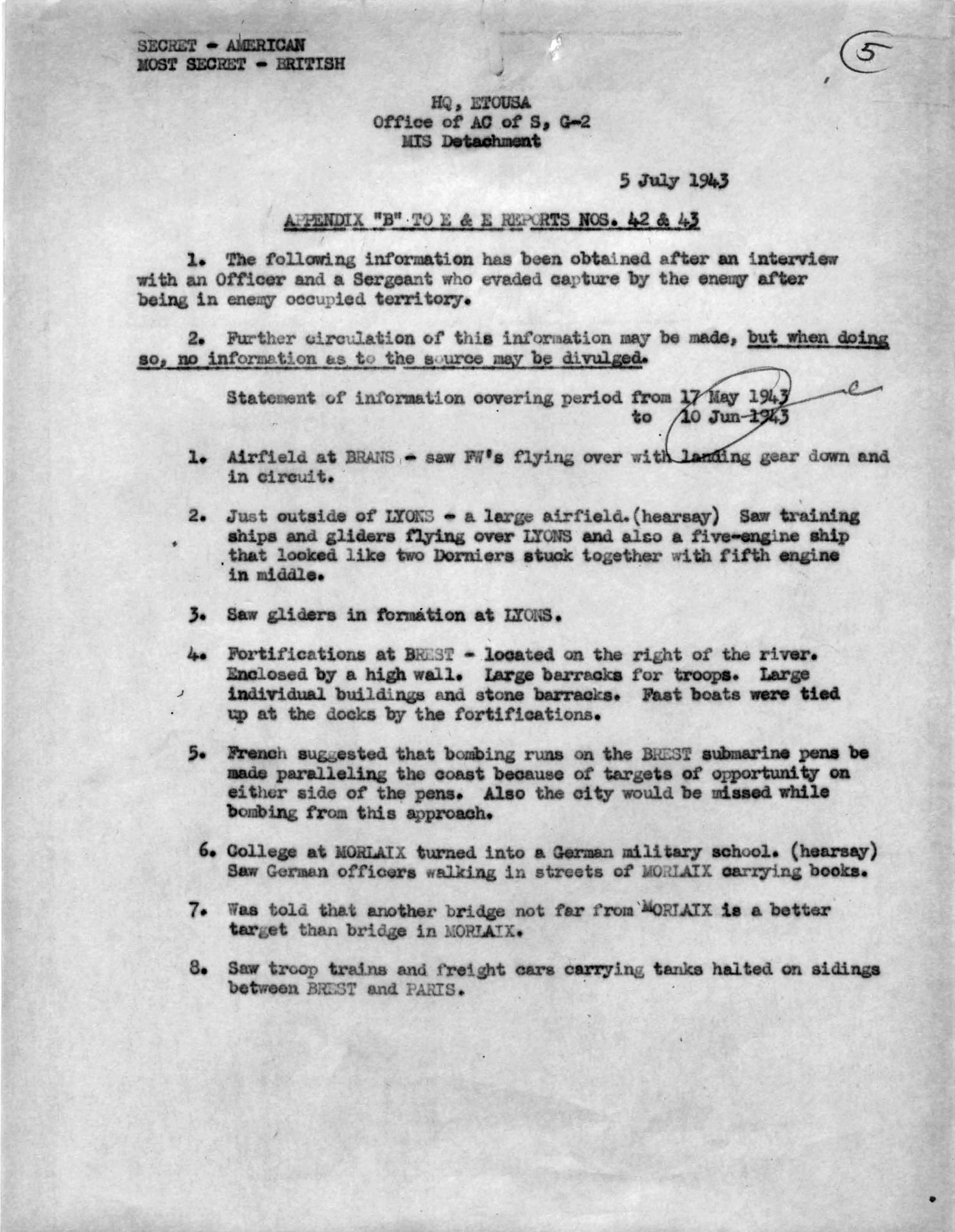
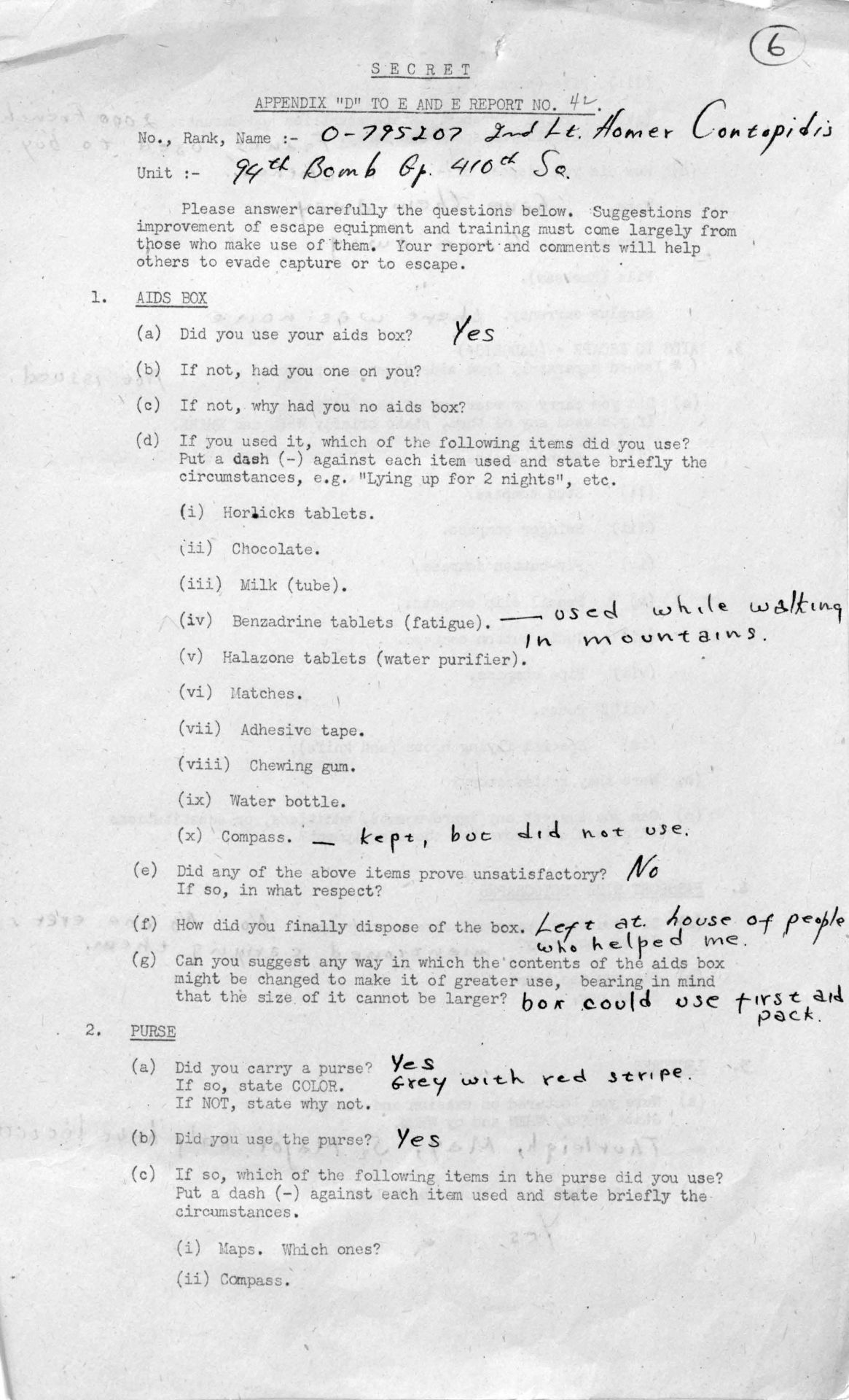

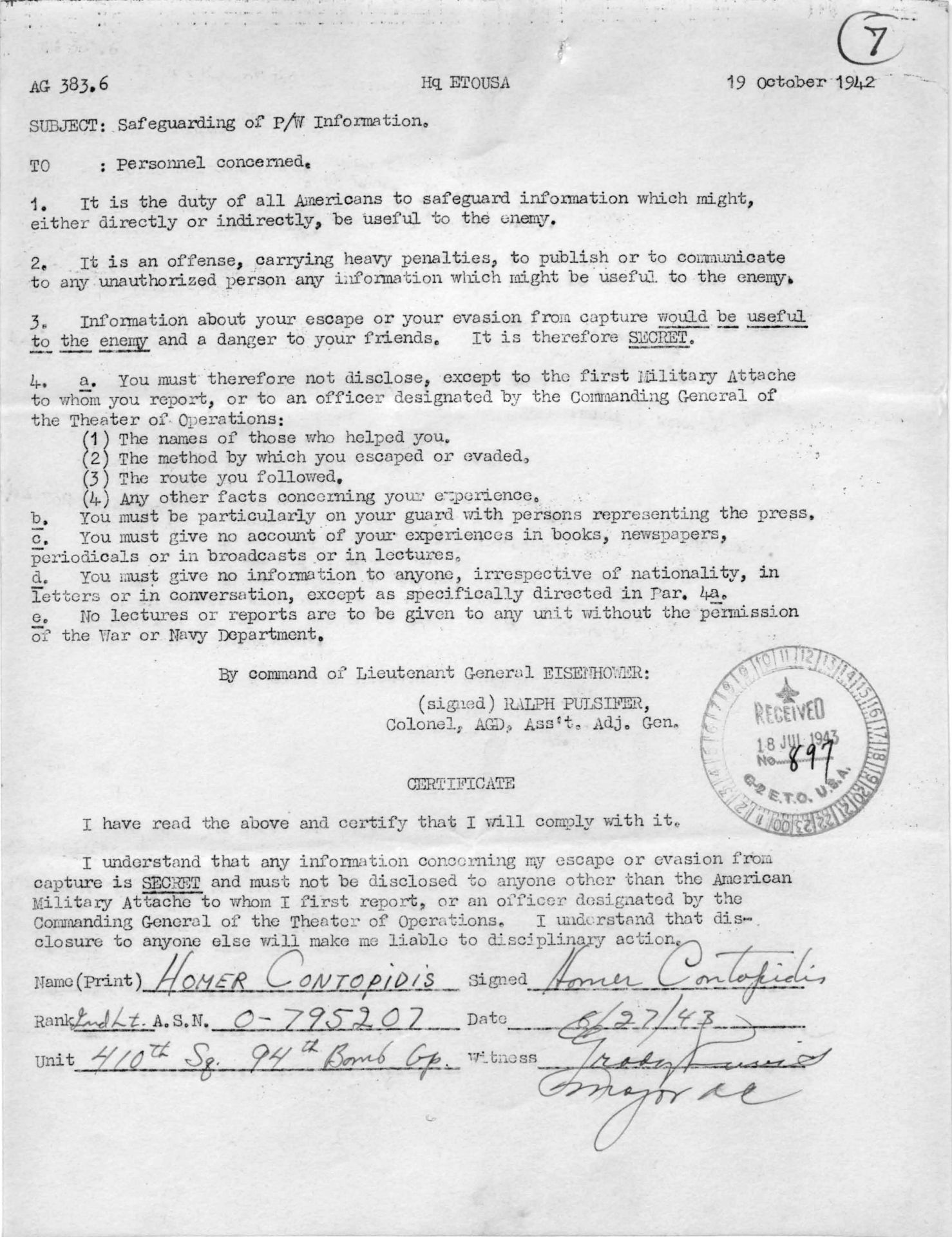
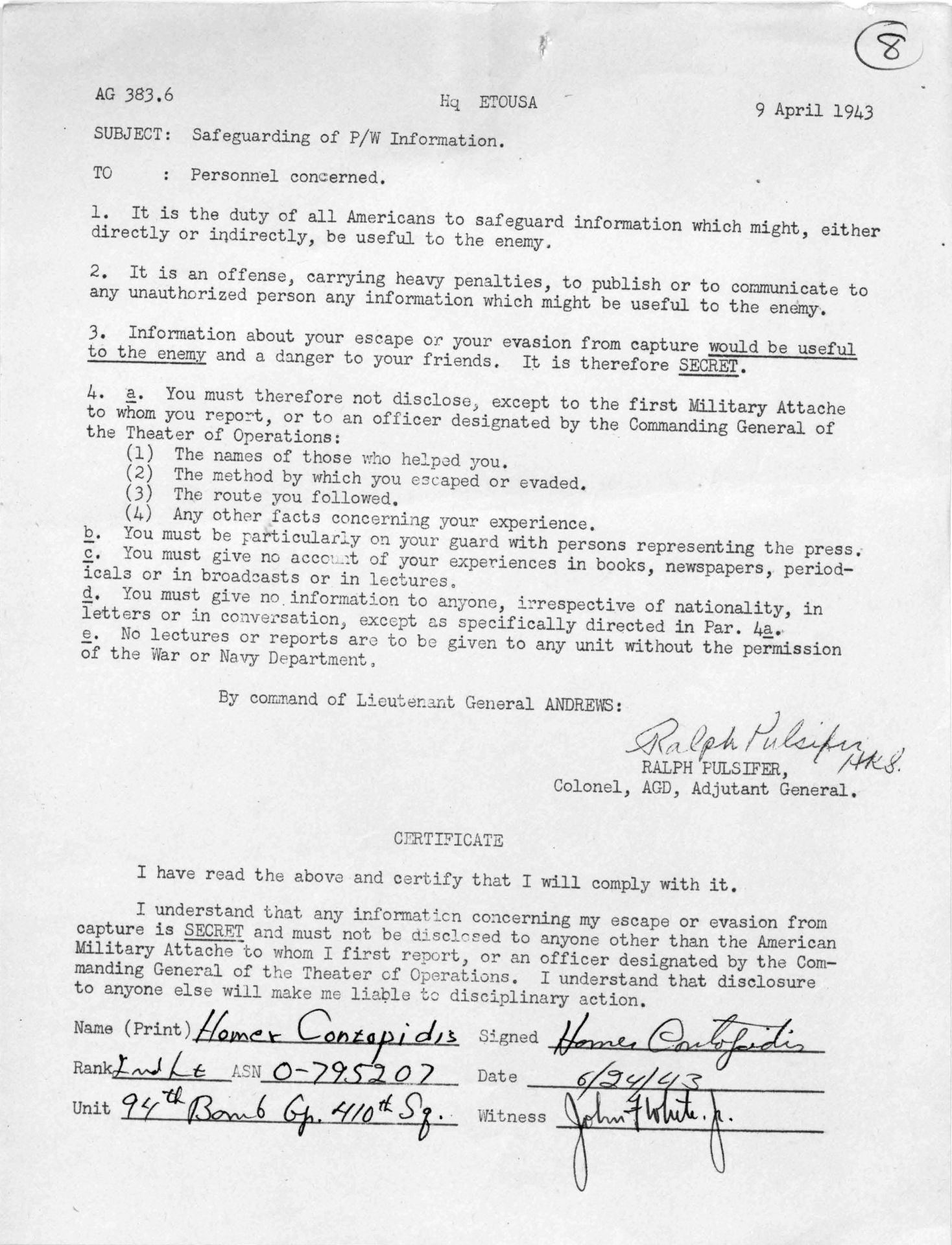
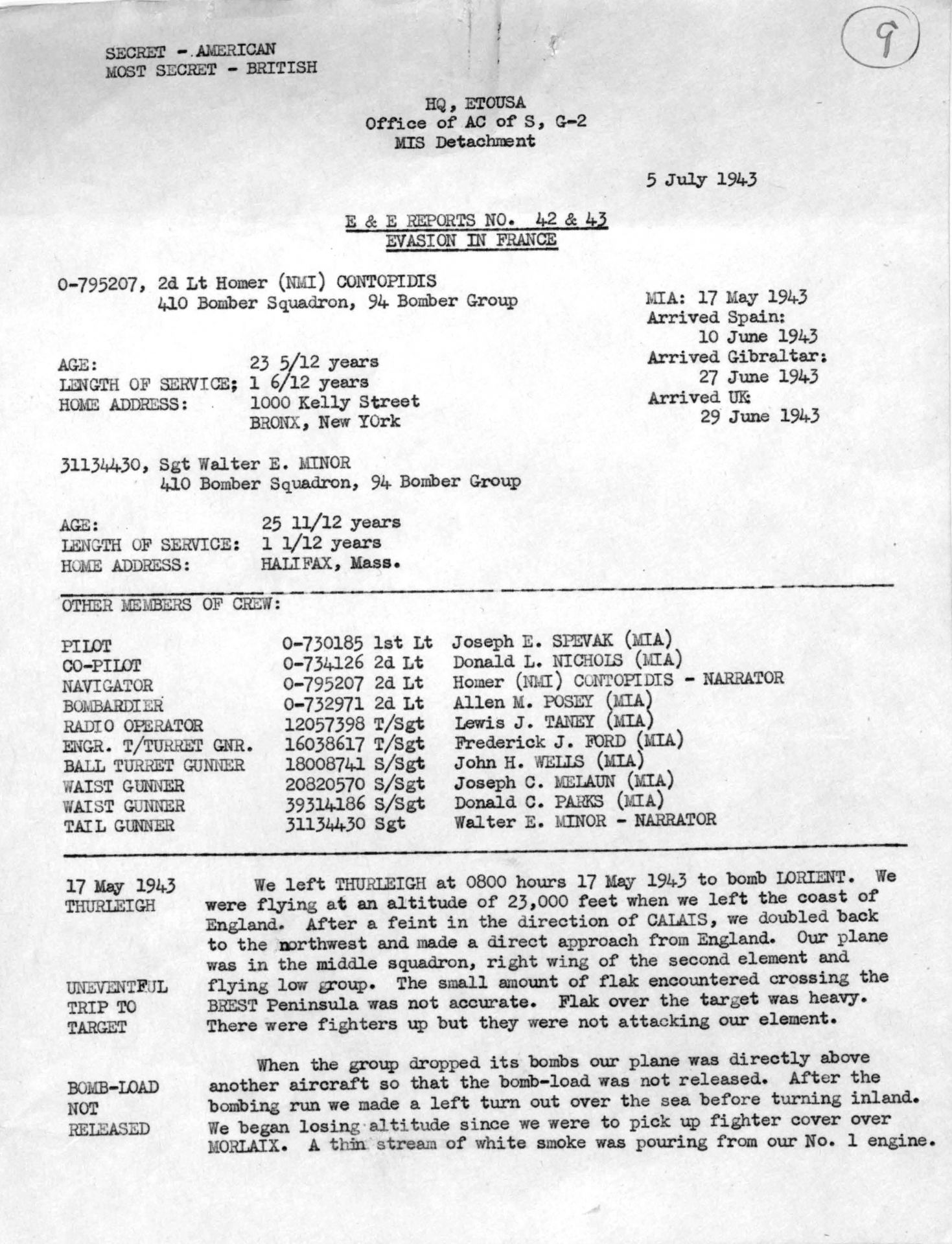
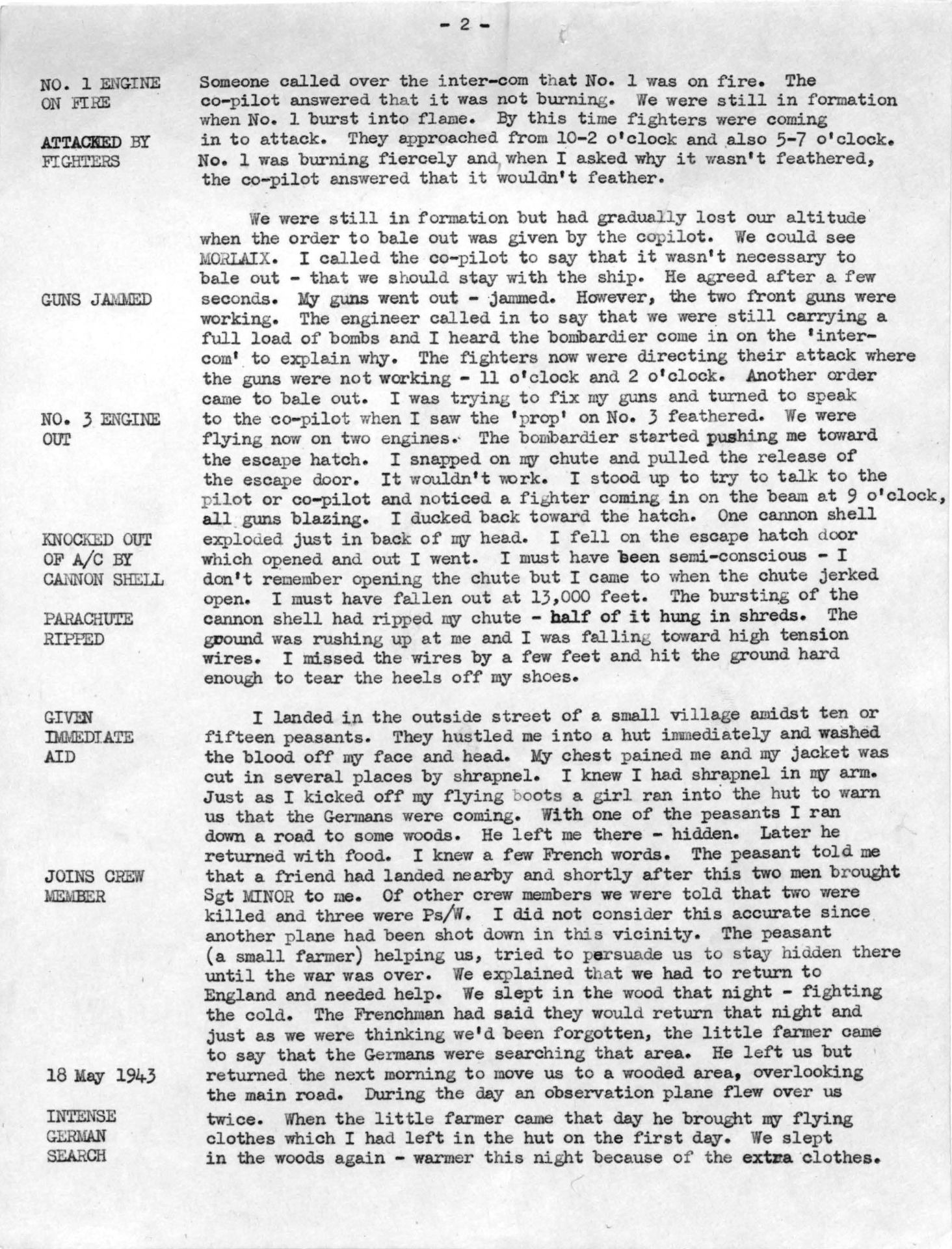
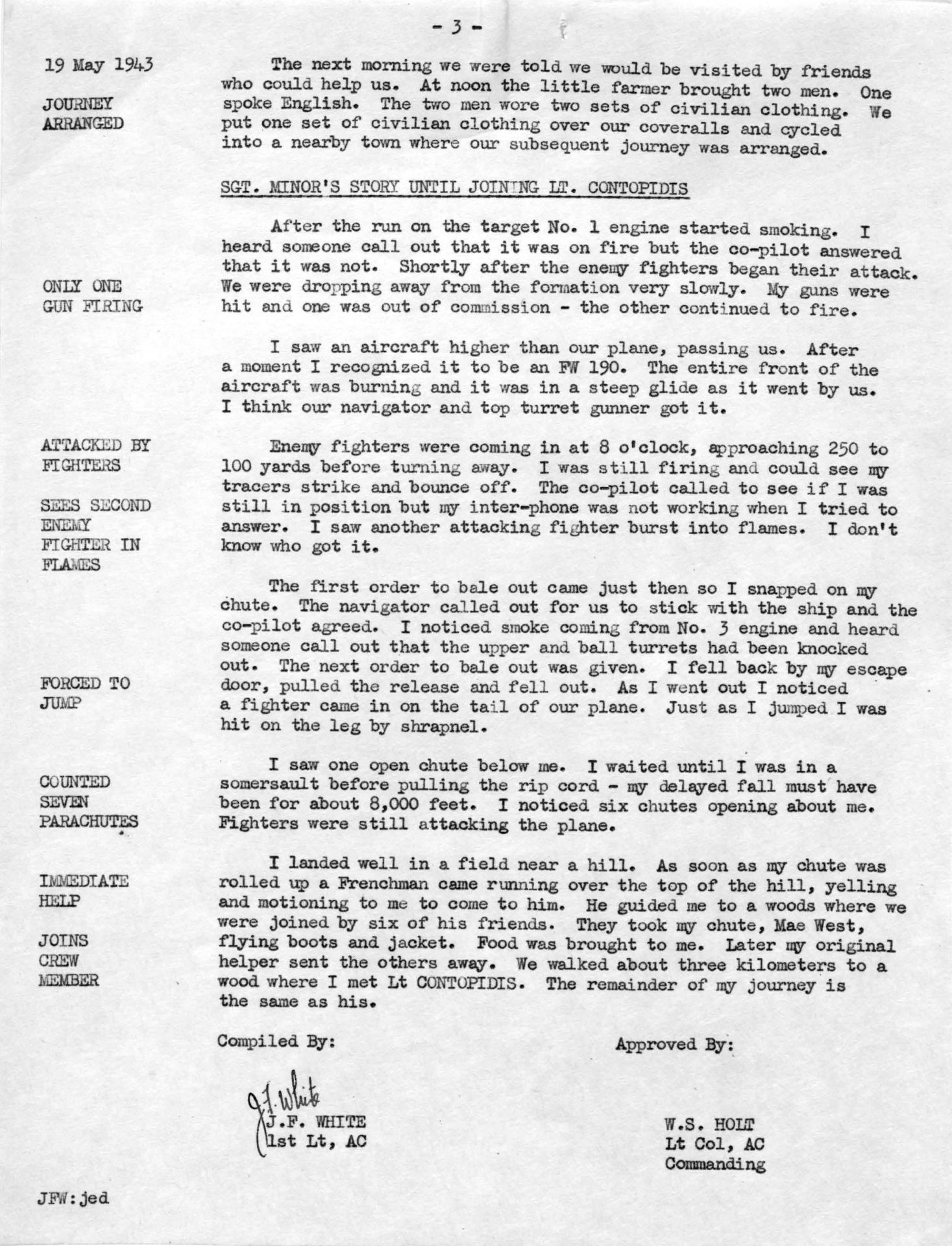
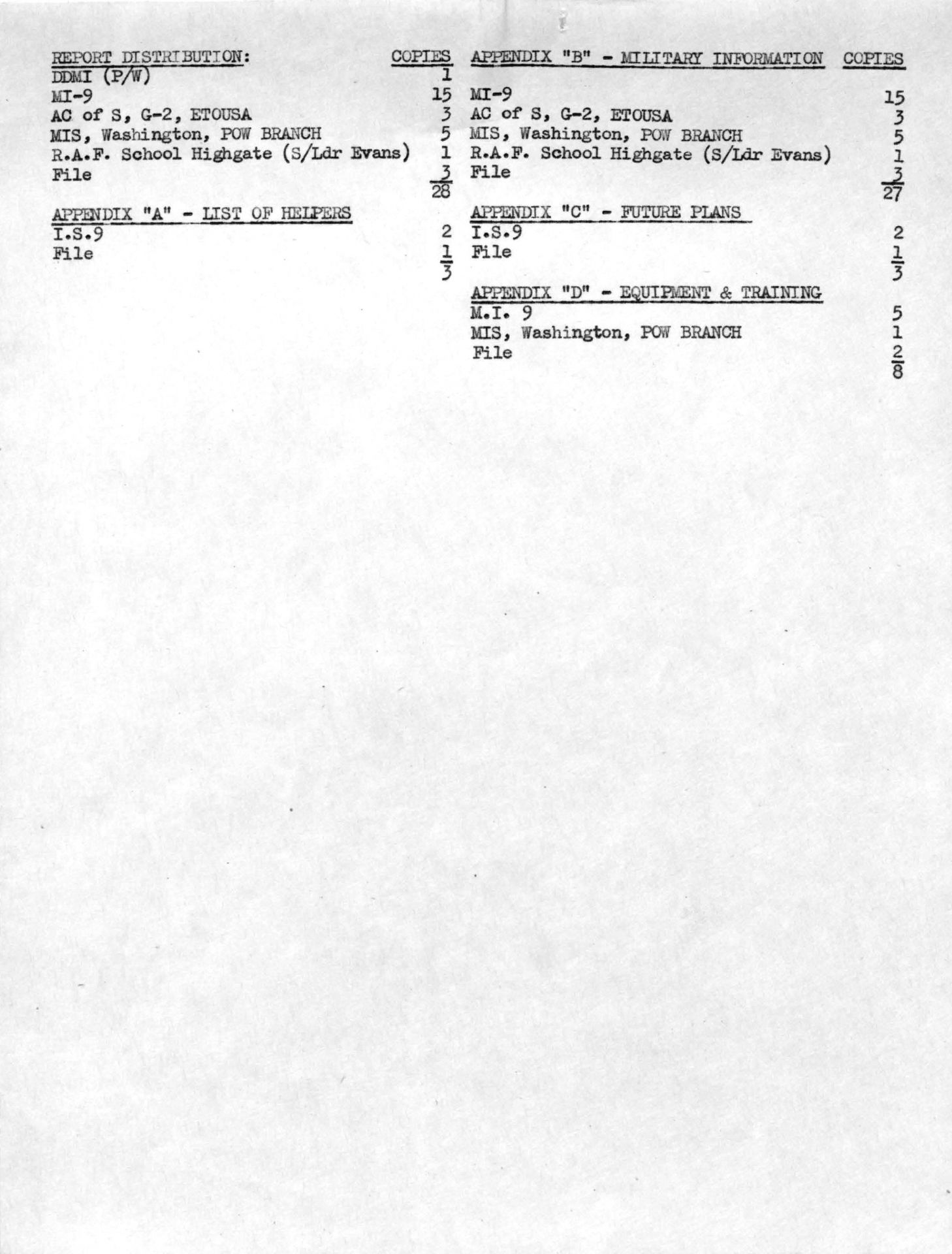
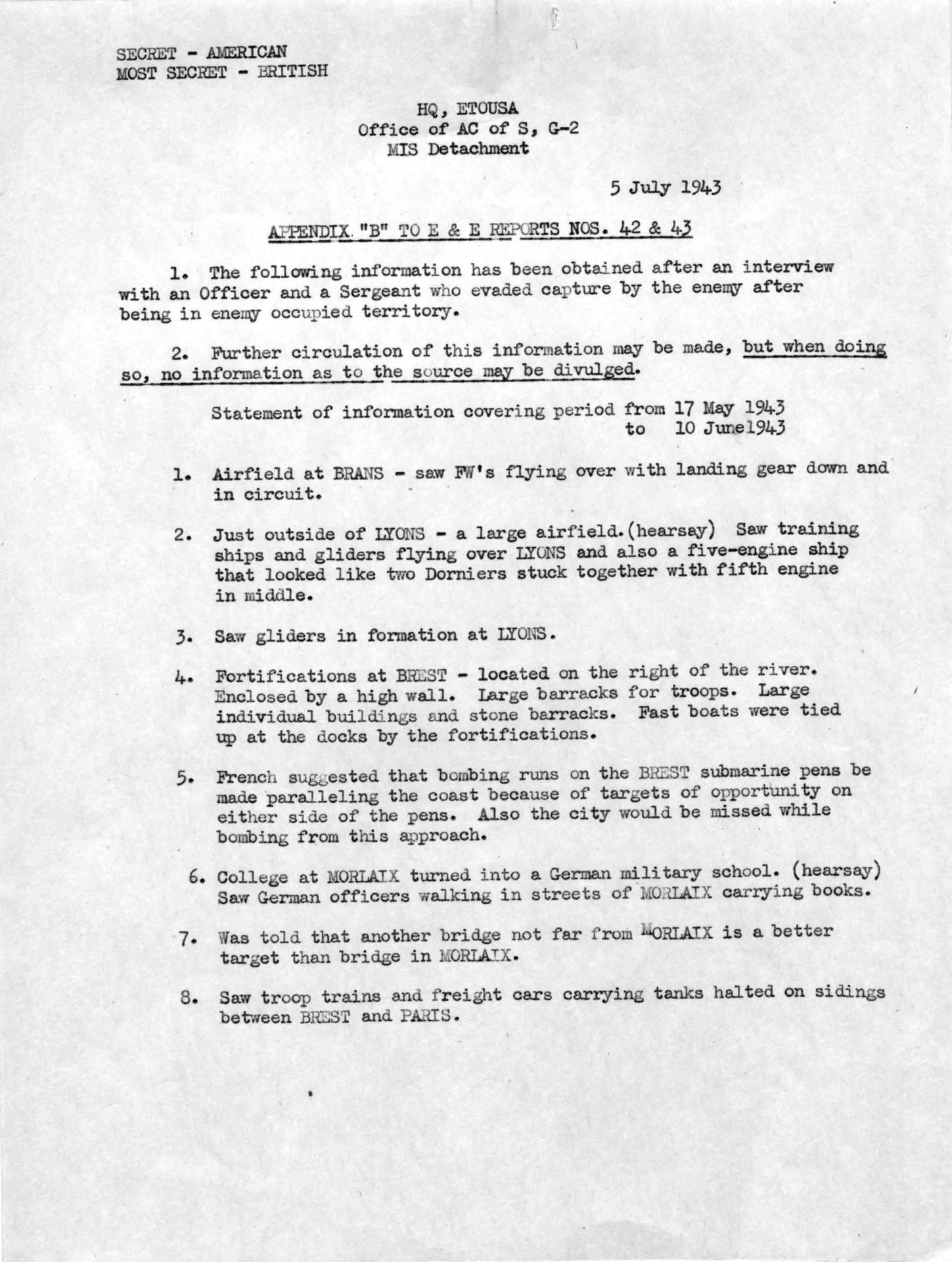
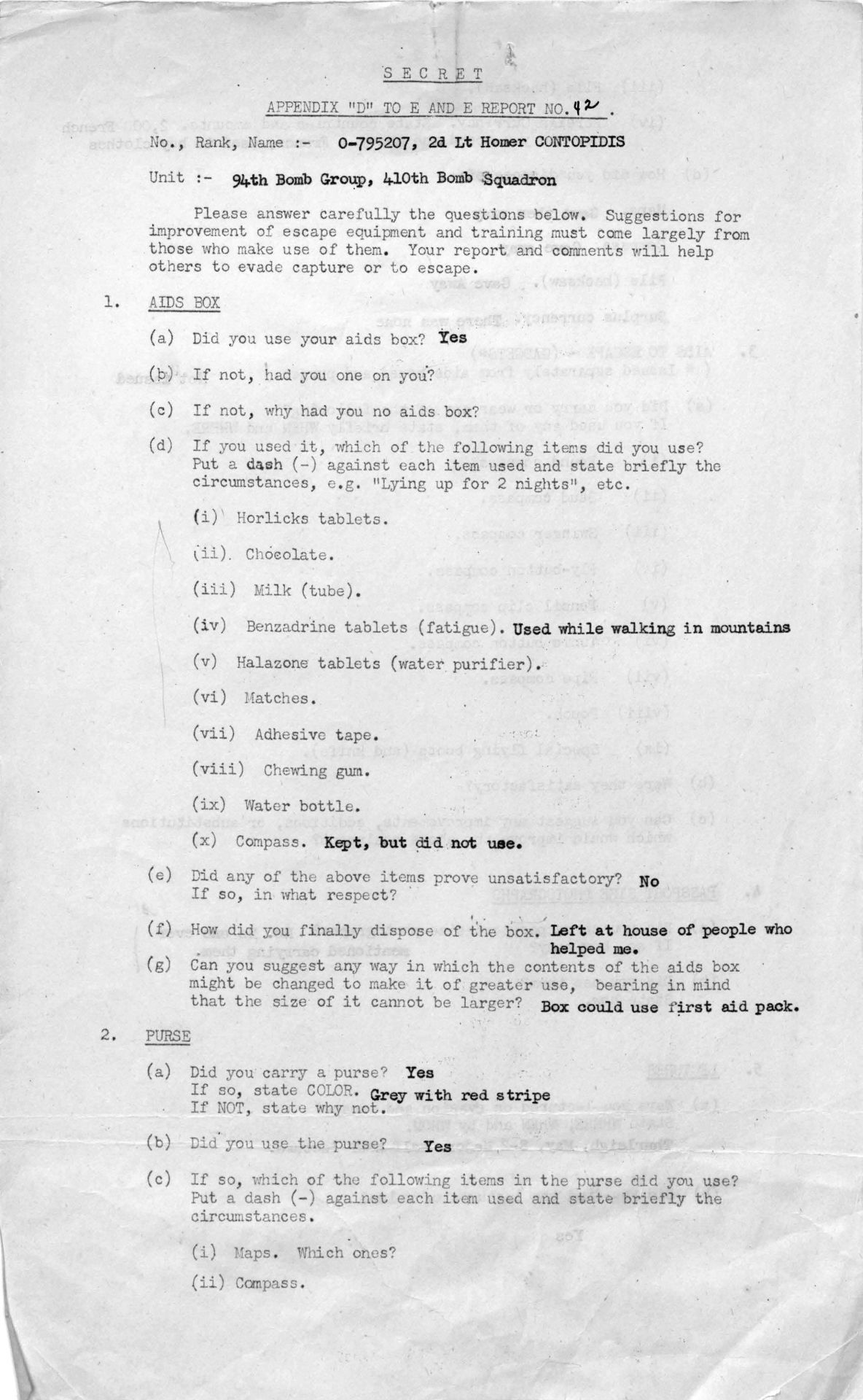

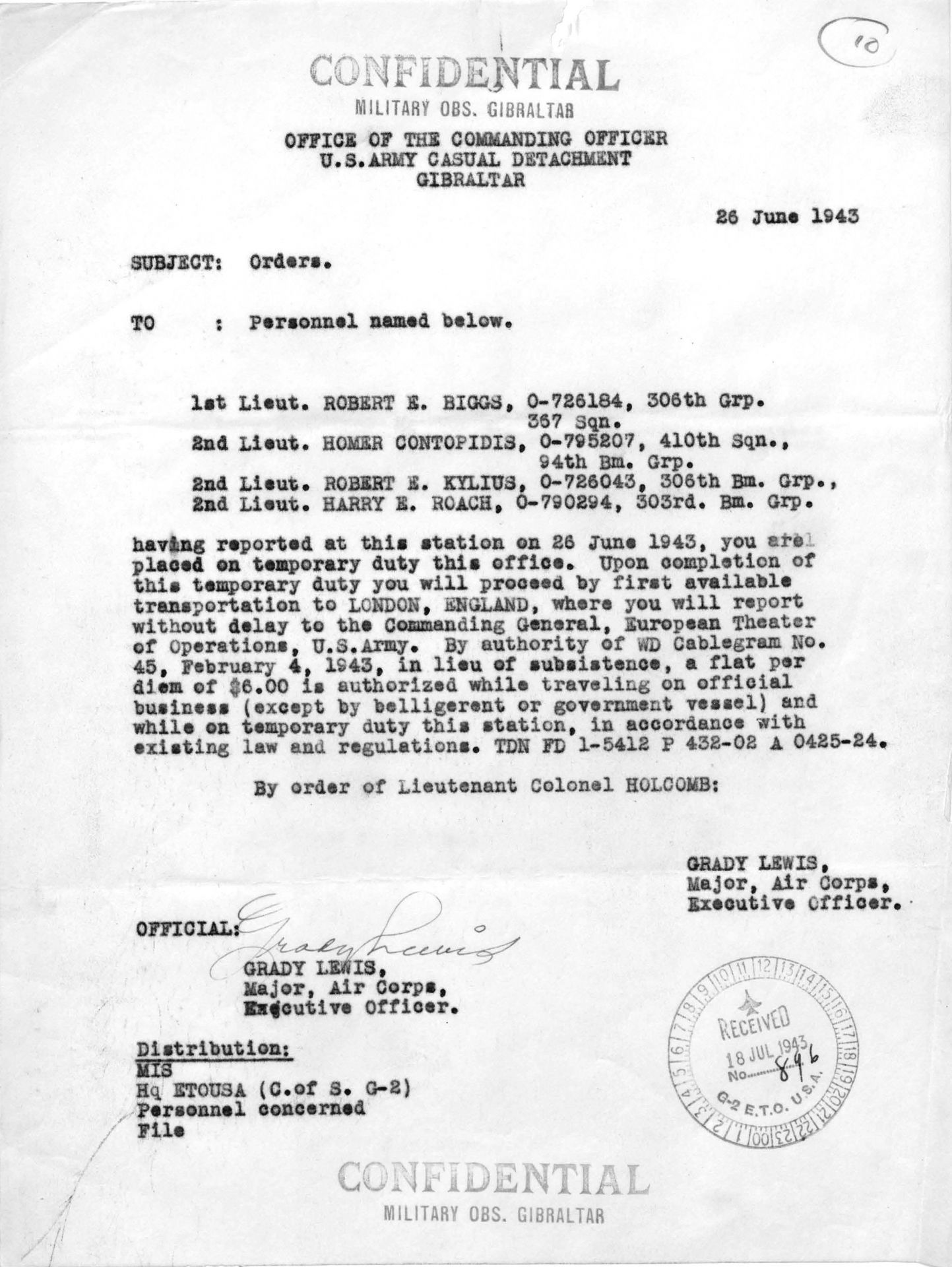
♦ Walter E. MINOR's evasion report, dated June 26, 1943
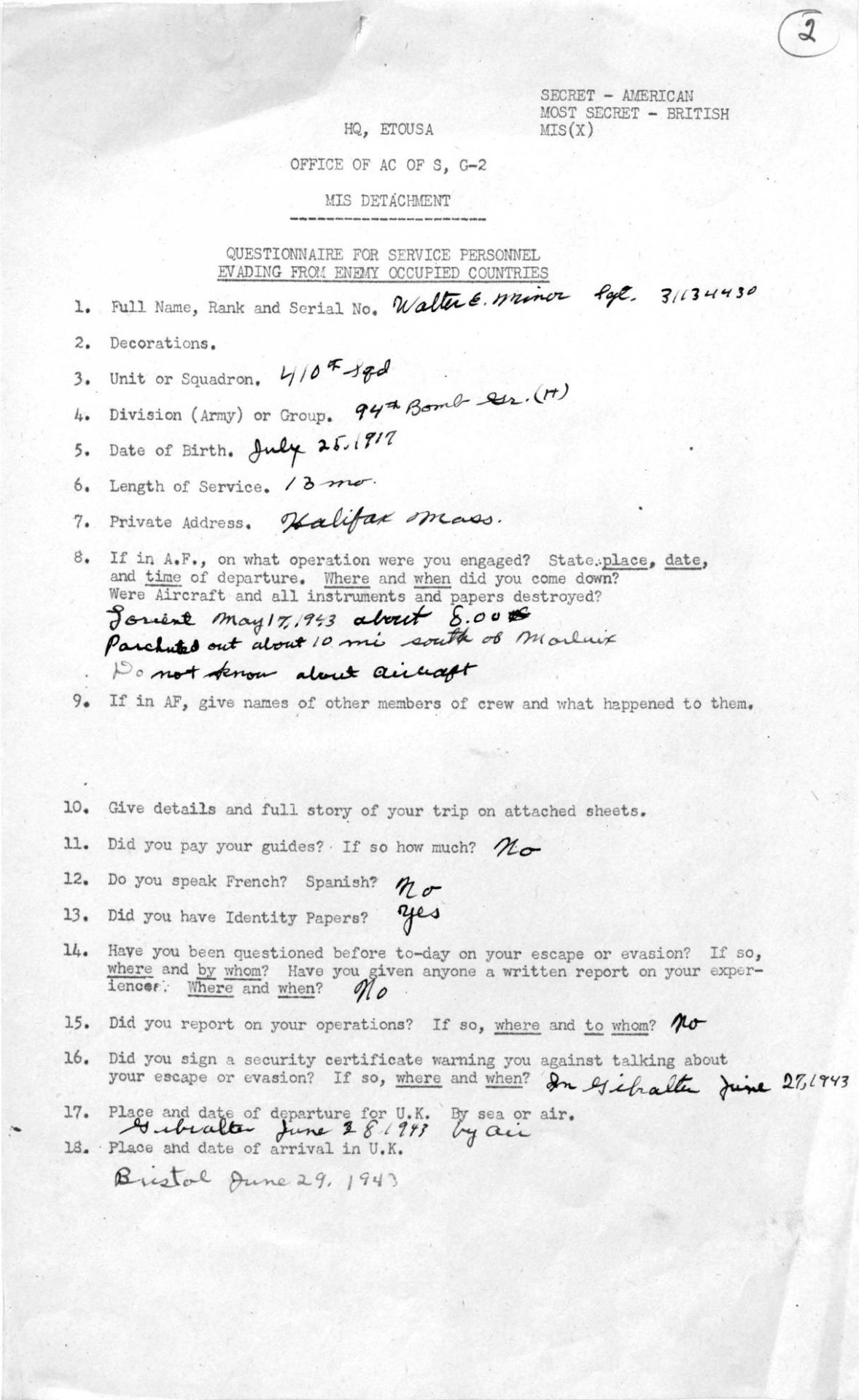
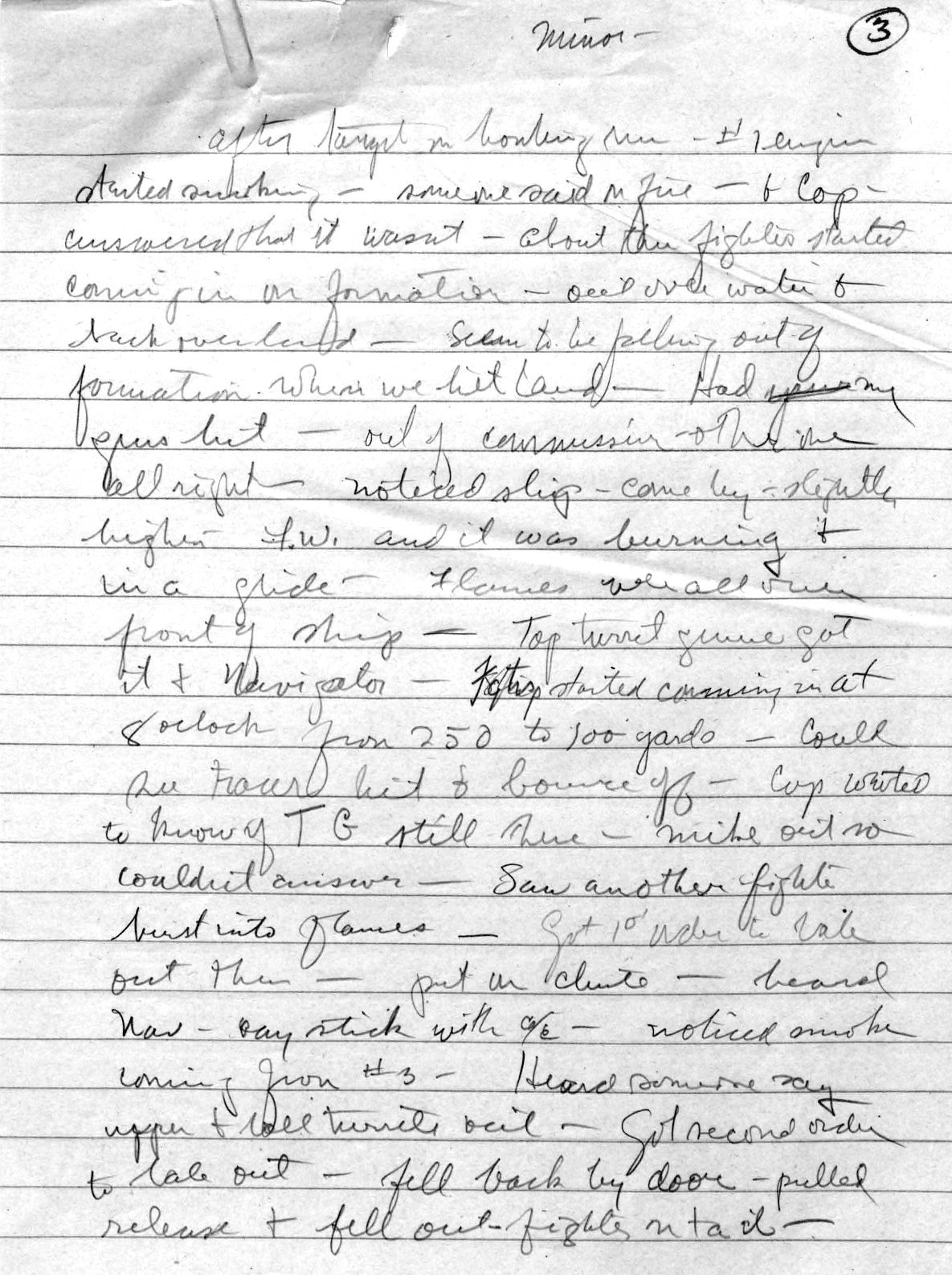
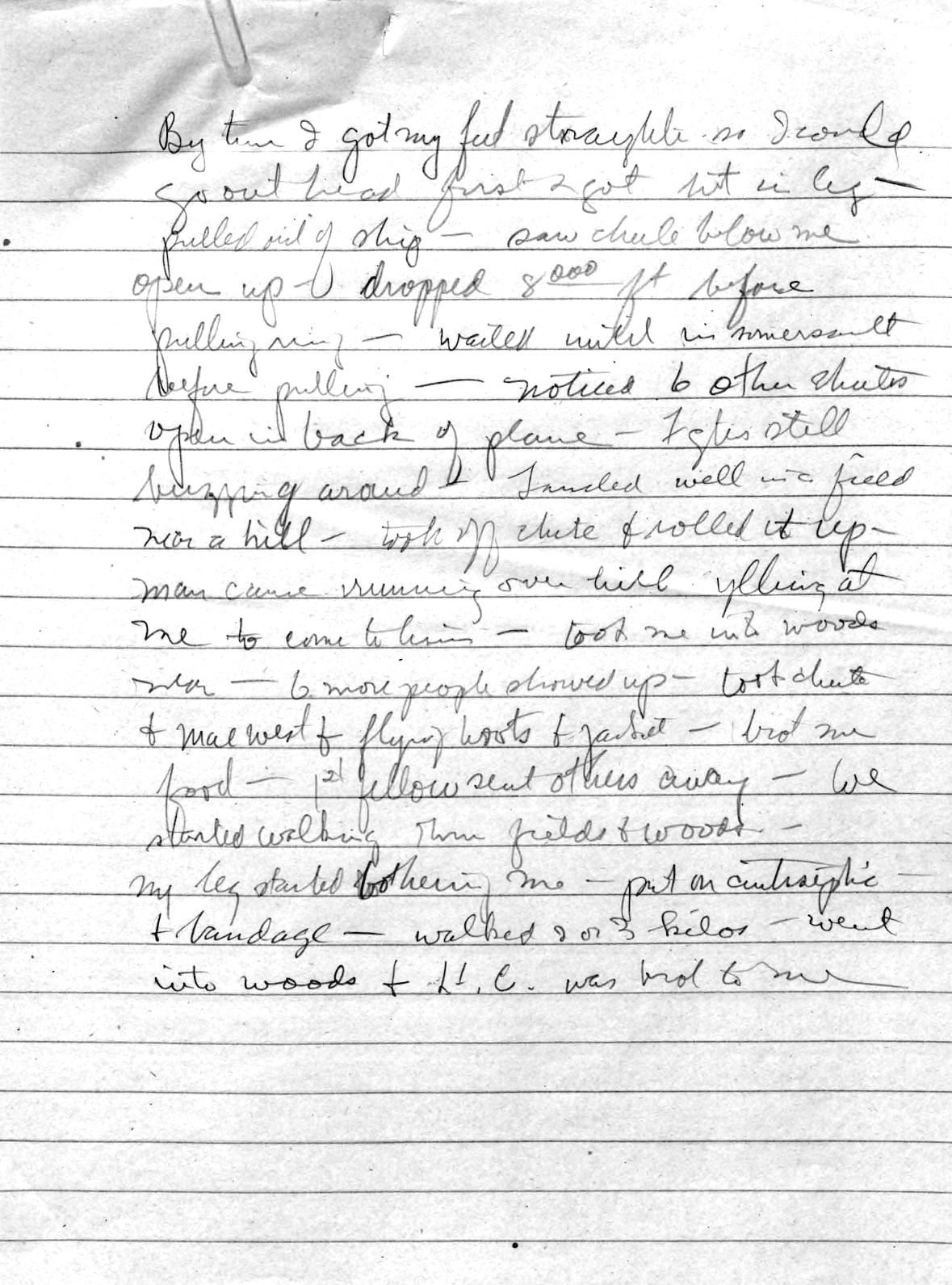

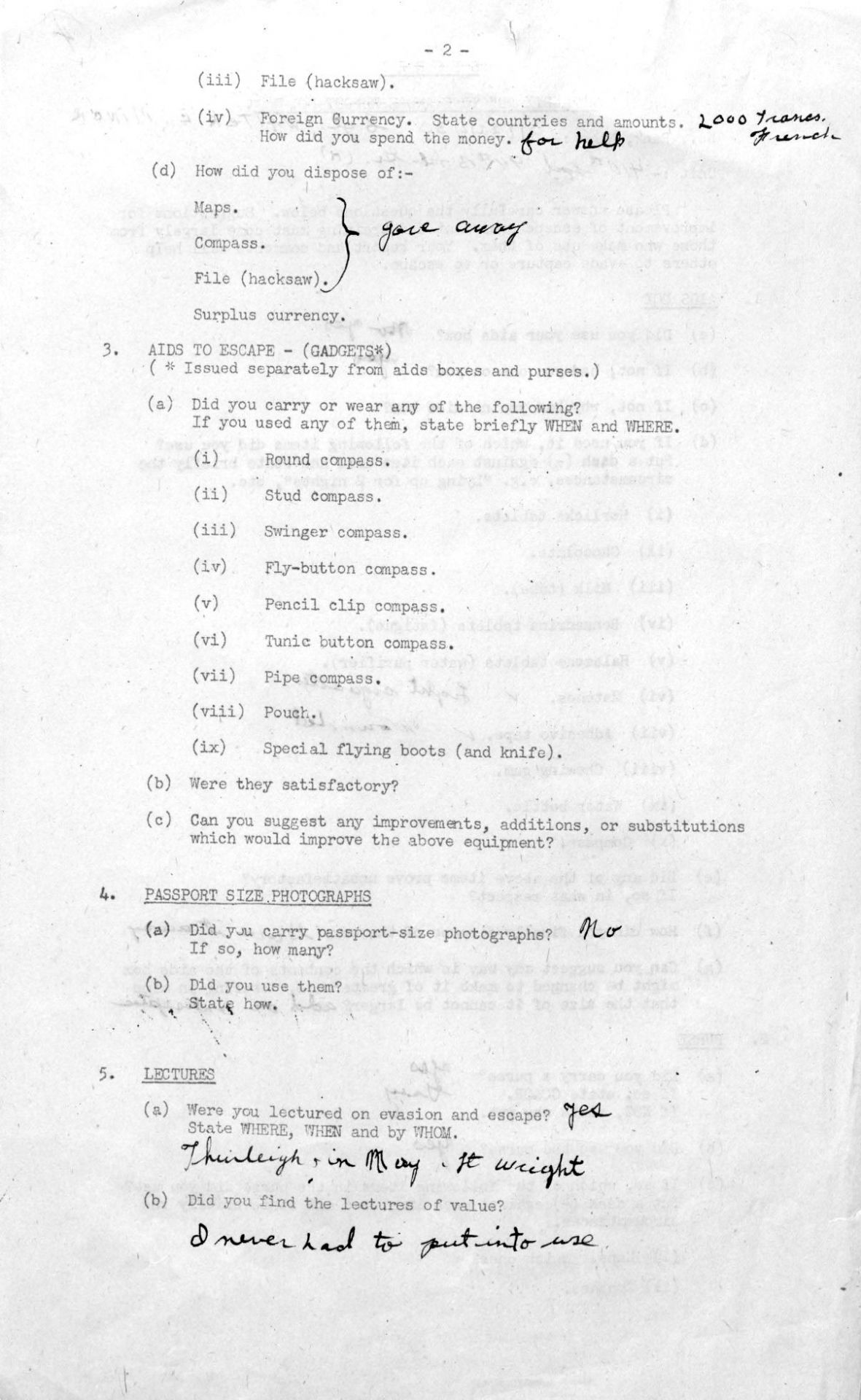
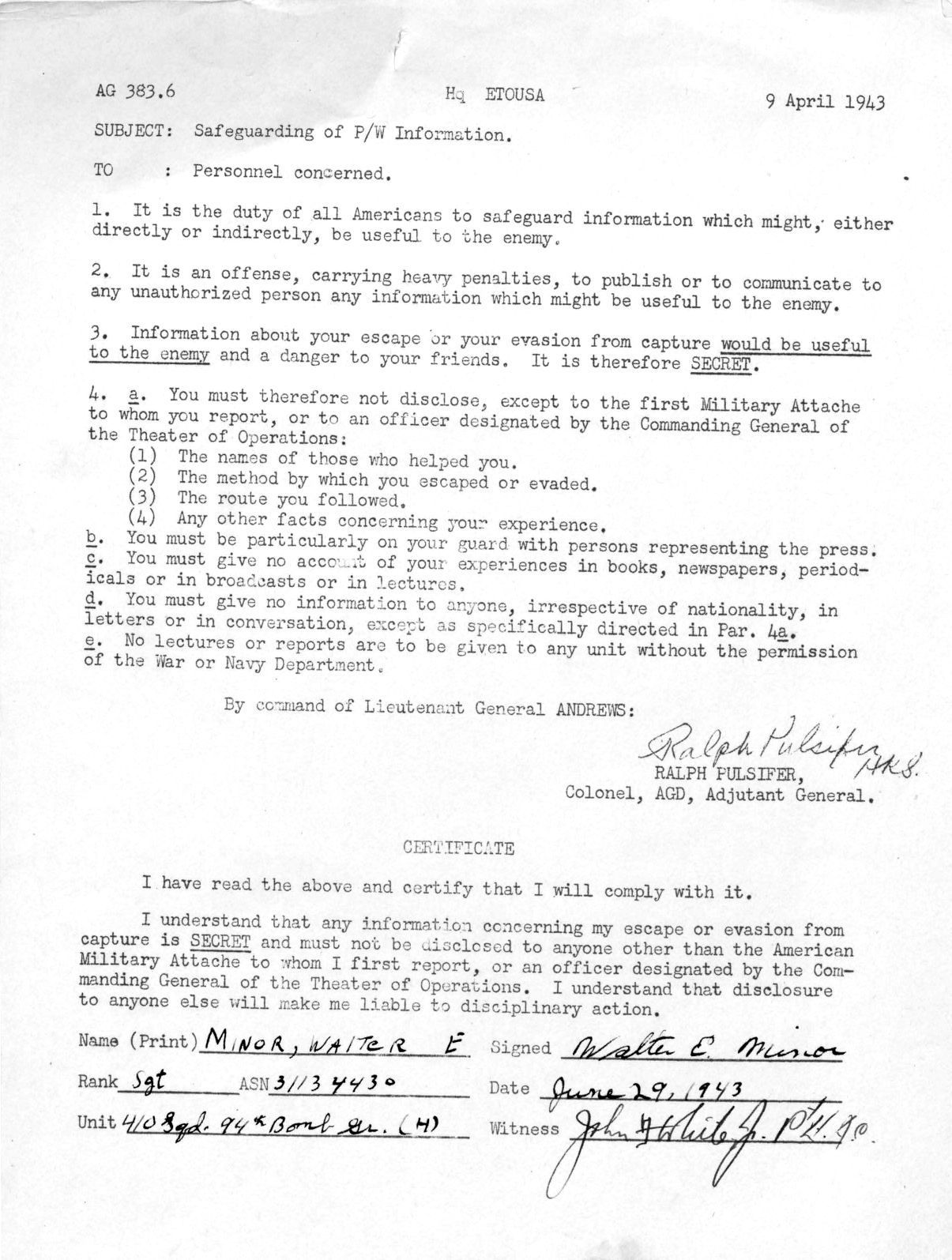
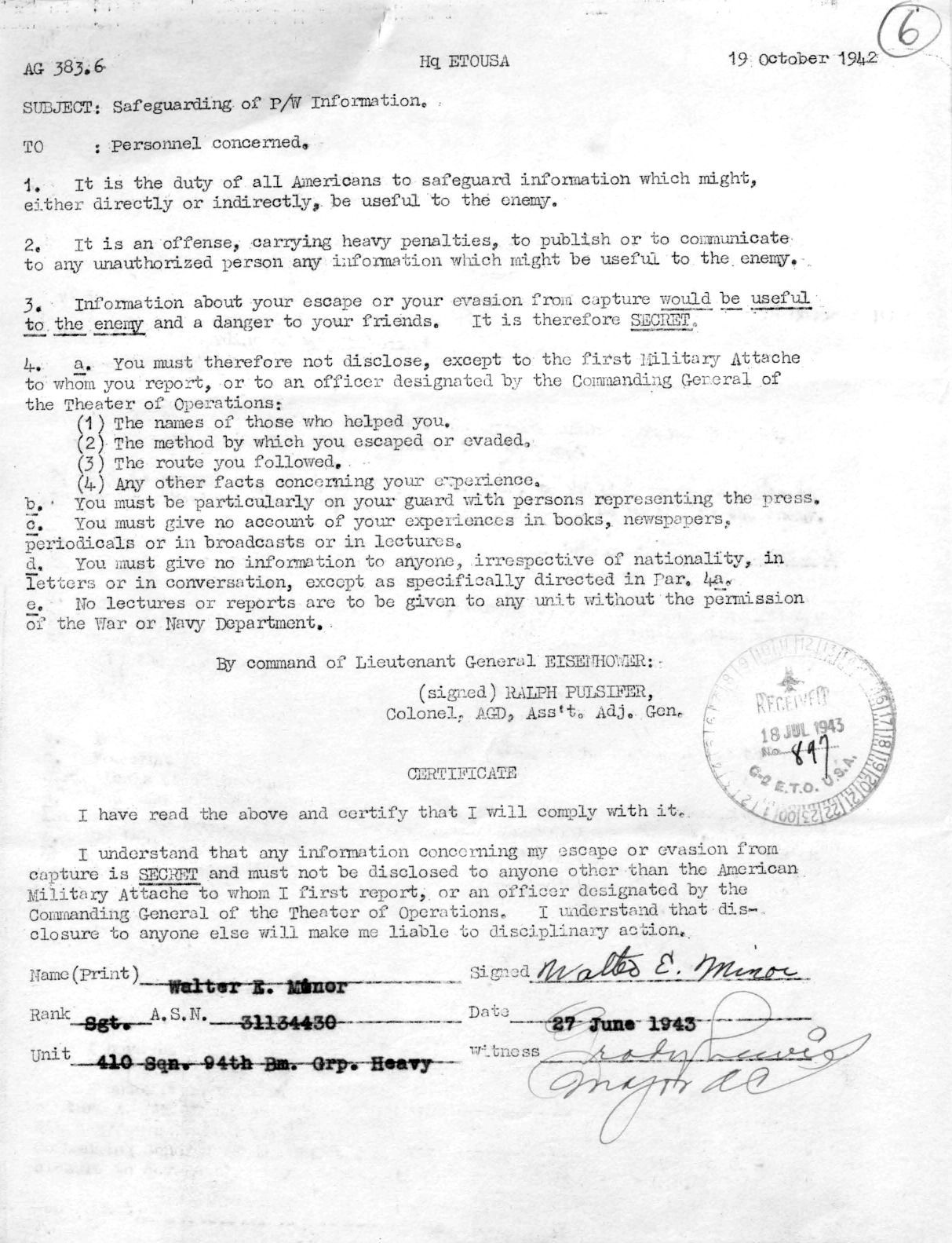
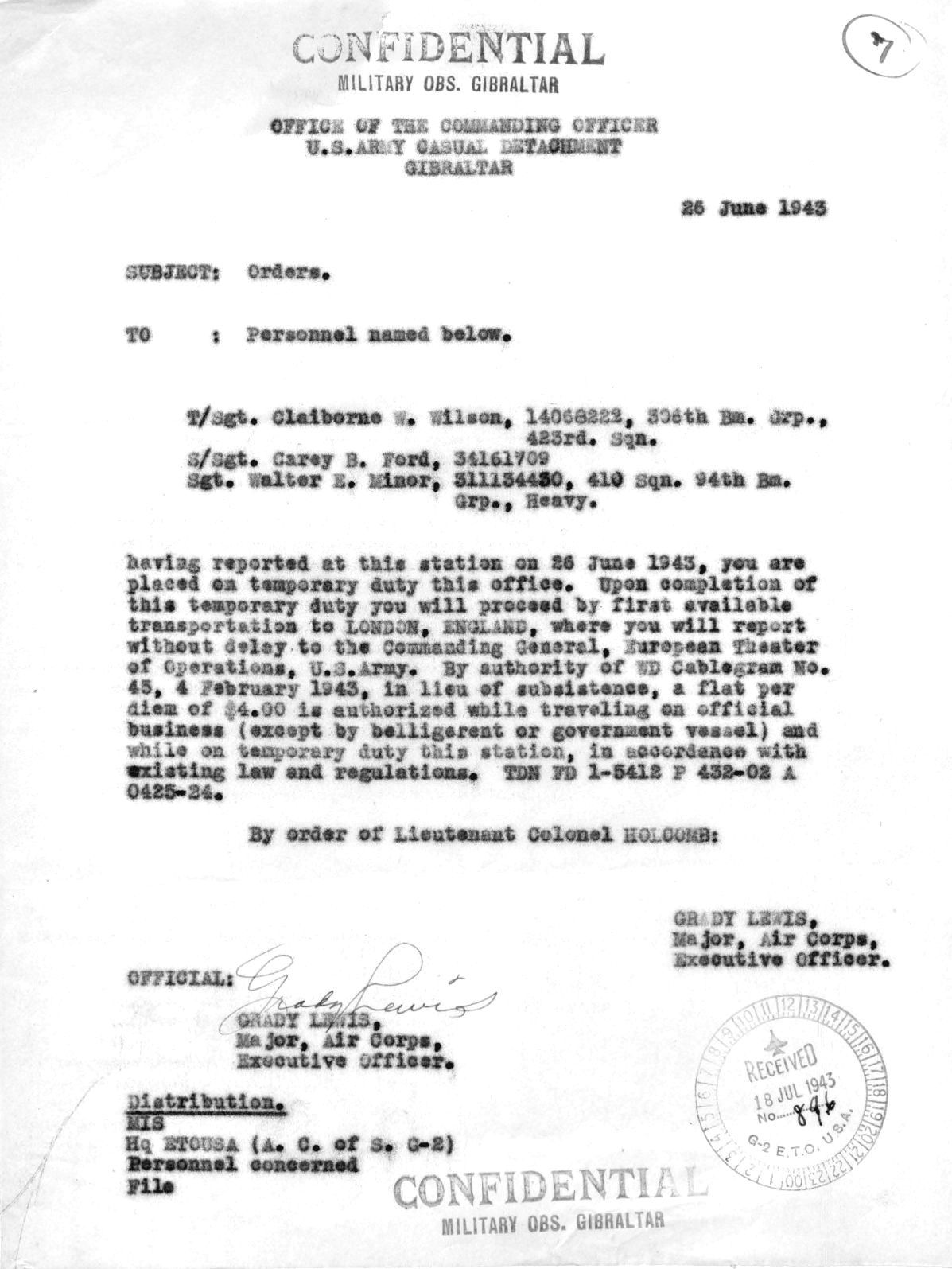
♦ Donald L. NICHOLS' evasion report, dated August 21, 1943
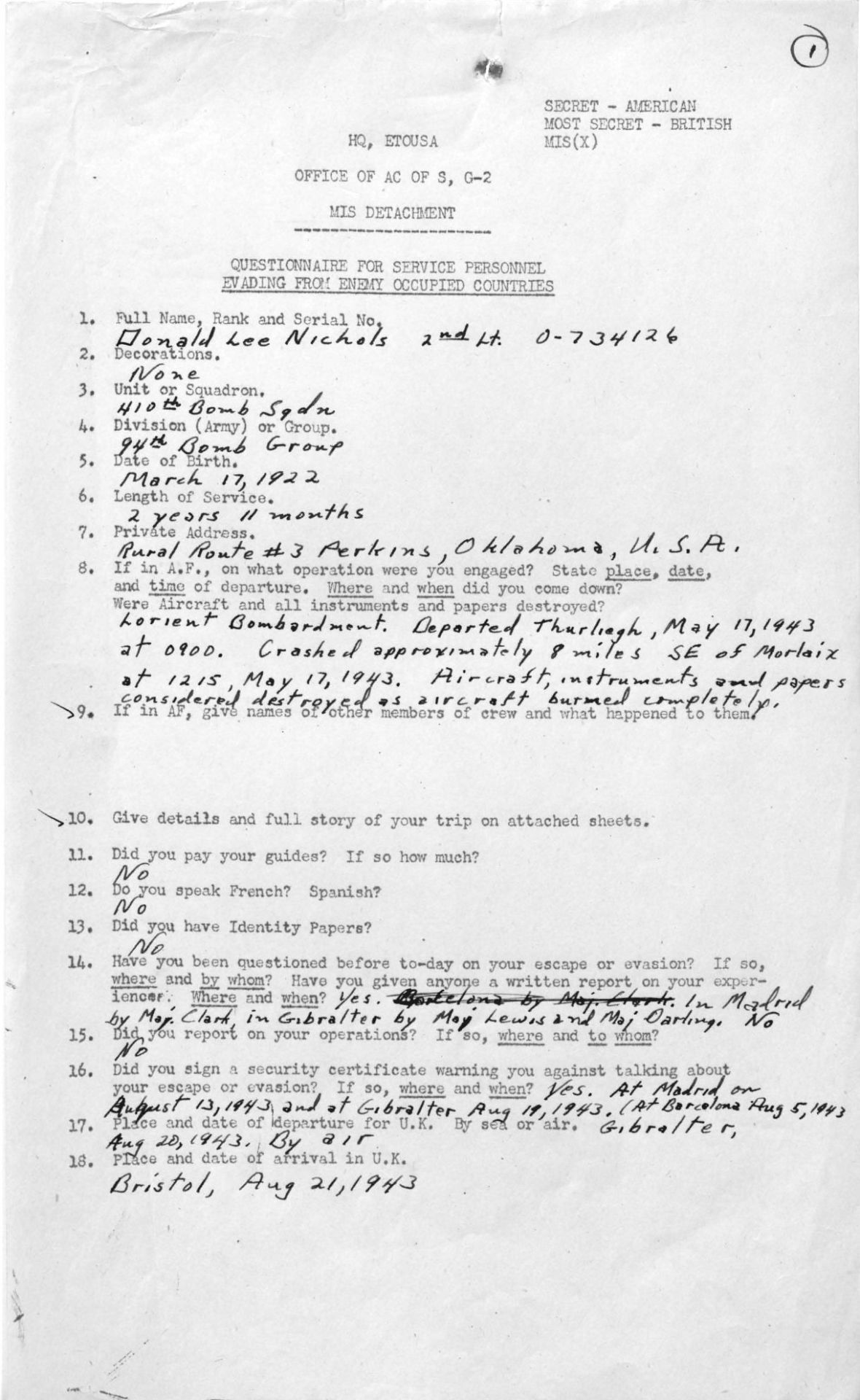
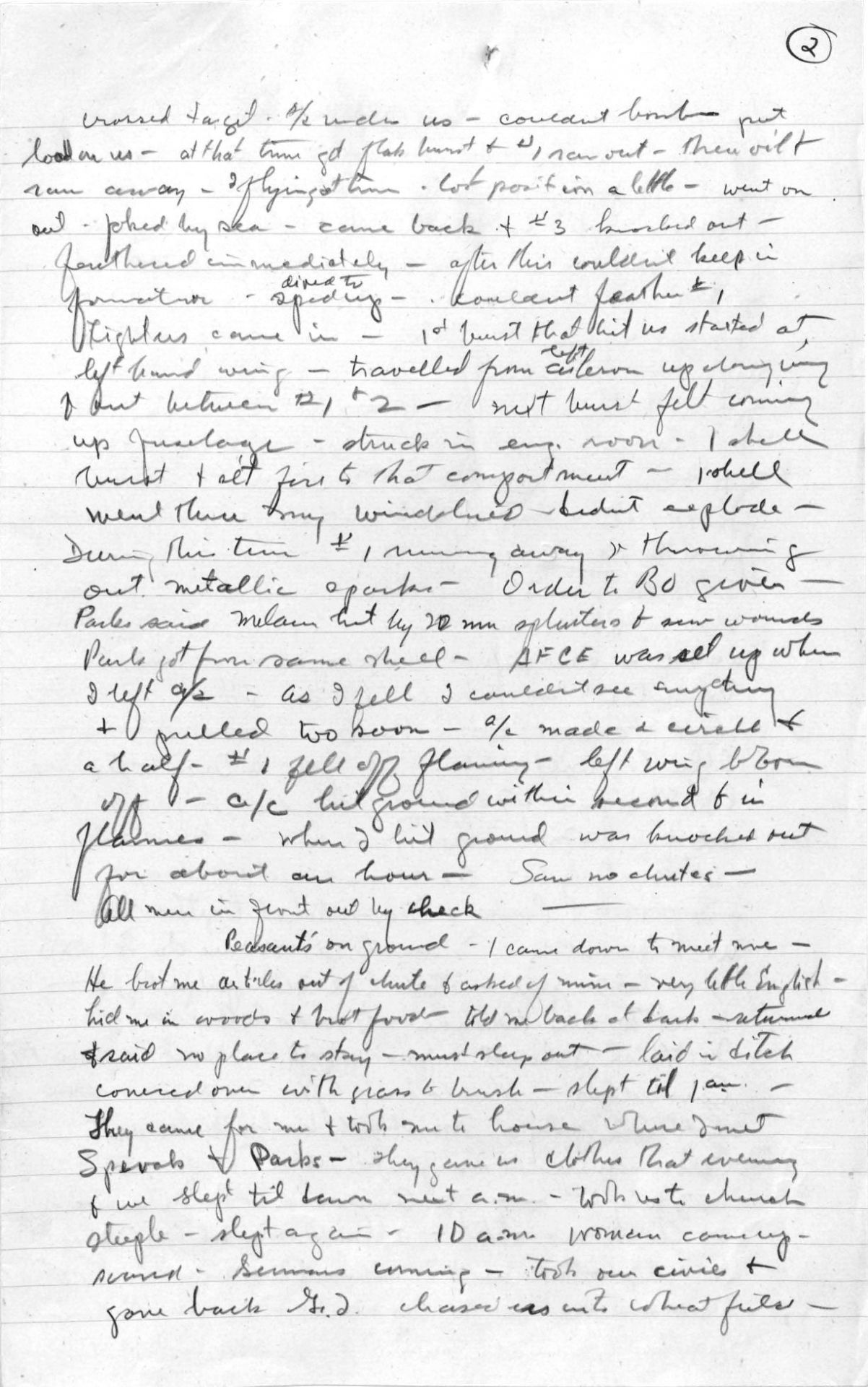
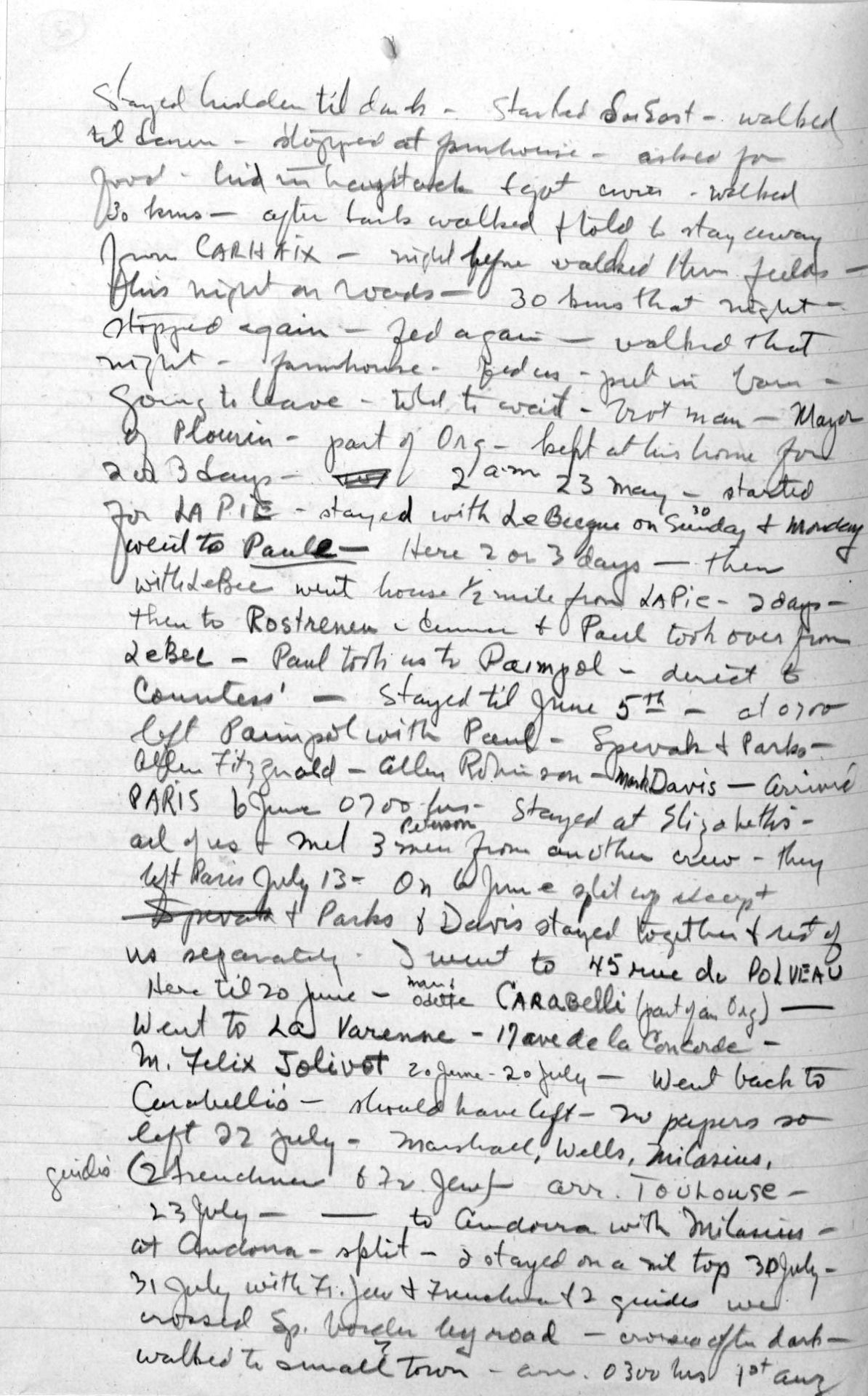
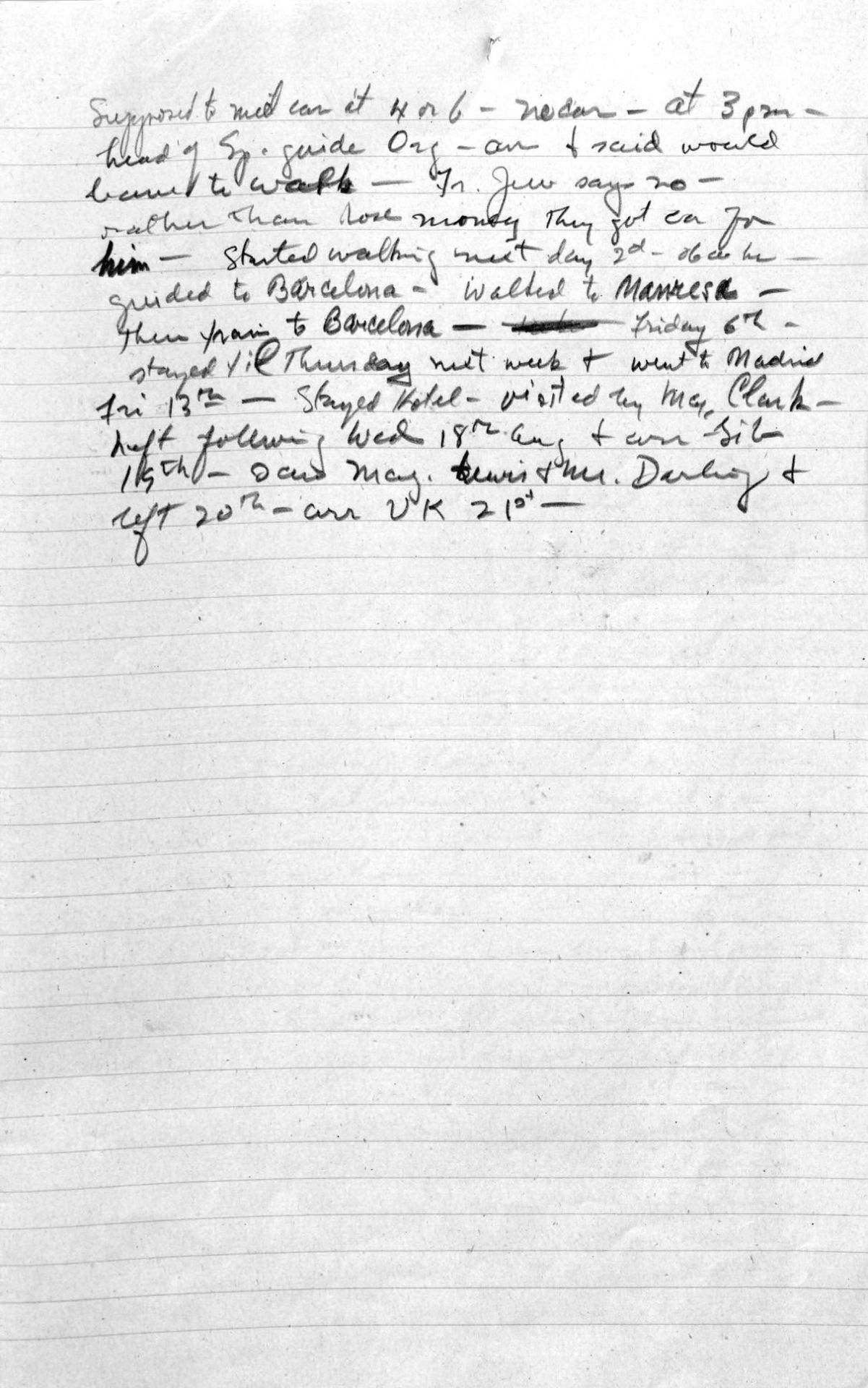
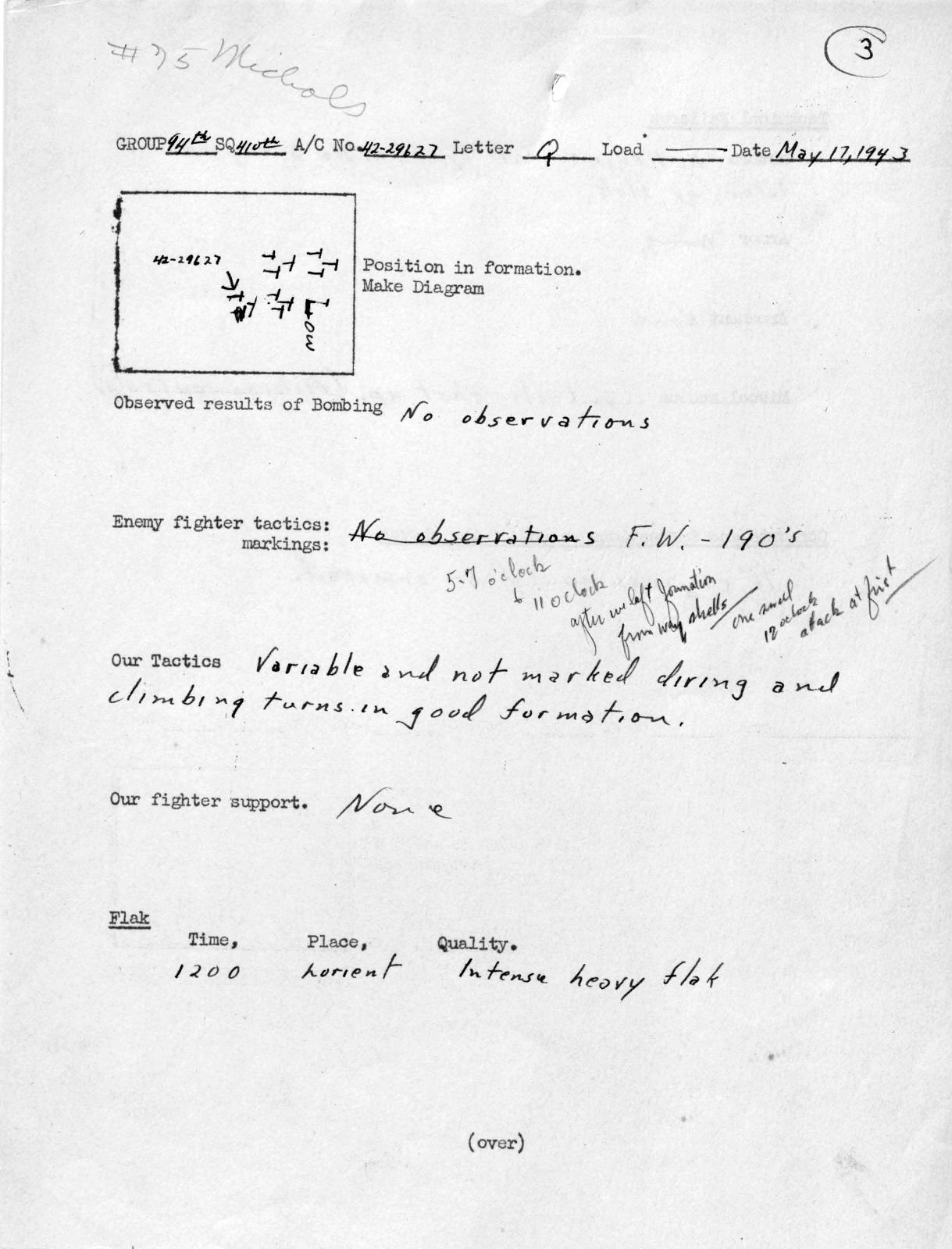
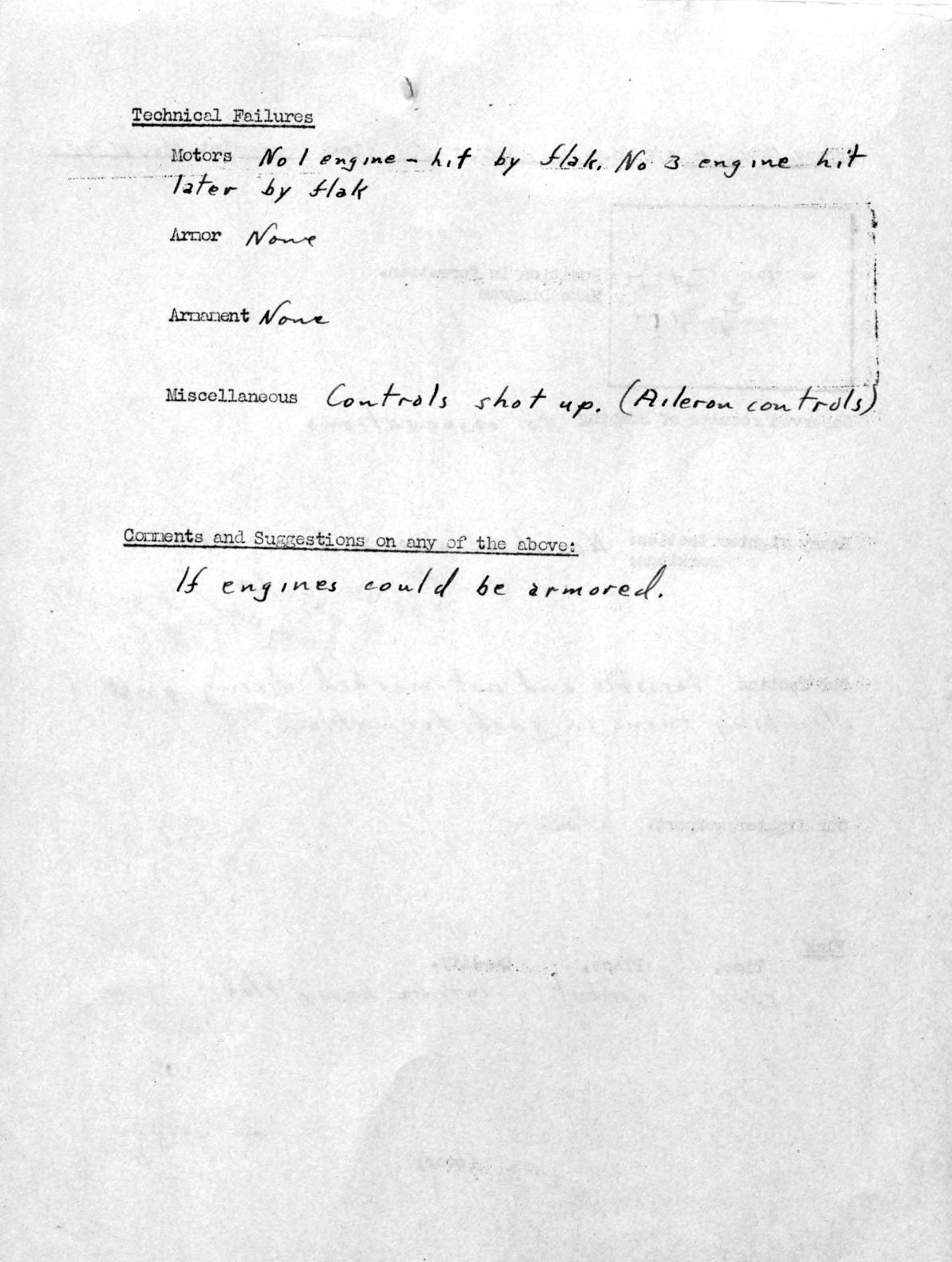
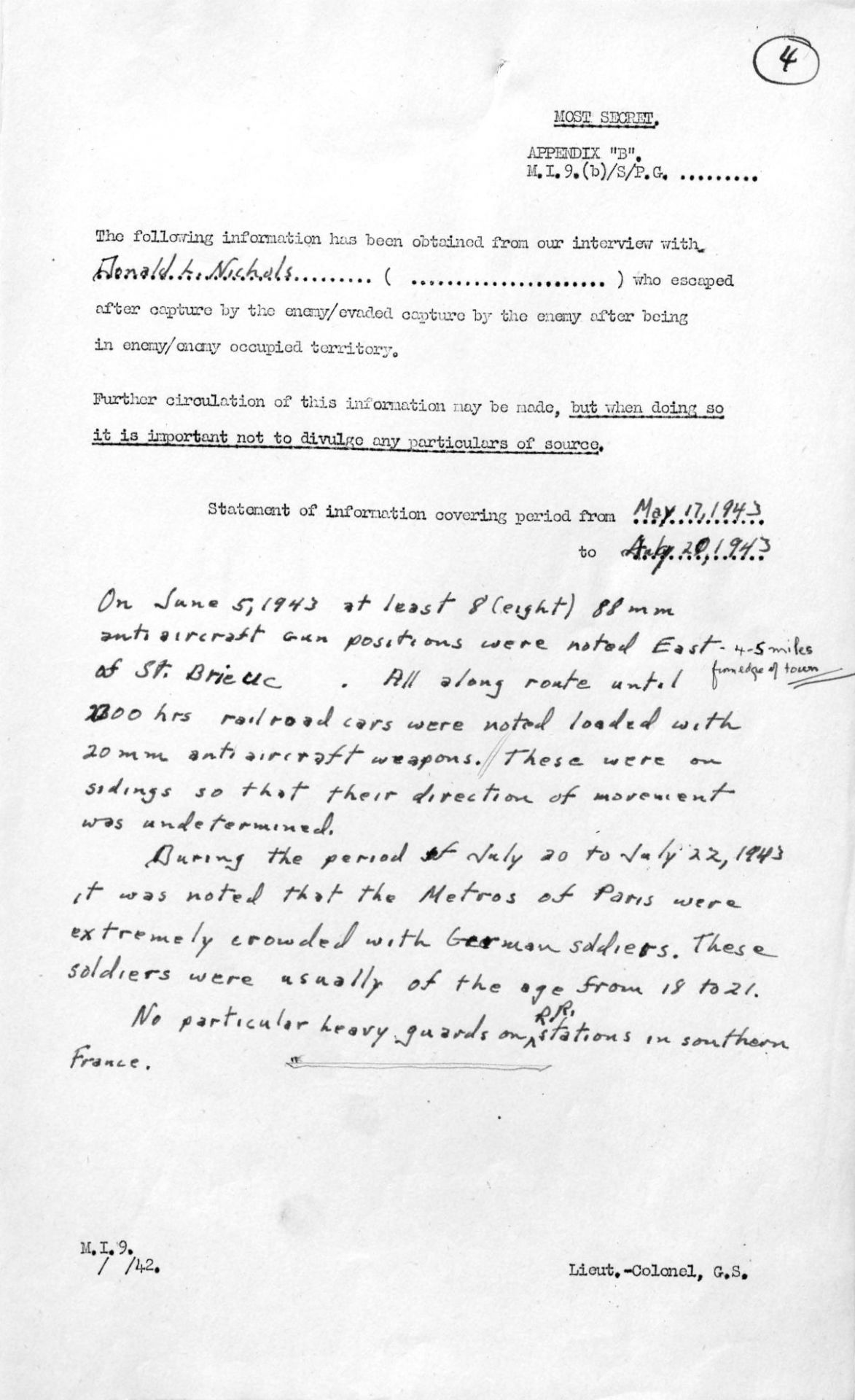
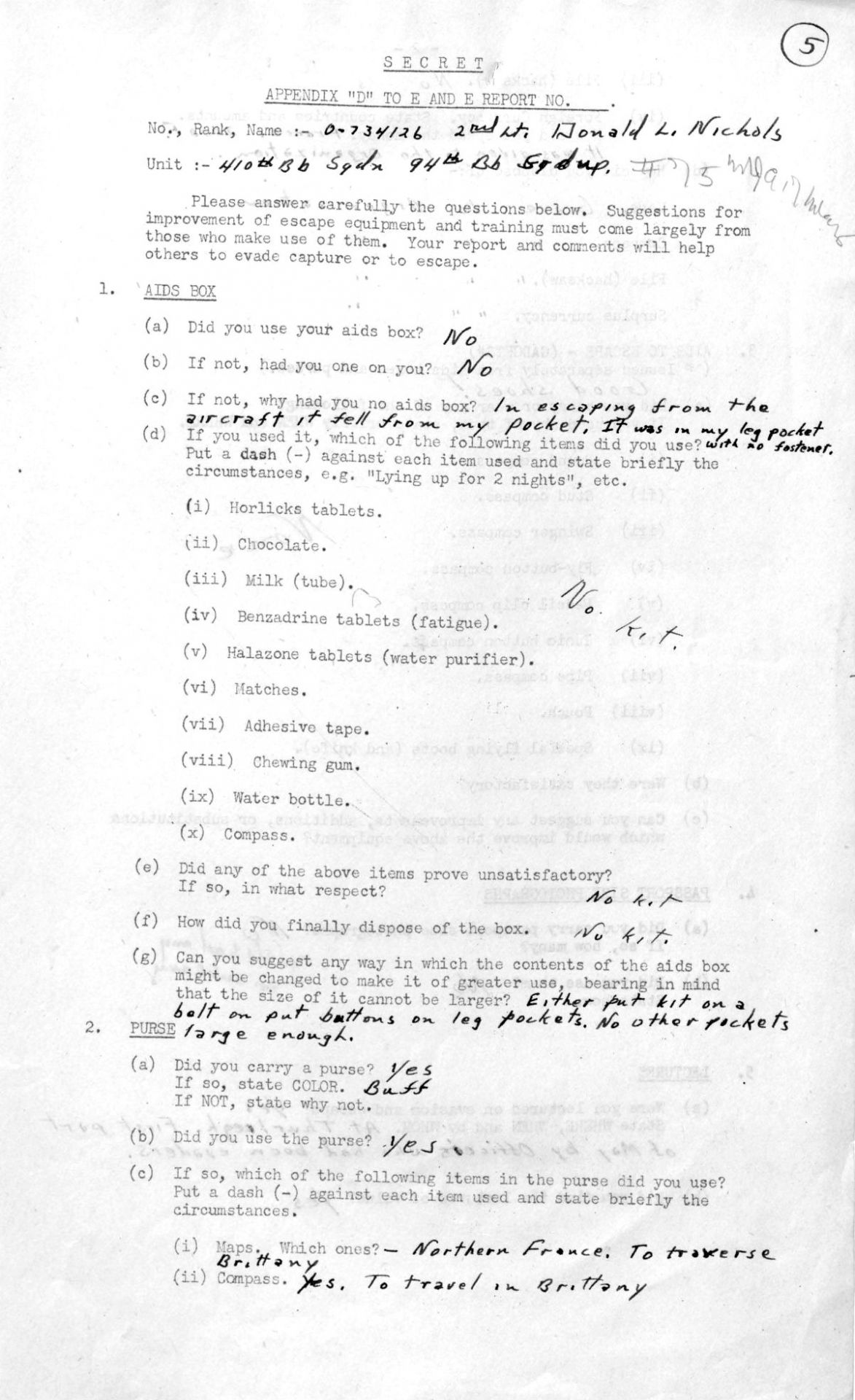
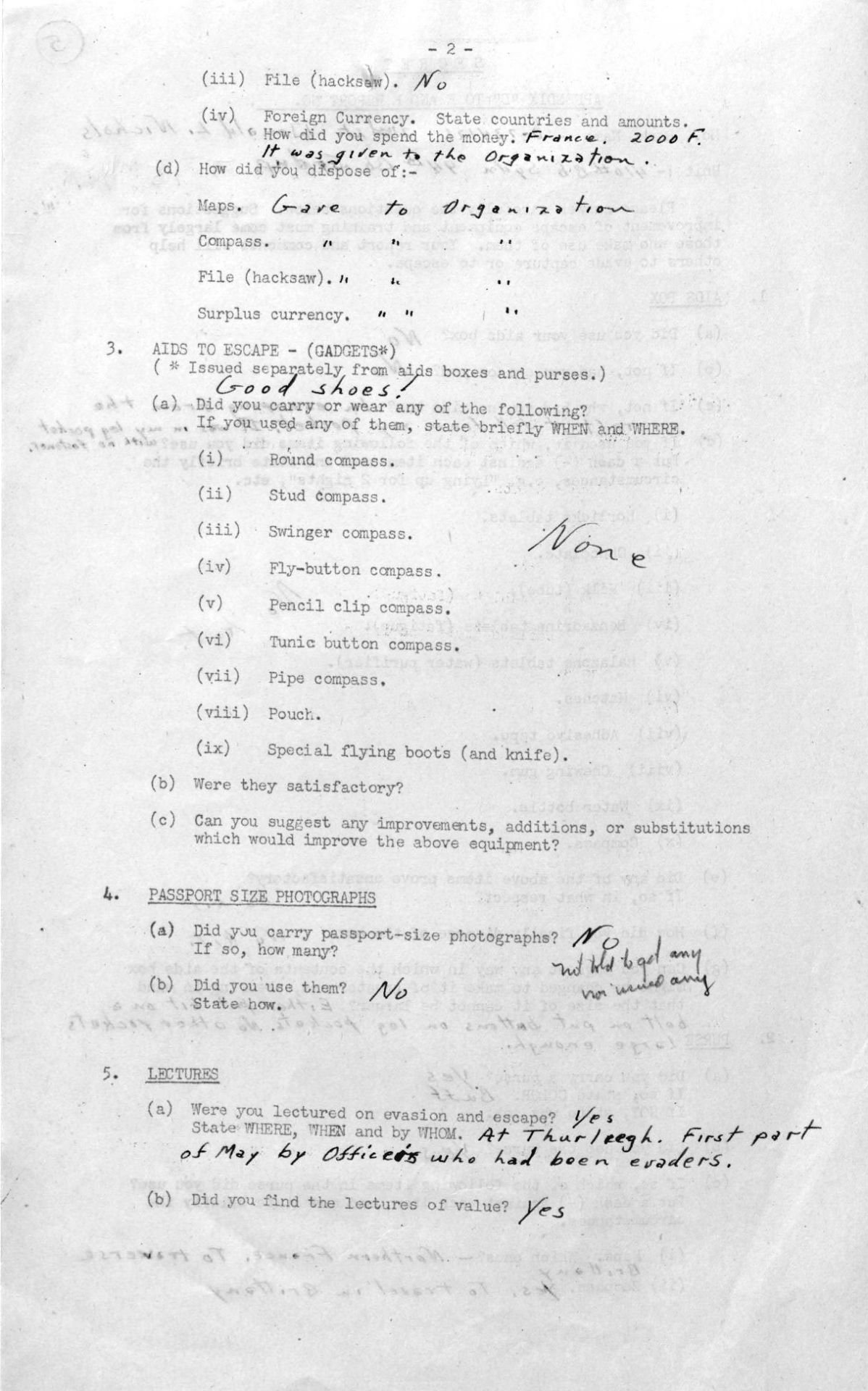
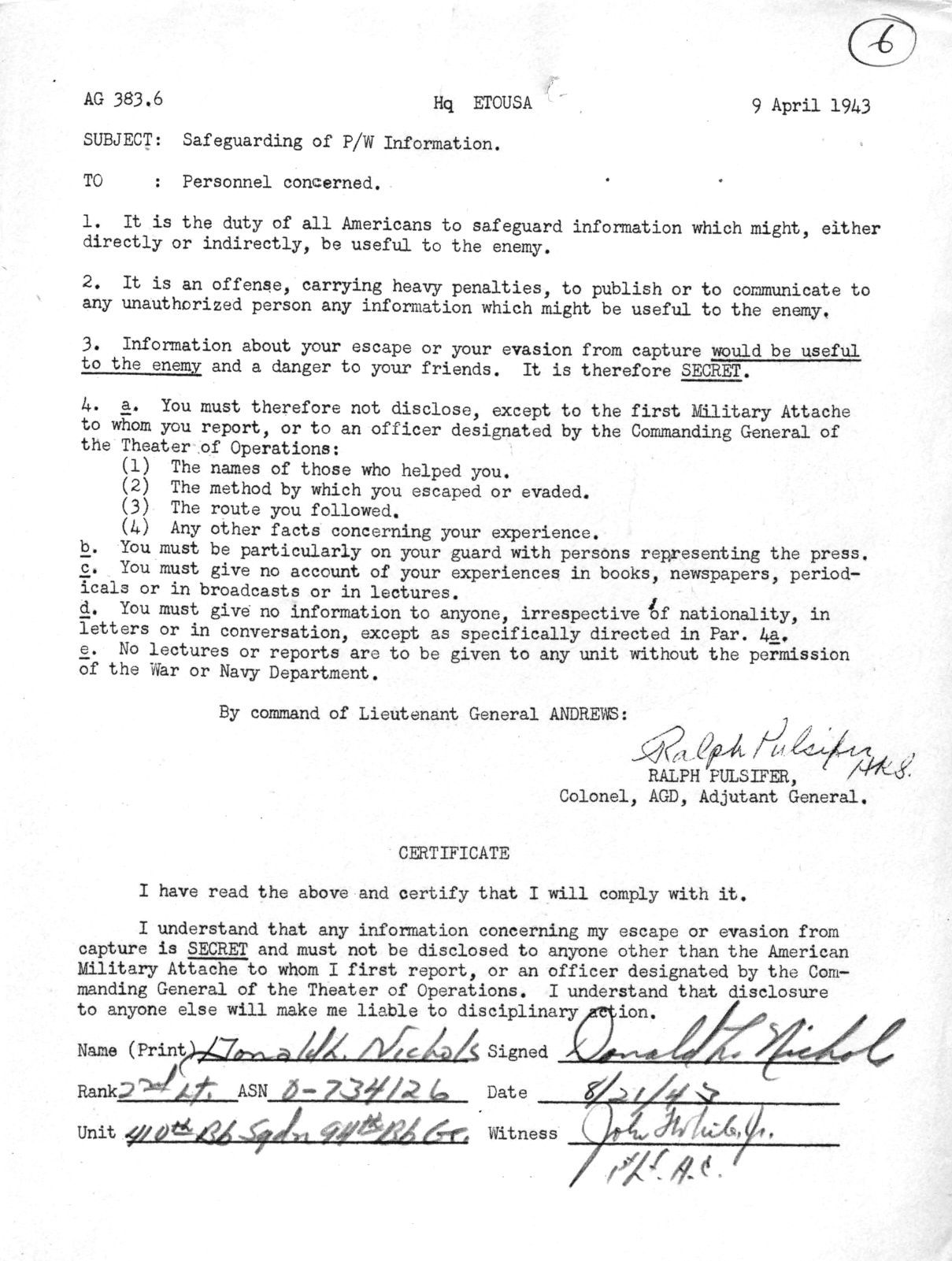
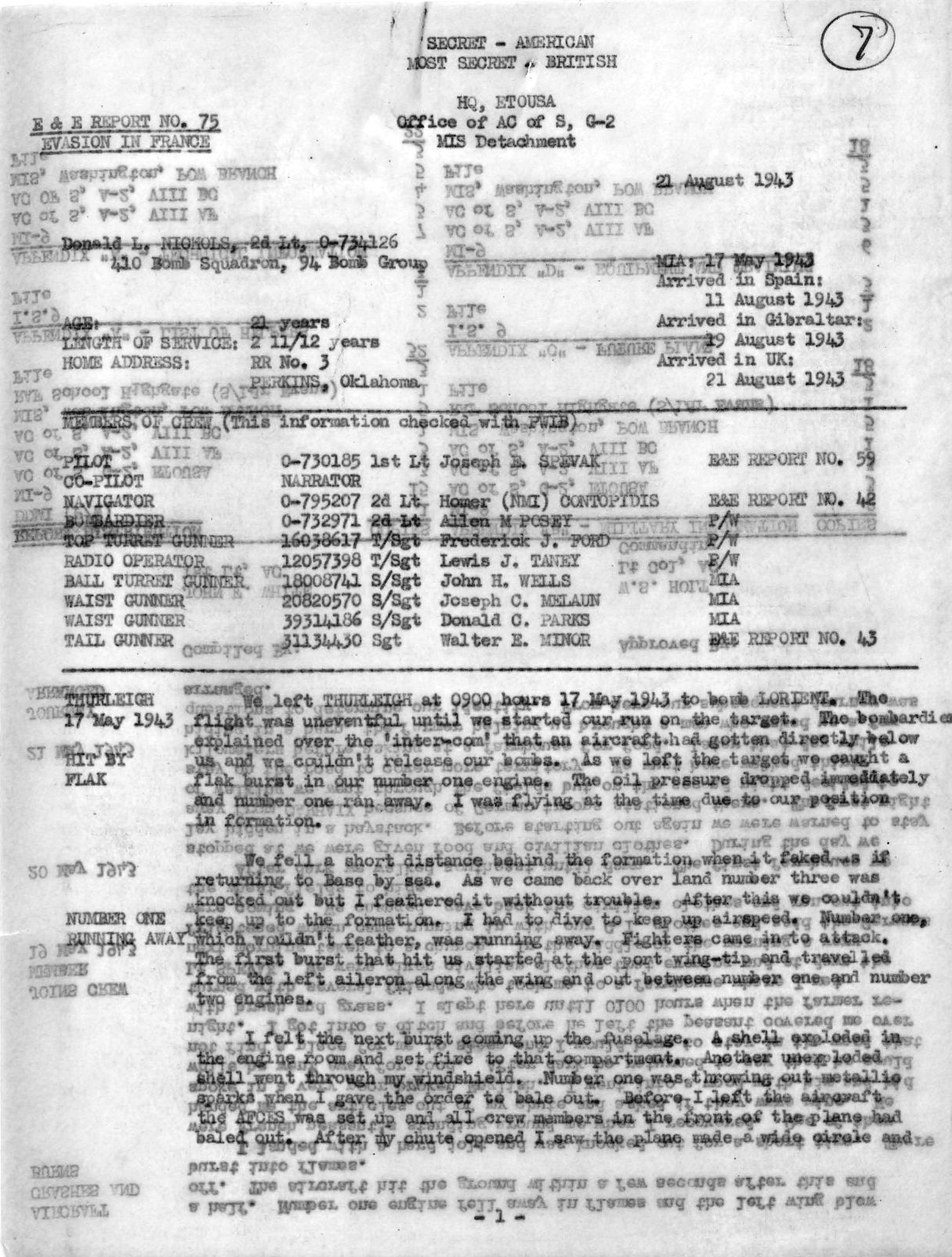
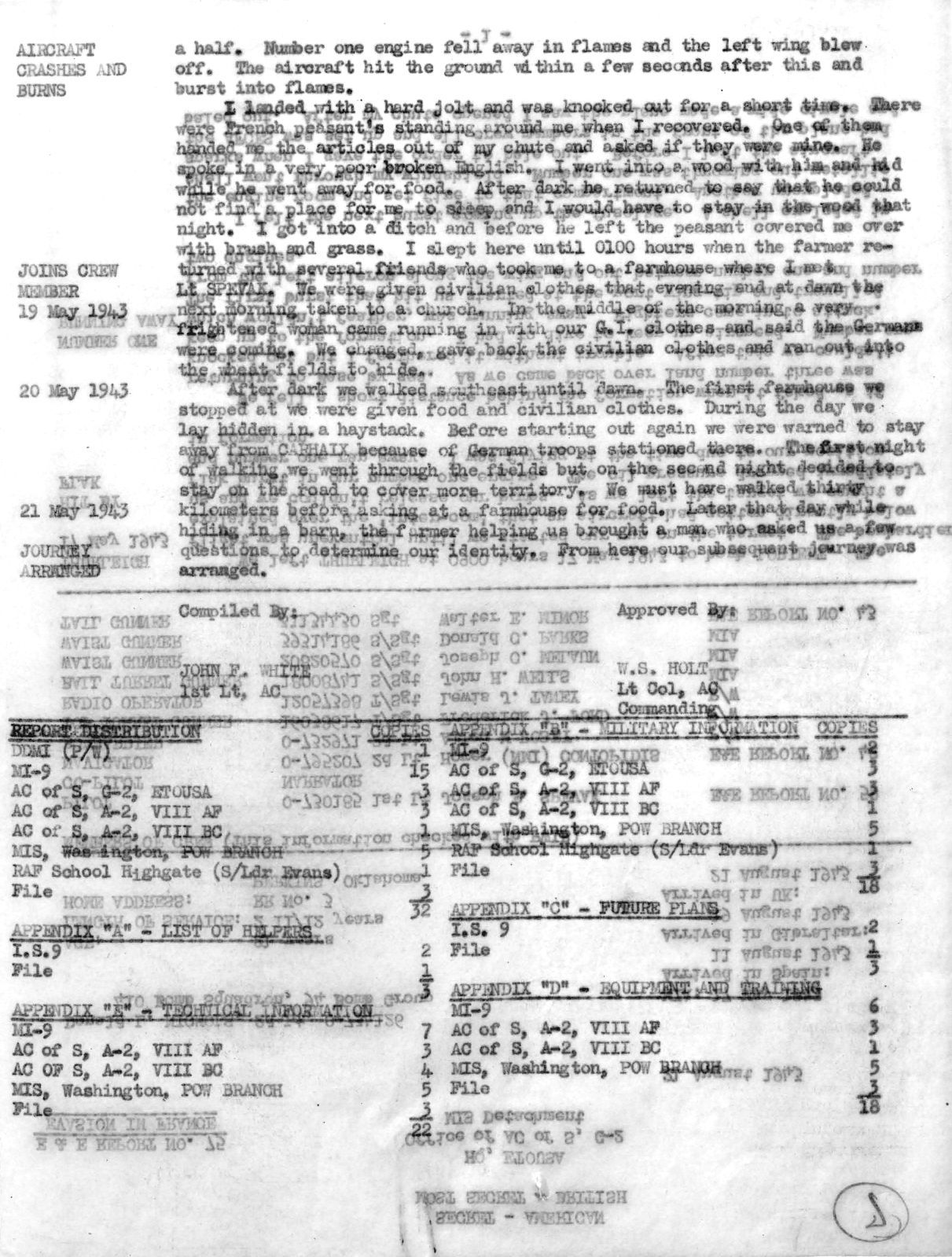
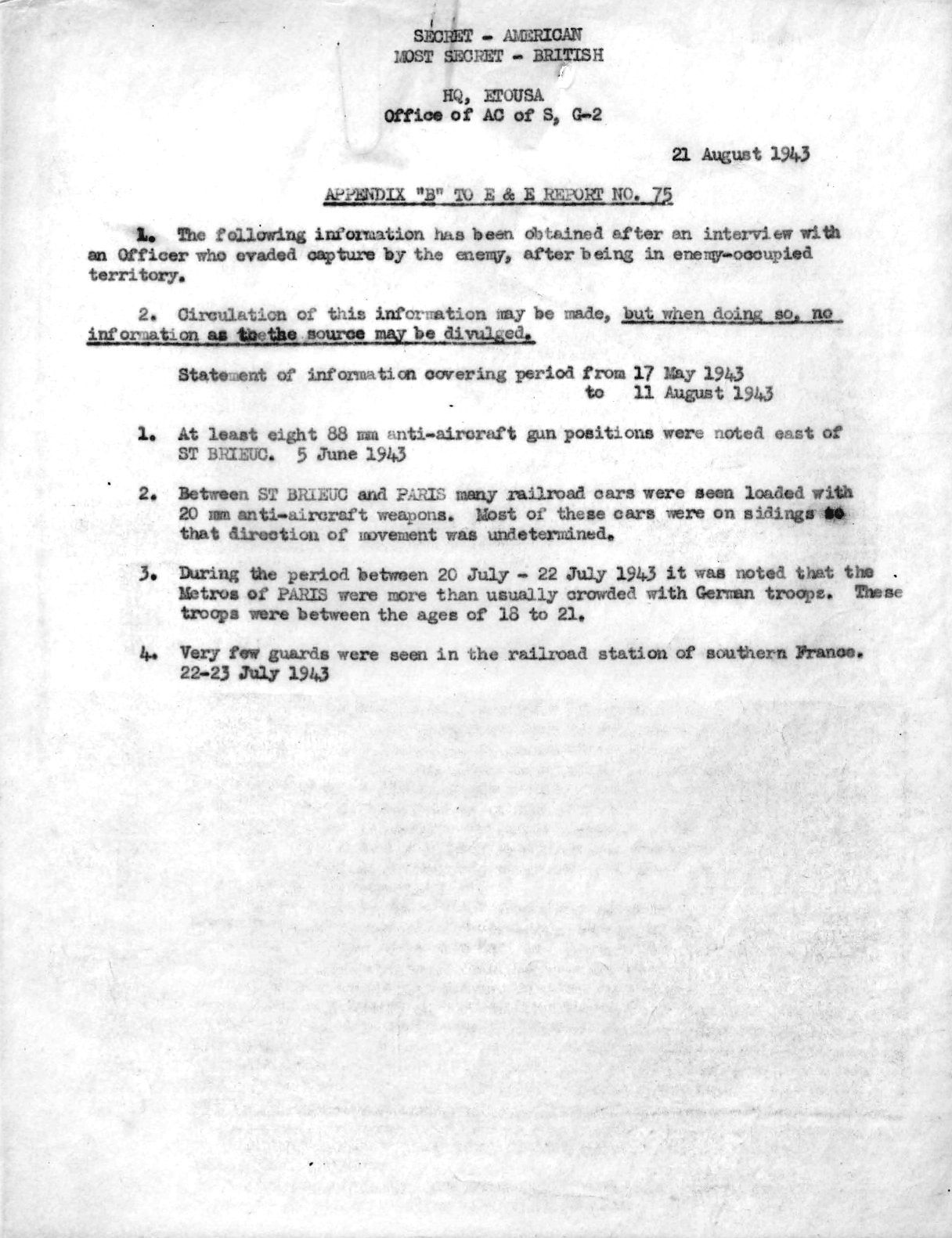
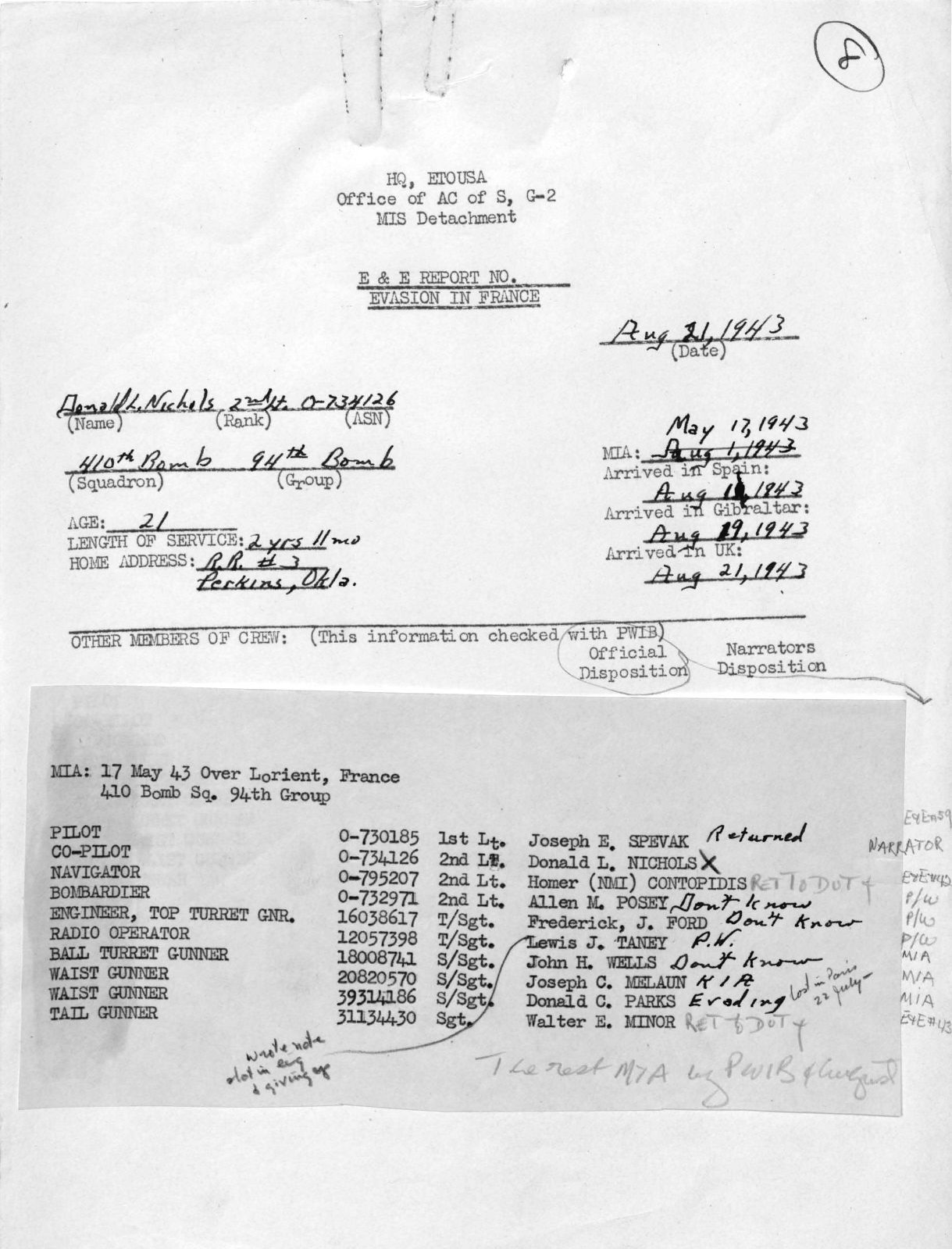
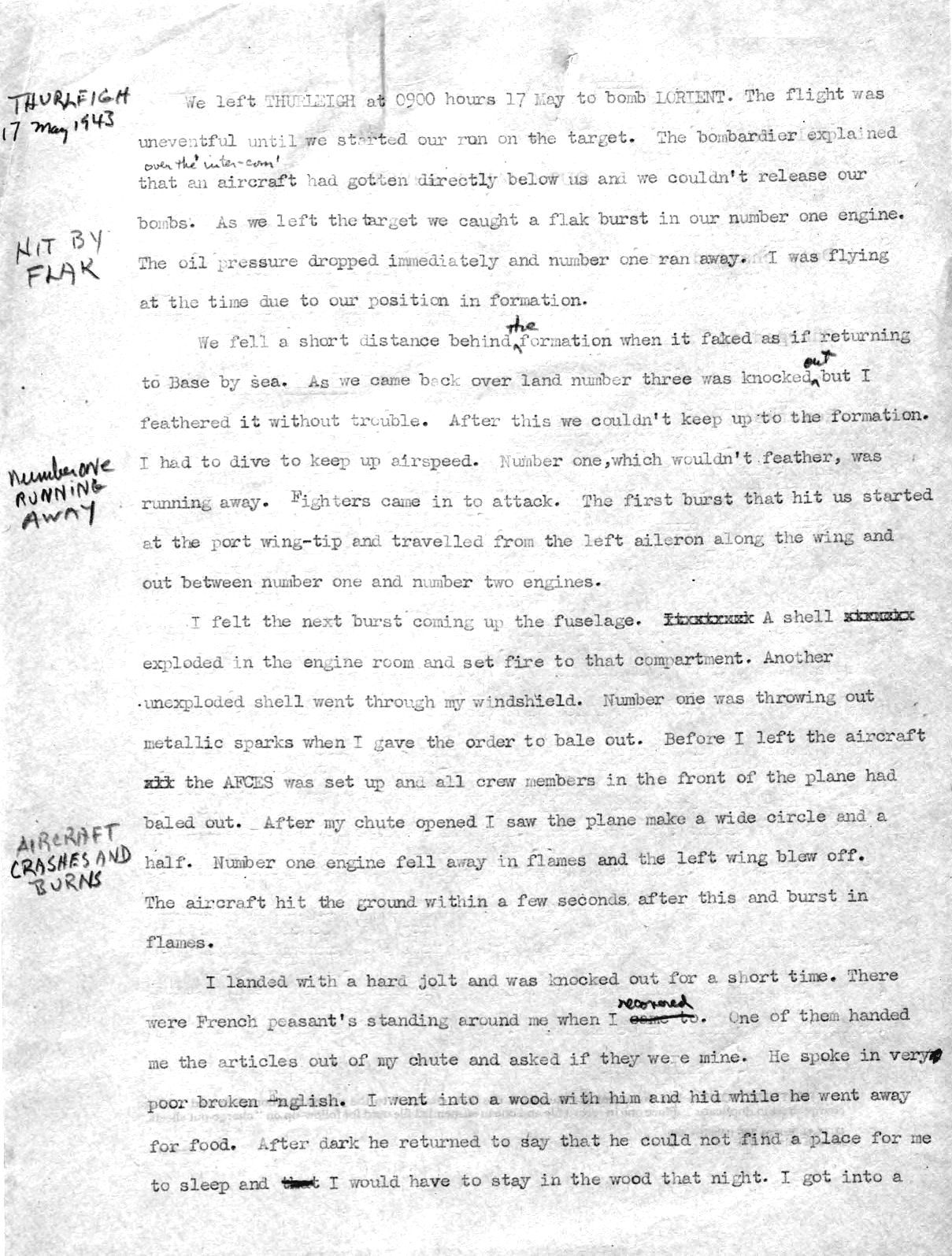
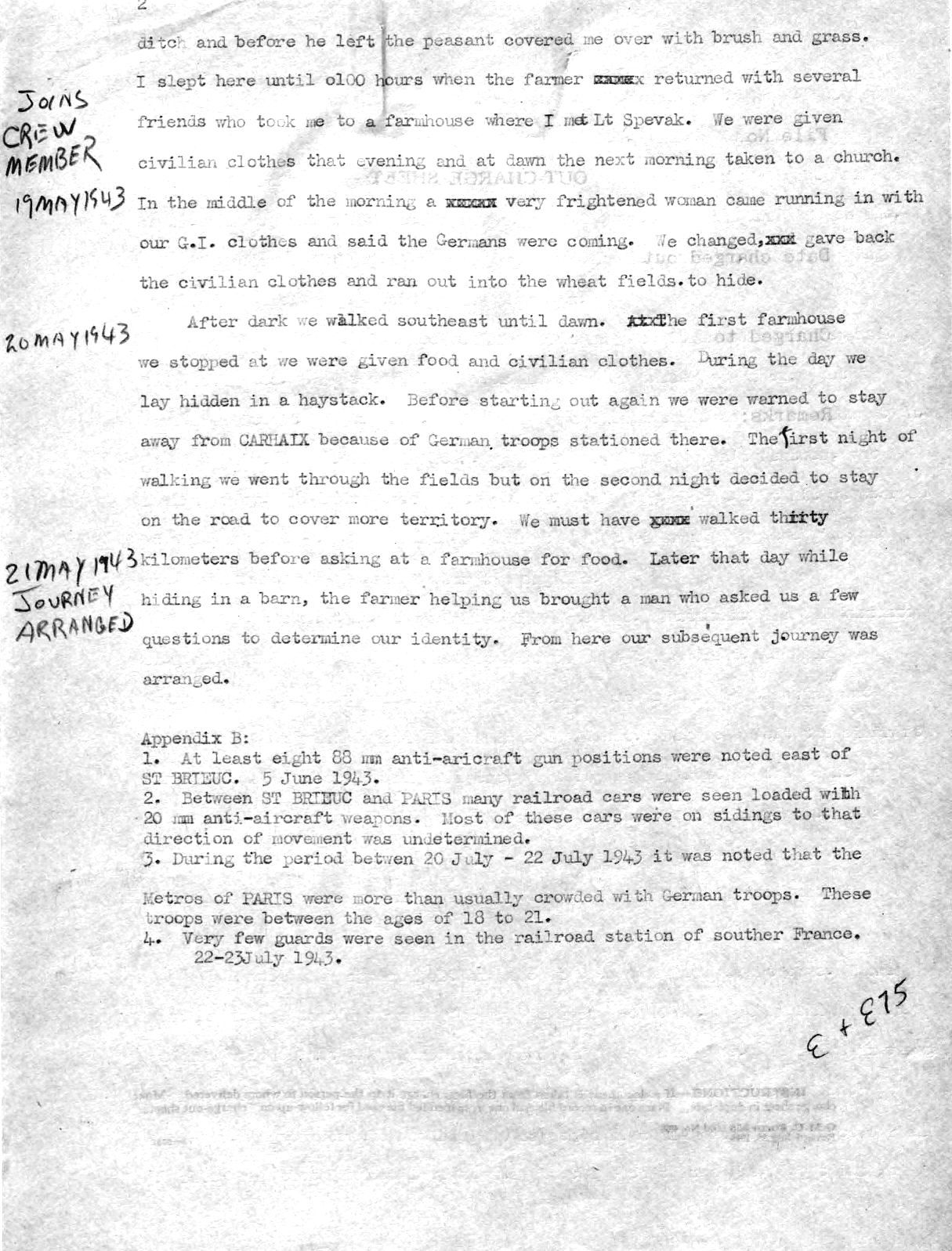
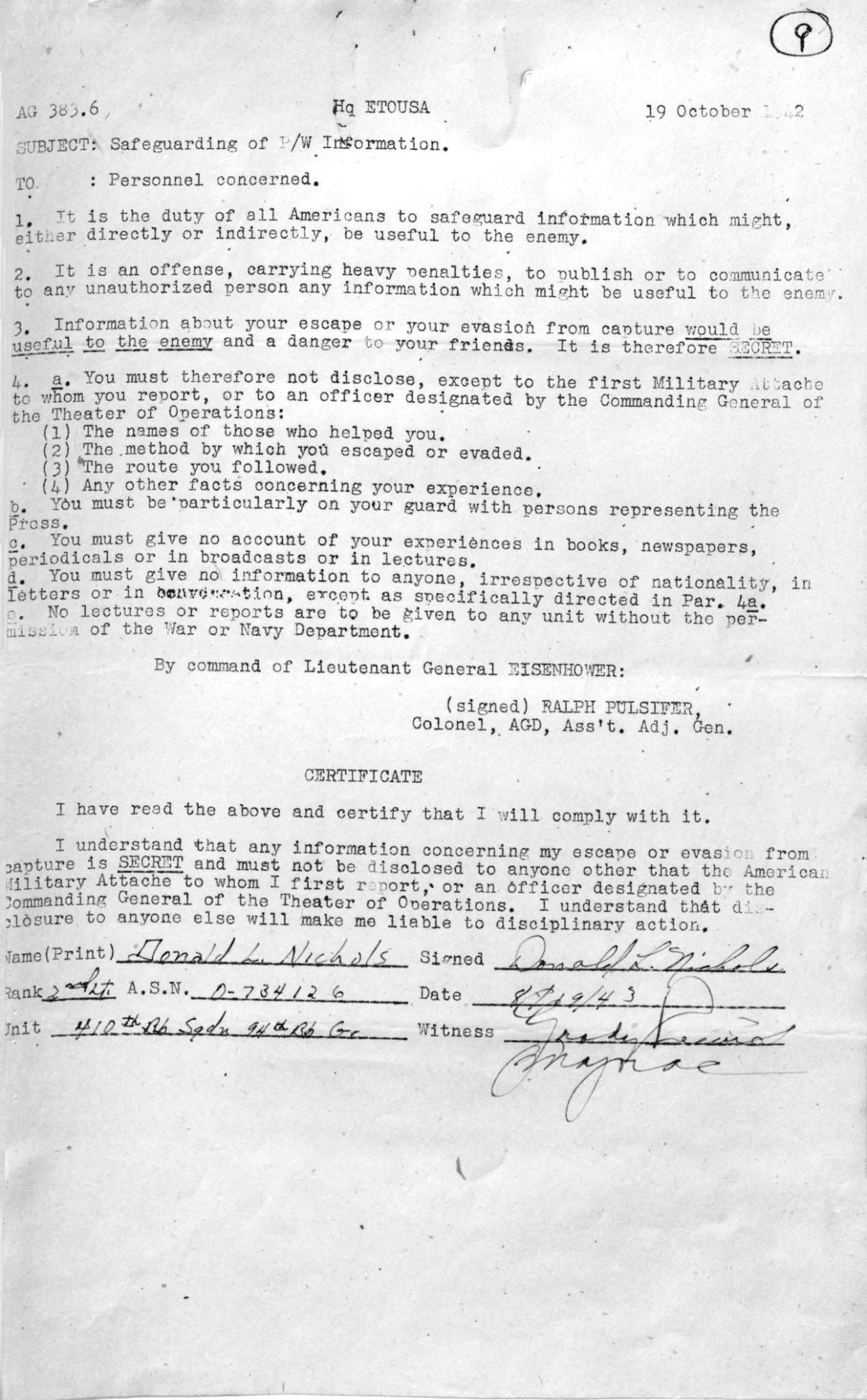

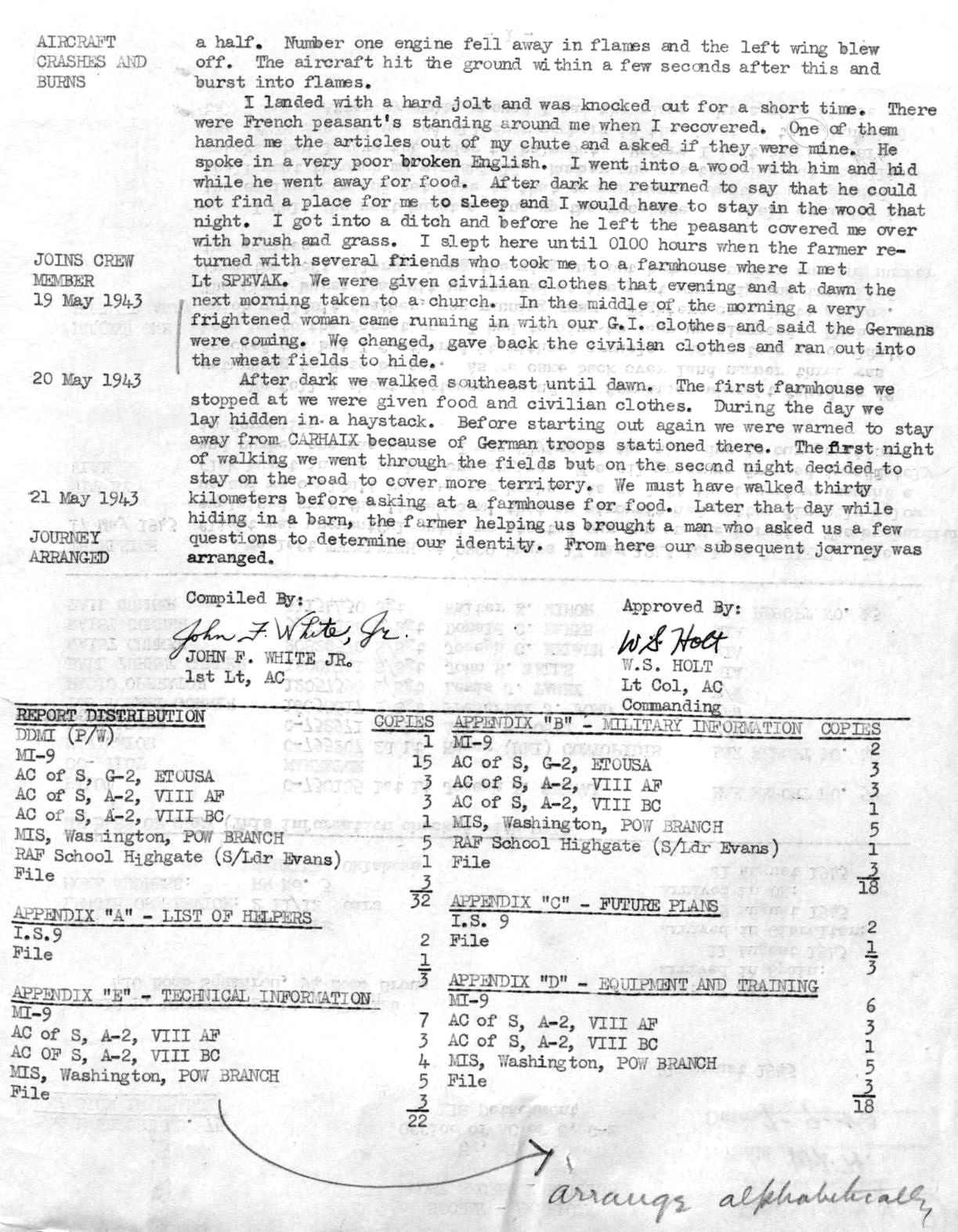
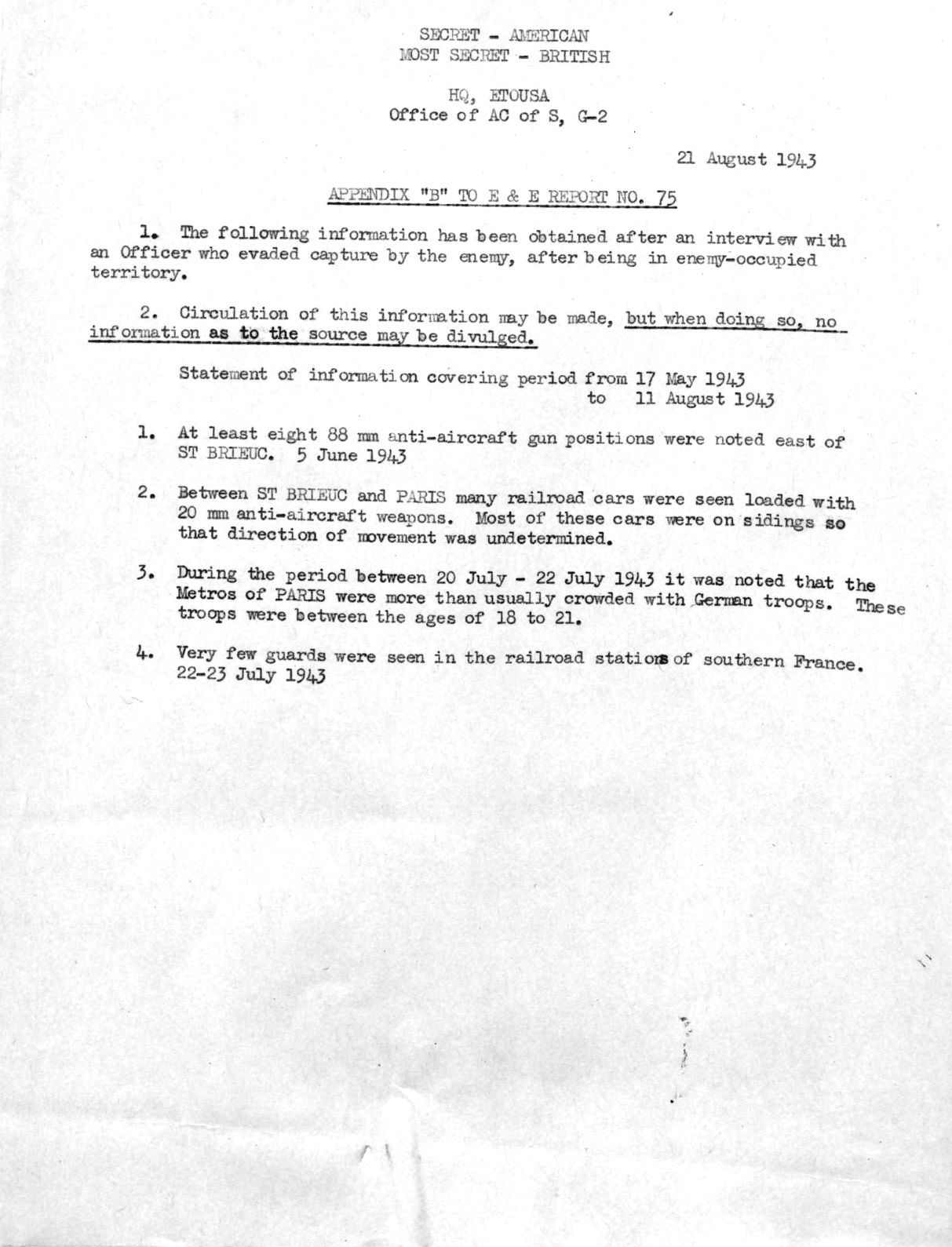
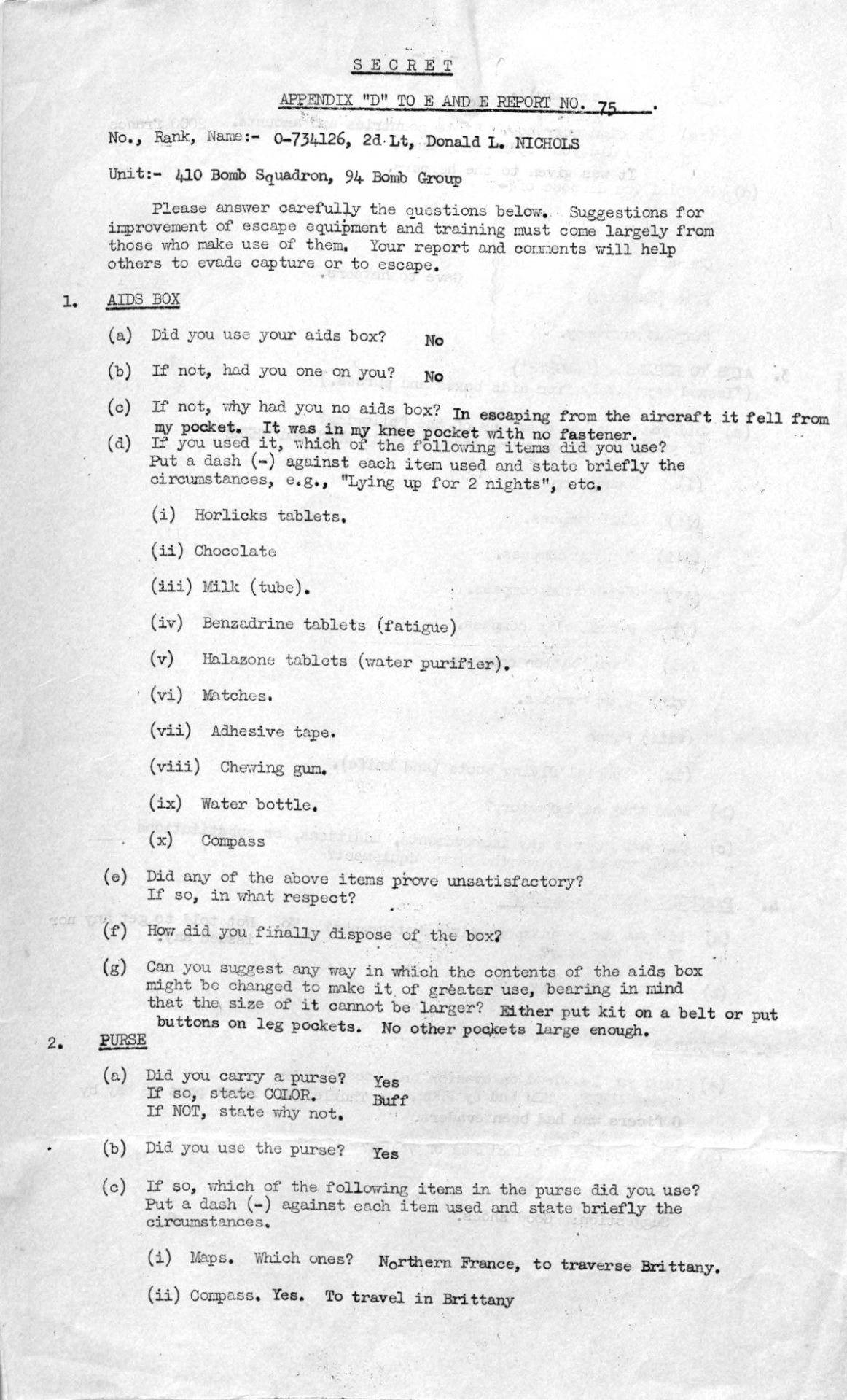
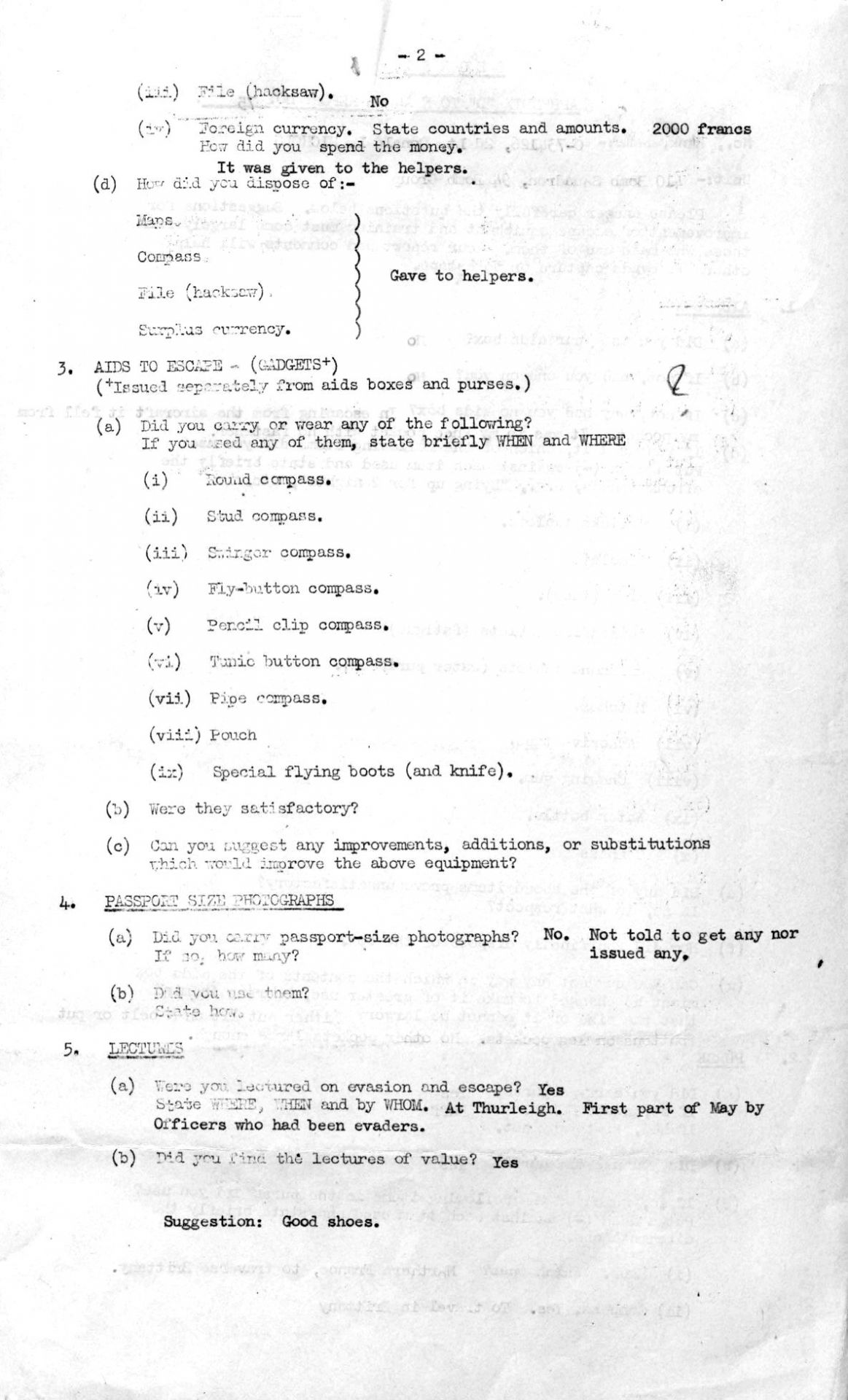
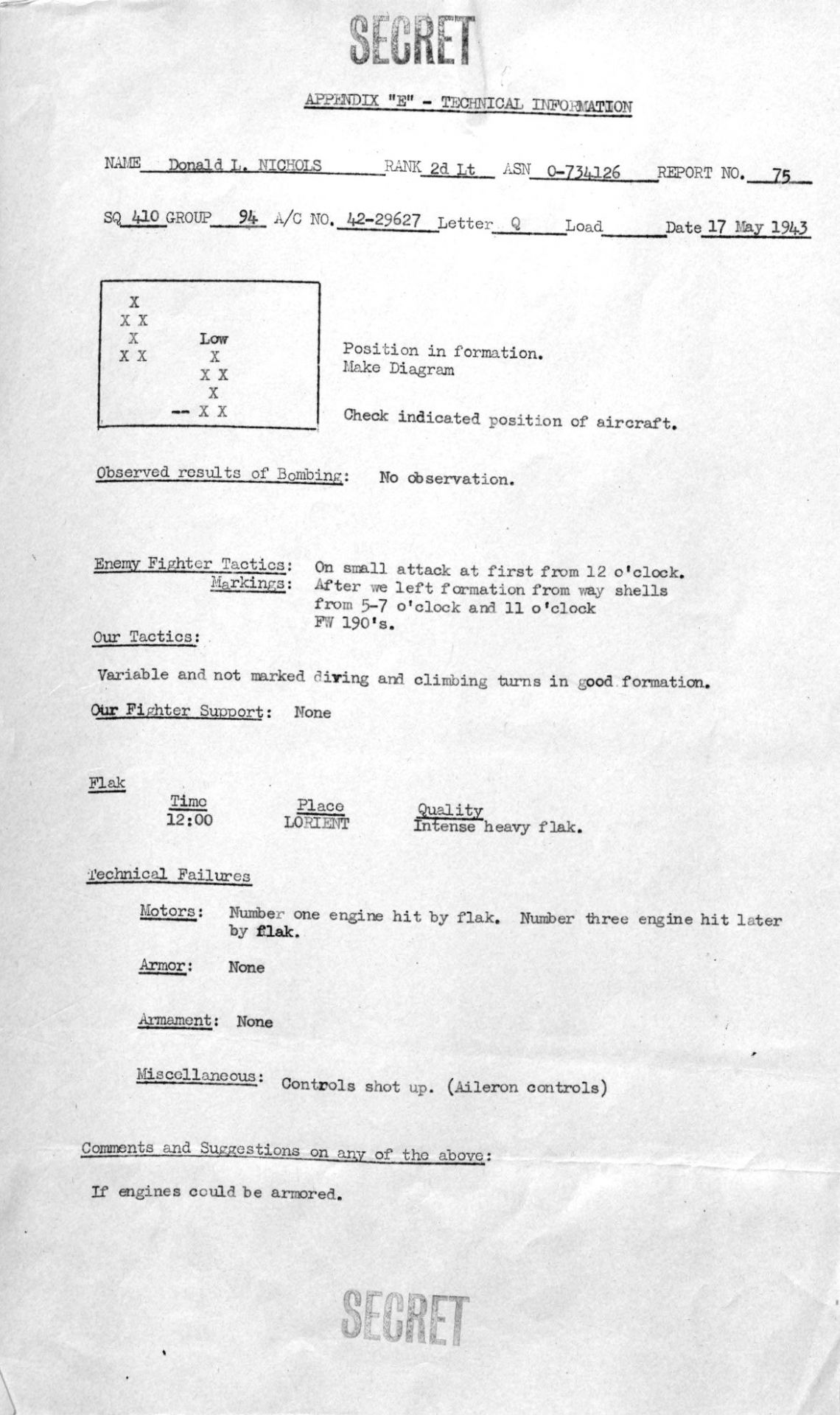

Ajouter un commentaire